
- Trekking In Nepal

Restricted Areas Treks in Nepal
- Updated on May 7, 2024
- Govinda Gurung
From east to west, Nepal has numerous restricted zones that call for special trekking and travel permits. Some areas of Nepal have restricted zones that forbid arbitrary access without a special permit from the Department of Immigration. Trekking in Nepal's remote regions was forbidden to foreign visitors until 1991 AD. These forbidden zones run the entire length of the nation, east to west. But after multiparty democracy was established in 1990 AD, the laws were changed, and outsiders were now able to enter these formerly inaccessible trekking areas by obtaining a special permit.
In Nepal, areas designated as Restricted Areas are those where the government of Nepal has placed the greatest value on protecting the natural environment, heritage of culture, and other important elements. Restricted Area Permits (RAPs) are given to govern and control certain regions, and entry is subject to various restrictions. Any visitor seeking a singular experience in this country should make every effort to visit one of the restricted zones; it promises to be a fantastic journey. This page focuses on these regions, their contents, and the RAPs that must be present in them.
Many tourists ask why certain parts of Nepal are off-limits to visitors. The trekkers' security and safety is a simple explanation. Restricted zones are mostly found in the high altitudes that border Tibet. Since there is little human habitation and little traffic on the trail, these locations are thought to be dangerous for independent visitors. The cessation of unauthorized visitor entry into Nepal's remote regions that border China-controlled Tibet could be another factor.
Table of Content
The governing body that oversees nepal's restricted areas.
The Department of Immigration and other pertinent Authorities assist the Nepalese government in enforcing legislative laws to manage access to these restricted locations. These rules cover things like the need for permits, required guided tours, permit fees, how long permits are valid, and how closely rules about local customs, environmental standards, and cultural sensitivities must be followed.
Differentiating Between Restricted and Accessible Areas

Nepal's accessible regions offer open access, a well-developed infrastructure for tourists, and ease of accessibility. On the other hand, because of their difficult terrain, isolation, importance to conservation, or security issues, restricted regions require specific licenses.
In Nepal, who has to get a permit to enter restricted areas?
A Restricted locations Permit (RAP) is required for foreign nationals to enter certain locations, such as Upper Mustang , Manaslu , Tsum Valley , etc. These RAP permits are extra expensive and are only available via an approved trekking agency and the Department of Immigration in Kathmandu.
Trekkers can trek as Free Individual Trekkers (FIT), without a guide or agency, on many popular trekking trails, such as the Everest Region Trek , the Annapurna Region Trek , the Langtang Region Trek , etc., by paying the conservation areas' entrance fee, which can be easily obtained in the Nepal Tourism Board office in Kathmandu or Pokhara.
Upper Mustang

The region of Upper Mustang is found in Nepal's north-central region. Because of its location in the Himalayan rain shadow, the area has a distinctive desert-like appearance. It is constrained to preserve its old customs and culture, which are influenced by Tibet. To explore this mysterious country, visitors must get a special Restricted Area Permit (RAP) and go with a recognized trekking firm. The walled city of Lo Manthang, historic monasteries, vibrant rock formations, sky caves, eerie customs like Sky Burial, Bon and Buddhist traditions, and breathtaking vistas of the Annapurna and Nilgiri mountains are among the main draws.
Restricted Parts:
- Lo Manthang Rural Municipality (Ward nos. 1 to 5 all areas)
- Lo-Gekar Damodar Kunda Rural Municipality (Ward nos. 1 to 5 all areas)
- Baragung Mukti chetra Rural Municipality (Ward nos. 3 all areas and Satang village of ward no 5)
Upper Mustang RAP Costs:
- USD 500 per person (10 days) + extra USD 50 per person per day (beyond 10 days)
Manaslu Trek

The Manaslu region is renowned for offering tourists from outside the country some of the greatest natural and cultural attractions. It does, however, contain two distinct restricted zones; the Manaslu CA is the first. When following the standard route, you will spend more than five days in this region, beginning in Jagat and ending in Samagaon.
Restricted Parts:
- Tsumnubri Rural Municipality (Ward nos. 1 to 4 all areas )
Manaslu Conservation Area RAP Costs:
- USD 100 per person (7 days) + extra USD 15/person per day (beyond 7 days) [Sep-Nov]
- USD 75 per person (7 days) + extra USD 10/person per day (beyond 7 days) [Dec-Aug]
Manang Nar Phu Valley

When visiting the generally well-known Annapurna Region, visitors can get the ideal off-the-beaten-path experience in the Nar Phu region. Trekkers can reach the historically, traditionally, and culturally significant settlements of Nar and Phu by taking a diversion off the main track. Many people view this walk as a well-preserved equivalent of the Upper Dolpo in western Nepal.
- Narpa Rural Municipality (Ward nos. 1 to 5 all areas)
- Nasho Rural Municipality (Ward nos. 6, and 7 all areas)
Manang Nar Phu RAP Costs:
Makalu Region

With stunning views of both the Everest and Kanchenjunga massifs, the Makalu region offers visitors exciting travel opportunities. The Kimathanka, Chepuwa, Hatiya, and Pawakhola villages—and, more significantly, the Makalu Barun National Park—are situated inside the restricted region. It's a great place to take pictures of wildlife as well.
- Bhot Khola Rural Municipality (Ward nos. 1 to 5 all areas)
- Makalu Rural Municipality (Ward no. 4 all areas)
Sankhuwasabha Makalu Region RAP Costs:
- USD 10 per person (first 4 weeks) + extra USD 20 per week (beyond 4 weeks)
Upper Dolpo

Upper Dolpo, which is in the extreme west, is well known for its untamed landscape and isolation. Its scope is limited to preserving its unspoiled natural beauty and safeguarding the cultural legacy of its native Dolpo-pa people.
Entering this restricted area requires obtaining a specific RAP. The Phoksundo Lake, Shey Gompa, distinctive Bon, and Buddhist temples, and the opportunity to see the people's nomadic way of life are some of the major attractions of Upper Dolpo.
- Dolpo Buddha Rural Municipality (Ward nos. 4 to 6 all areas)
- Shey Phoksundo Rural Municipality (Ward nos. 1 to 7 all areas)
- Charka Tangsong Rural Municipality (Ward nos. 1 to 6 all areas)
Upper Dolpo RAP Costs:
- USD 500 per person (10 days) + extra USD 50 per day (beyond 10 days)
Lower Dolpo

Situated in the Midwest, Lower Dolpo is restricted to preserve its natural beauty and cultural legacy. The region is well-known for its untamed landscape, historic monasteries, and ethereal Phoksundo Lake. To visit Lower Dolpo, visitors must receive a RAP.
- Thuli Bheri municipality (Ward nos. 1 to 11 all areas)
- Tripurasundari municipality (Ward nos. 1 to 11 all areas)
- Dolpo Buddha Rural Municipality (Ward nos. 1 to 3 all areas)
- Shey Phoksundo Rural Municipality (Ward nos. 8 and 9 all areas)
- Jagdulla Rural Municipality (Ward nos. 1 to 6 all areas)
- Mudkechula Rural Municipality (Ward nos. 1 to 9 all areas)
- Kaike Rural Municipality (Ward nos. 1 to 7 all areas)
Lower Dolpo RAP Costs:
- USD 20 per person (7 days) + extra USD 5 per day (beyond 7 days)
When I'm in a medical emergency and a restricted area, do I get helicopter rescue?
Oh, without a doubt! Helicopter rescue is an alternative if you find yourself in one of those forbidden zones in the event of a medical emergency. However, pause here as there are a few considerations you should make. The Civil Aviation Authority of Nepal (CAAN), the Immigration Department, and the Home Ministry must first issue you with a permit. This is the situation, my friend. There aren't many medical facilities in these limited locations because they are isolated. That is the primary reason for the existence of the helicopter rescue option. They leap in to turn the tide. In addition, they airlift you to a location where you can receive the necessary medical care.
Hold on, though. There's more! The district officer has to be informed about the rescue operation; after all, safety comes first. Thus, let the district officials know what's going on and bring them along in the helicopter. And the crew of the helicopter? They also require some information. such as the kind of helicopter they're flying and the direction they're going. In addition, how many heroes—er, passengers—will be traveling with them? To ensure that everything goes according to plan, they must have all the information. Helicopter rescue is an option if you're a visitor in these restricted zones and find yourself in a medical emergency.
- Nepaltrekinfo
- Base Camp Trek Nepal
- Himalayan Trekking Nepal
Send an Enquiry
Recent posts.
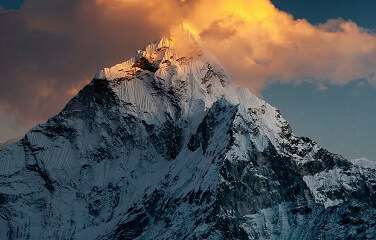
- Why the Reasons for trekking in the Himalayas Nepal
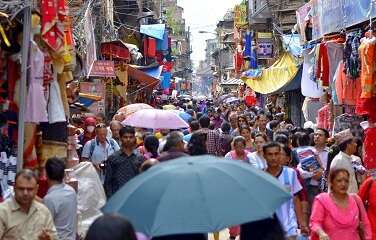
Best Day Trips From Kathmandu
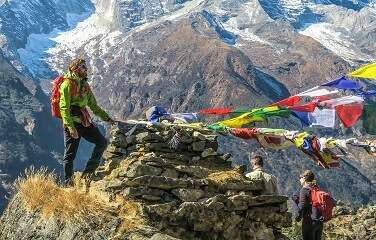
Himalayas Nepal Treks Booking open for 2024/25
Related posts.
- You Should Know About Annapurna Circuit Trek
- How different are the treks to Annapurna Base Camp and the Manaslu Circuit
- Top Trekking Packages in Nepal for the Autumn Season
- You should know all about Upper Mustang Trek
- Why is autumn the best trekking and Hiking season in Nepal
- How to Train for High Altitude Trekking in Nepal
- The best Luxury Treks in Nepal
- Annapurna Base Camp Trek
- Annapurna Trekking
- Everest Trekking in Nepal
- Helambu Trek Guide
- Himalayan Nepal
- Himalayan Trek
- Langtang Region Trekking
- Langtang Trek Guide
- Mount Everest Trekking
- Nepal Heritage Sites Tour
- Tour in Nepal


Blog Explained: All 15 Restricted Area Permits (RAPs) in Nepal for Trekkers, Cost Included
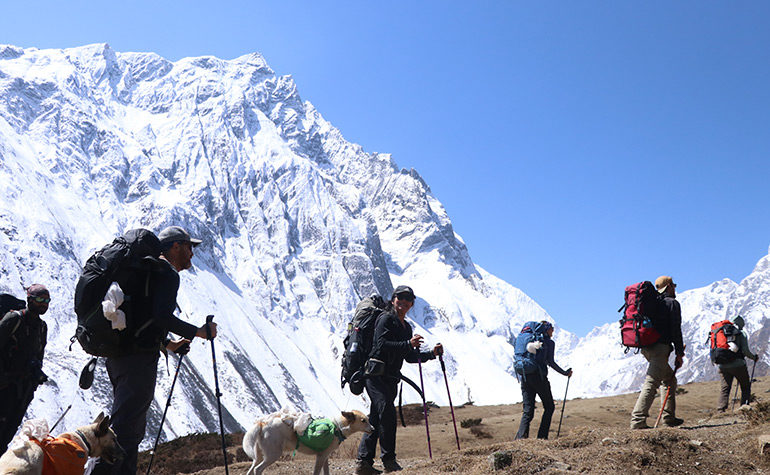
2 Mar 2022 Outdoor Himalayan
Blog-Explained: All 15 Restricted Area Permits (RAPs) in Nepal for Trekkers, Cost Included. Restricted Areas in Nepal are the regions in, which the Nepalese Government has given the utmost priority to the conservation of nature, culture, heritage, and other significant factors. There are certain limits to visiting these areas and Restricted Area Permits (RAPs) are issued to control as well as manage them. For any traveler looking for a unique experience in this nation a trip to one of the restricted areas through any means will be a wonderful experience. This article focuses on these regions, what they encompass, and the RAPs required to be there.
Most restricted areas in Nepal require at least a group of two people to apply for the permits. For trekkers, these might include the guide or other fellow travelers to that region. This rule is to better maintain the activities in these special regions and also for the safety of the visitors. As for where to apply for the permits, you can attain all these RAPs from the Department of Immigration Office in Kathmandu . No tourists can enter the RAPs with the special permits, even paying extra costs, and the permits can be issued only for the registered trekking agencies.
Restricted area permits are mandatory to legally travel, trek, tour, or explore these designated regions in Nepal. Make sure you make an extra copy of your RAPs alongside your other documents which will come in handy in case you lose the original. Similarly, you will have to show the permits at the checkpoints in different places as well as complete the entry/exit procedures. Make sure you know these posts will help you to complete your journey in Nepal without any hassle.
Here we have a detailed list of all the 15 restricted area permits in Nepal alongside the tentative cost for any visitors to get them.
1. Upper Mustang RAP
Required For: Upper Mustang Trek and Driving Tours
Upper Mustang is one of the most elusive regions in Nepal for any adventure-loving individual. It has been a prime bucket list entry for travelers. You would be required to have a dedicated permit to explore the Kingdom of Lo. The restricted area starts immediately from Kagbeni and there is the official checkpoint for your RAPs as well.
Restricted Parts :
- Lo Manthang Rural Municipality (Ward nos. 1 to 5 all areas)
- Lo-Gekar Damodar Kunda Rural Municipality (Ward nos. 1 to 5 all areas)
- Baragung Mukti chetra Rural Municipality (Ward nos. 3 all areas and Satang village of ward no 5)
Upper Mustang RAP Costs:
- USD 500 per person (10 days) + extra USD 50 per person per day (beyond 10 days)
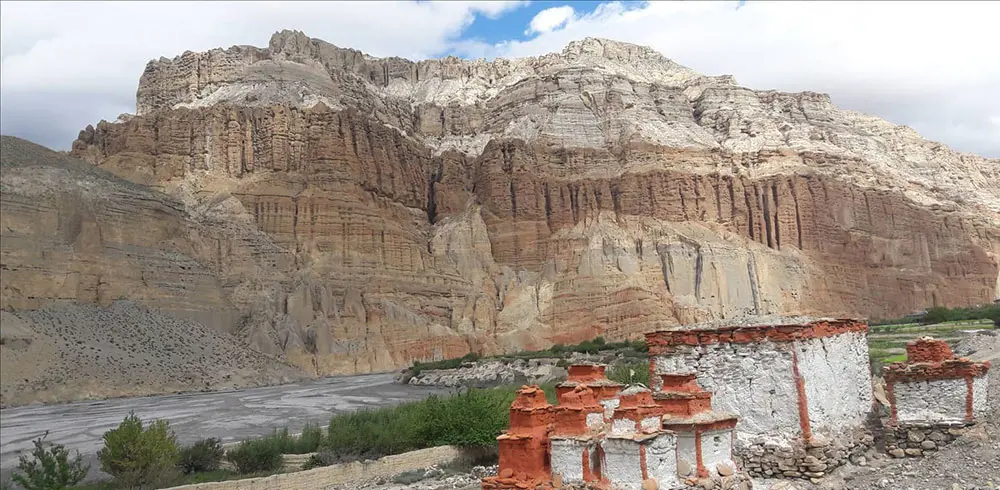
2. Manaslu Conservation Area RAP
Required For: Manaslu Circuit Trek, Manaslu Tsum Valley Trek
Manaslu region is known to have some of the best natural and cultural delights for visitors of the outside world. However, it does have two different restricted regions the first of which is the Manaslu CA. This region starts from Jagat and while doing the regular circuit you will be in it for over 5 days till you’ve reached Samagaon.
Restricted Parts:
- Tsumnubri Rural Municipality (Ward nos. 1 to 4 all areas )
Manaslu Conservation Area RAP Costs:
- USD 100 per person (7 days) + extra USD 15/person per day (beyond 7 days) [Sep-Nov]
- USD 75 per person (7 days) + extra USD 10/person per day (beyond 7 days) [Dec-Aug]
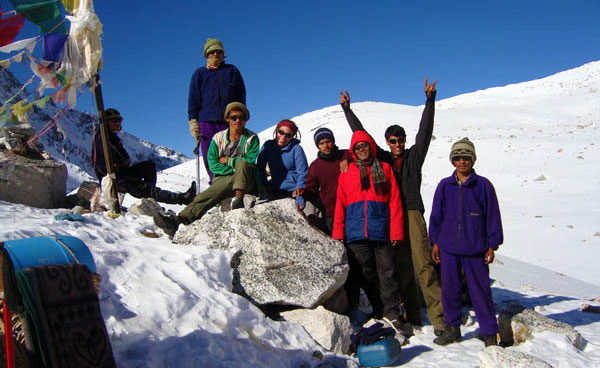
3. Lower Dolpo RAP
Required For: Lower Dolpo trek
Dolpo region lies in the district of Dolpa, the biggest district in Nepal. It is home to some of the best-preserved cultures and lifestyles you’ll see in the mid-western rural zones of Nepal. There are two distinct restricted areas here the first of which is the Lower Dolpo. As the name suggests, Lower Dolpo covers the lower region of the Dolpa district.
- Thuli Bheri municipality (Ward nos. 1 to 11 all areas)
- Tripurasundari municipality (Ward nos. 1 to 11 all areas)
- Dolpo Buddha Rural Municipality (Ward nos. 1 to 3 all areas)
- Shey Phoksundo Rural Municipality (Ward nos. 8 and 9 all areas)
- Jagdulla Rural Municipality (Ward nos. 1 to 6 all areas)
- Mudkechula Rural Municipality (Ward nos. 1 to 9 all areas)
- Kaike Rural Municipality (Ward nos. 1 to 7 all areas)
Lower Dolpo RAP Costs:
- USD 20 per person (7 days) + extra USD 5 per day (beyond 7 days)
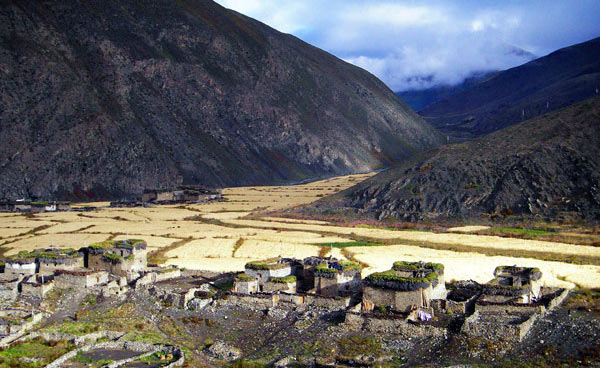
4. Upper Dolpo RAP
Required For: Upper Dolpo trek, Kang La Pass trek
The region of Upper Dolpa is one of the best-untouched paradises in the Nepalese Himalayas. This restricted area has a long history and scenic natural beauty that any adventure-loving traveler will admire. Upper Dolpo alongside the multiple passes is considered by many as the best value destination for off-the-beaten-track trekking in the world.
- Dolpo Buddha Rural Municipality (Ward nos. 4 to 6 all areas)
- Shey Phoksundo Rural Municipality (Ward nos. 1 to 7 all areas)
- Charka Tangsong Rural Municipality (Ward nos. 1 to 6 all areas)
Upper Dolpo RAP Costs:
- USD 500 per person (10 days) + extra USD 50 per day (beyond 10 days)
5. Humla Rural Municipality RAP
Required For: Simikot Limi Valley Trek
Humla District is one of the underrated destinations in Nepal which has in recent years gained a cult following among trekking operators. Similar to the alpine highlands of Switzerland and Italy, the Limi Valley section is amazing to travel and explore. The RAP of Humla will allow you to travel in all the Simikot, Changkheli, and Namkha Rural Municipalities here.
- Simikot Rural Municipality (Ward nos. 1, 6, and 7 all areas)
- Namkha Rural Municipality (Ward nos. 1 to 6 all areas)
- Changkheli Rural Municipality (Ward nos. 3 to 5 all areas)
Humla Rural Municipality Costs:
- USD 50 per person (7 days) + extra USD 10 per day (beyond 7 days)
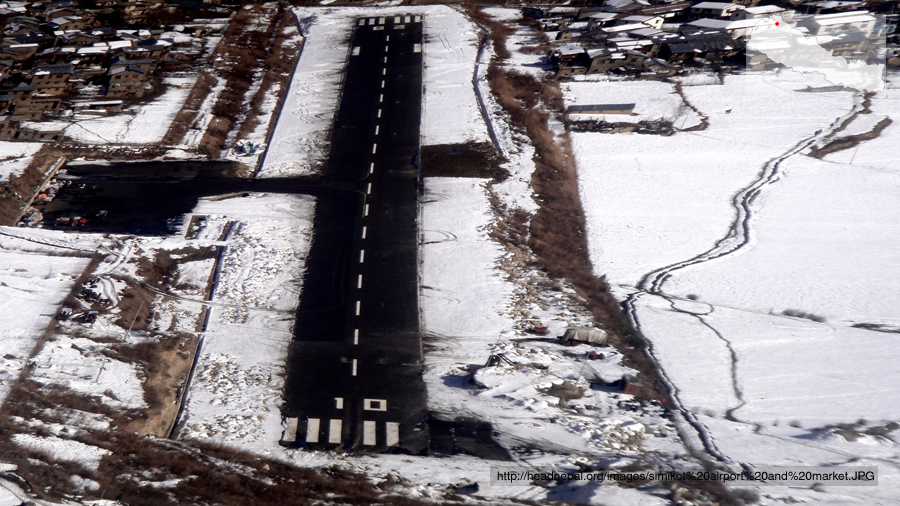
6. Rasuwa Gosaikunda RAP
Required For: Gosaikunda Lake Trek, Langtang Gosaikunda Helambu Trek
This permit is slightly different from the others in the list as it also encapsulates the religious (pilgrimage) factors in the destination. Gosaikunda Lake is one of the holiest places for Hindu and Buddhist devotees. Additionally, this region is also popular for the Tamang Heritage trail which is a wonderful experience for trekkers in Nepal.
- Gosaikunda Rural Municipality (Ward no.1 all areas and Ward no.2 some areas)
Rasuwa Gosaikunda RAP Costs:
- USD 20 per person per week
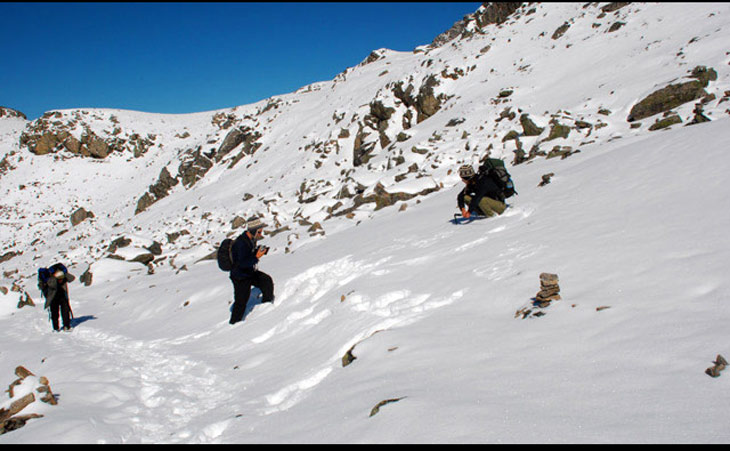
7. Solukhumbu RAP for Rural Municipality
Required For: Makalu Barun NP trek, Great Himalayan Trail
The Solukhumbu region is so much more than the regular Everest Base Camp areas. Travelers can enjoy an amazing blend of nature and culture while exploring the Khumbu area. This restricted area encompasses the areas of Bhotikhola and Makalu rural municipality.
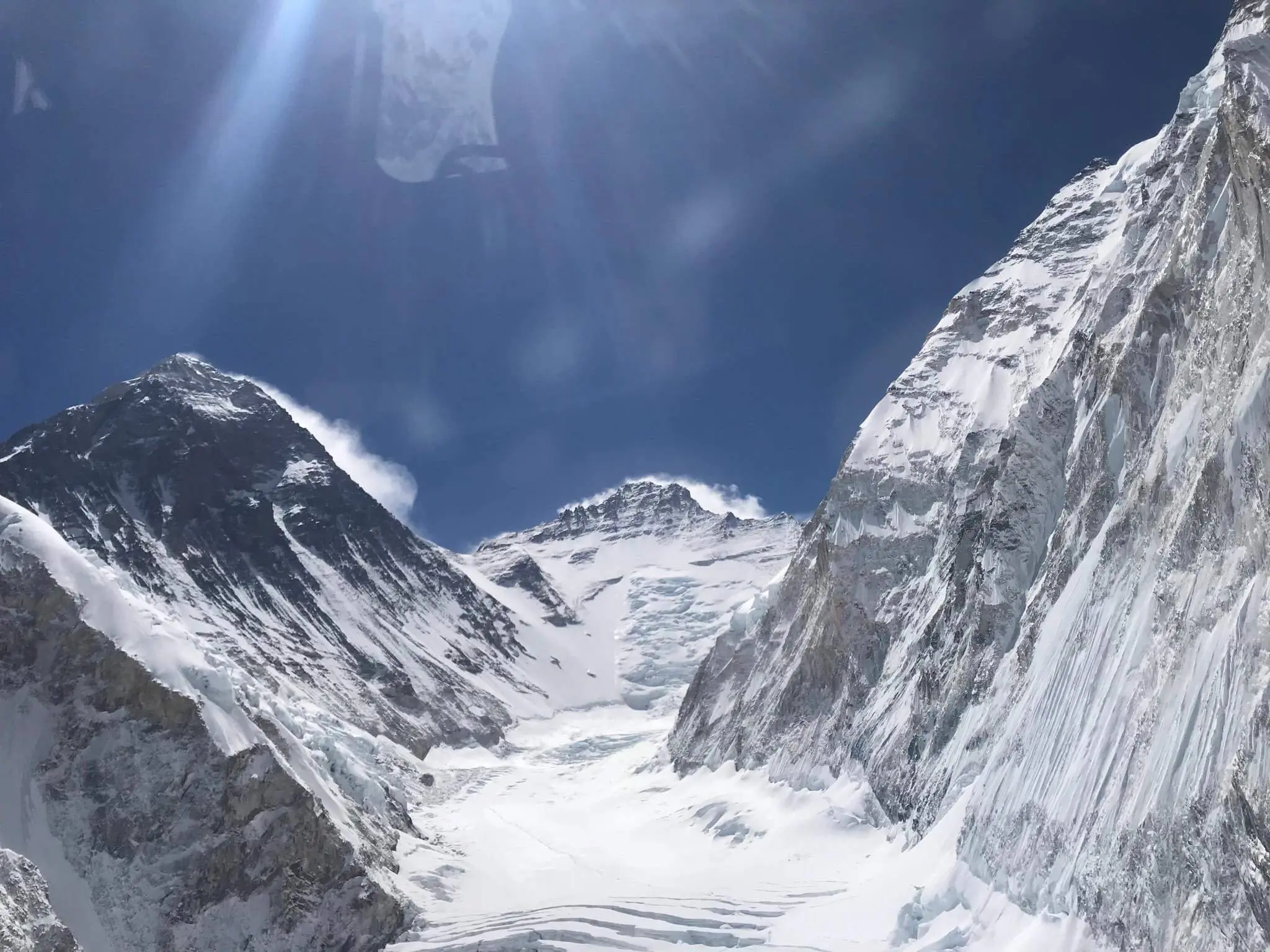
- Khumbu Pasang Lhamu Rural Municipality (Ward no. 5 all areas)
Solukhumbu Rural Municipality RAP Costs :
- USD 20 per person (first 4 weeks) + extra USD 25 per week (beyond 4 weeks)
8. Makalu Region RAP, Sankhuwasabha District
Required For: Makalu Base Camp trek, Barun Valley Trek
Makalu region is situated beautifully between the Everest and Kanchenjunga massifs with promising experiences for travelers. The restricted area is located inside the Makalu Barun National park and more importantly the Kimathanka, Chepuwa, Hatiya, and Pawakhola villages. It is also a prime location for wildlife photography.
- Bhot Khola Rural Municipality (Ward nos. 1 to 5 all areas)
- Makalu Rural Municipality (Ward no. 4 all areas)
Sankhuwasabha Makalu Region RAP Costs:
- USD 10 per person (first 4 weeks) + extra USD 20 per week (beyond 4 weeks)
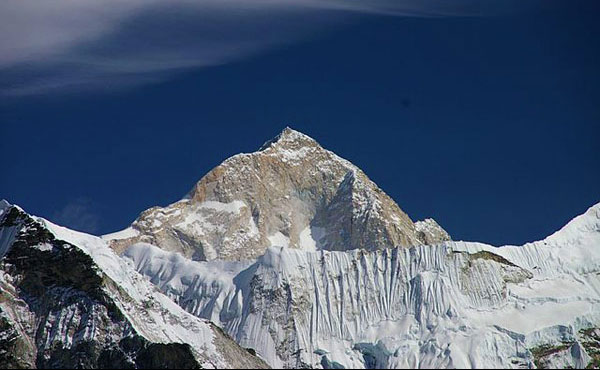
9. Manang Nar Phu region RAP
Required For: Nar Phu Valley Trek, Kang La Pass Trek
The Nar Phu region provides the perfect off-the-beaten-track experience for travelers in the otherwise popular Annapurna Region. Leaving the main track the trail leads trekkers to the traditional villages of Nar and Phu with historical, traditional, and cultural significance. This trek is considered by many as a well-conserved counterpart to the Upper Dolpo in western Nepal.
- Narpa Rural Municipality (Ward nos. 1 to 5 all areas)
- Nasho Rural Municipality (Ward nos. 6, and 7 all areas)
Manang Nar Phu RAP Costs:
10. Gorkha Tsum Valley RAP
Required For: Tsum Valley Trek, Manaslu Tsum Valley Trek
Tsum Valley and especially the traditional villages here is a gem of a location frozen in time and yet untouched by Western trends and modernization. It is no surprise that the Nepalese Government has put a major emphasis on preserving the ancient lifestyle, tradition, culture, and monuments here. The area of Sirdibas, Lokpa, Chumling, Nile, Chekampar, and Chule alongside the Tsumnubri rural municipality is only accessible with a permit.
- Sirdibas-Lokpa-Chumling-Chekampar-Nile-Chule
- Tsumnubri Rural Municipality (Ward nos. 3, 6, and 7 all areas)
Gorkha Tsum Valley RAP Costs:
- USD 40 per person (7 days) + extra USD 7/person per day (beyond 7 days) [Sep-Nov]
- USD 30 per person (7 days) + extra USD 7/person per day (beyond 7 days) [Dec-Aug]
These were the major restricted areas in Nepal where travelers frequently choose to experience something special. Apart from these, there are five more restricted areas in Nepal covering the rural municipalities around the country. Let’s cover them briefly as well including cost.
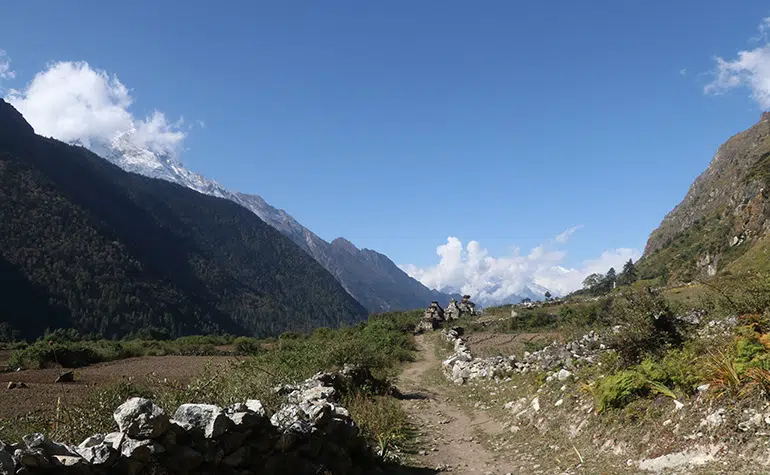
11. Taplejung Rural Municipality RAP
Required For: Traveling in Phantanglung, Mikwakhola, and Sirijunga Rural Municipalities
T aplejung Rural Municipality RAP Costs:
- USD 20 per week (first 4 weeks) + extra USD 25 per week (beyond 4 weeks)
12. Dolakha Rural Municipality RAP
Required For: Traveling in Gaurishankar and Bighu Rural Municipalities
Dolakha Rural Municipality RAP Costs:
13. Mugu Rural Muncipality RAP
Required For: Exploring Muguma Karmarong Rural Municipality
Mugu Rural Municipality RAP Costs:
- USD 100 per person (7 days) + extra USD 15 per day (beyond 7 days)
14. Bajhang RAP
Required For: Saipal Rural Municipality
Bajhang RAP Costs:
- USD 90 per person (7 days) + extra USD 15 per day (beyond 7 days)
15. Darchula RAP
Required For: Api Nampa Trek, Vyas Rural Municipality
Darchula RAP Costs:
Some Tips/Guidelines for trekkers trekking in the restricted regions
- Respect the local culture, tradition, and norms.
- Consult with your guide or ask permission from the locals before entering the monasteries, temples, palaces, or taking pictures.
- Don’t wander off on your own as individual trekking is prohibited in restricted areas.
- Appropriate travel insurance is highly suggested covering the duration of your trek/tour.
- Stick to your itinerary and route. These permits have the approved route for you to follow.
- You will need these permits even if your primary destination doesn’t fall in here.
- Follow the conservation area/national Park/rural municipality rules if you are exploring inside it.
Getting your restricted area permit is simple and shouldn’t take more than an hour to get approved. Be a responsible visitor while here and take nothing but memories from these beautiful places. Restricted areas in Nepal promise some authentic experiences and adventures so don’t miss out on these while you are in this country. Feel free to leave your questions with us and OHT experts will answer them personally.
Updated: Dec 10, 2023
TAGS: All 15 Restricted Area Permits (RAPs) in Nepal for Trekkers annapurna region Bajhang Dolakha Dolpo Region Everest region Humla Region Langtang region Manaslu region RAPs Restricted Area Permits Trekkers Upper Mustang Upper Mustang RAP
Nepal Govt. Reged. number: 39829/2005
Tourism License number: 805/2005
VAT/TAX Number: 302385791

Gokyo Treks Nepal
Nepal Trekking Agency
From 2015 - 2024 contineously
+977 9841 249 988
Restricted Area Trek
Home » Restricted Area Trek
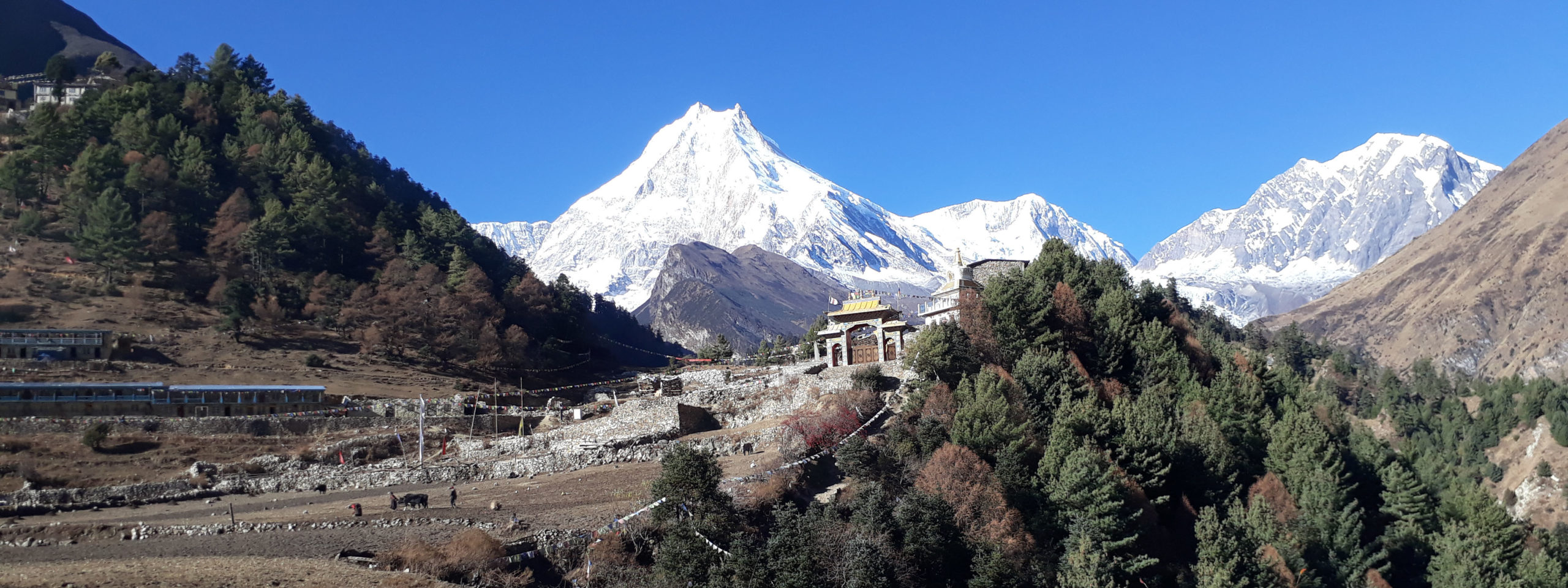
A restricted area trek refers to a trekking experience in a specific region of a country that is subject to special permits and regulations. These areas are often remote, less explore, and have unique cultural or environmental significance.
Restricted area treks provide adventurous travelers with the opportunity to explore off-the-beaten-path locations and immerse themselves in untouched natural beauty and indigenous cultures. These treks require obtaining special permits, traveling with register guides, and adhering to specific guidelines to ensure the preservation of the region and the safety of trekkers.
Nepal is a fantastic destination for trekking enthusiasts, offering a wide range of trekking options, including some restrict areas that require special permits. These special areas provide unique and off-the-beaten-path experiences for adventurous travelers. Here are a few popular restricted area treks in Nepal:
Upper Mustang Trek:
Located in the rain-shadow region of the Annapurna range, the Upper Mustang region offers a captivating blend of natural beauty and Tibetan culture. Trekking in this area requires a special permit, as it was once a forbidden kingdom. The landscape is characterized by barren valleys, ancient caves, and stunning rock formations.
Manaslu Circuit Trek:
This trek takes you around Mount Manaslu, the eighth highest peak in the world. The trail passes through remote villages, lush forests, glacial valleys, and high mountain passes. A restricted area permit is required for this trek, as it explores the culturally significant Nubry Valley and requires crossing the challenging Larke Pass .
Tsum Valley Trekking in Nepal
Tsum valley is a popular trekking destination in Nepal for several reasons. Firstly, it offers a unique cultural experience. The valley is home to the Tsumba people, who have their own distinct language, traditions, and lifestyle. The Tsumba culture is deeply rooted in Tibetan Buddhism, and trekkers have the opportunity to visit ancient monasteries, interact with friendly locals, and witness their religious ceremonies.
Secondly, Tsum Valley boasts stunning natural beauty. The trek takes you through picturesque landscapes, including lush forests, terraced fields, and towering Himalayan peaks. The valley is nestled between the Ganesh Himal and Sringi Himal ranges, providing breathtaking panoramic views throughout the journey.
Lastly, the recent opening of Tsum Valley for tourism has generated curiosity and interest among trekkers. Until 2008, the region was restricted, making it inaccessible to tourists. The sense of exclusivity and the opportunity to explore a relatively unexplored area have attracted many trekkers to venture into the Tsum Valley.
Nar and Phu Trekking in Nepal
The main reason for the restricted status is to protect the unique culture, traditions, and natural environment of the region. The Nar Phu valleys are home to ethnic Tibetan communities that have preserved their ancient way of life for centuries. The restricted access helps maintain their cultural integrity and prevent the negative impacts of mass tourism.
Furthermore, the area’s proximity to the Tibetan border raises security concerns. Nepal shares a sensitive border with China, and restrictions are in place to ensure the safety and sovereignty of the region.
While the permit requirement and restricted status may add some logistical challenges, it also contributes to the allure and exclusivity of the Nar Phu trek , attracting adventure seekers looking for off-the-beaten-path experiences and cultural immersion.
Kanchenjunga Base Camp Trek:
Mount Kanchenjunga is the third highest peak globally and offers a mesmerizing trekking experience in eastern Nepal. This region is less crowds and rich in biodiversity. Kanchanjunga Trekking requires a special permit and takes you through dense forests, terrace fields, remote villages, and stunning alpine landscapes.
Dolpo Trek:
Dolpo, located in the western part of Nepal, is a remote and culturally distinct region. Trekking in Dolpo takes you through Shey-Phoksundo National Park, which is renowned for its stunning turquoise lake, Phoksundo. The area is known for its unique Bon culture and Tibetan Buddhist traditions. A restricted area permit is required for Dolpo trek also.
Humla and Simikot Trek:
Humla and Simikot are regions in western Nepal that were previously designated as restricted areas for trekking. These areas have recently been opened up for tourism, allowing trekkers to explore their stunning landscapes and unique cultural heritage.
Humla, is in the far northwest of Nepal, is known for its remote and rugged terrain. It is home to the Limi Valley , which offers breathtaking views of snow-capped mountains, pristine lakes, and traditional Tibetan villages. The region showcases a blend of Tibetan and Nepali cultures, with monasteries, ancient caves, and traditional practices adding to its charm.
Simikot to Hilsa trek:
It’s an adventurous and remote trekking route in western Nepal, near the border with Tibet (China). It is part of the Great Himalayan Trail and offers a unique opportunity to explore the pristine landscapes and cultural treasures of the region.
Hike to Hilsa starts from Simikot, the administrative headquarters of Humla District, and follows a challenging trail through rugged terrain, deep river valleys, and high mountain passes. One of the highlights of this trek is crossing the Nara La Pass at an altitude of around 4,620 meters, which offers panoramic views of the surrounding peaks and valleys.
Journey to Hilsa from Simikot also takes you along the sacred Karnali River, and you may encounter nomadic herders and remote communities along the way. Additionally, trekkers traverse through picturesque villages, terraced fields, dense forests, and barren landscapes, experiencing the diverse beauty of the area.
It’s important to note that restricted area treks often have additional requirements, such as traveling with a registered guide and a minimum group size. These measures are in place to ensure the safety and preservation of the region.
Before embarking on any control area trek, it is advisable to gather up-to-date information and consult with a local trekking agency or the Department of Immigration in Nepal to understand the permit requirements, regulations, and current trekking conditions.
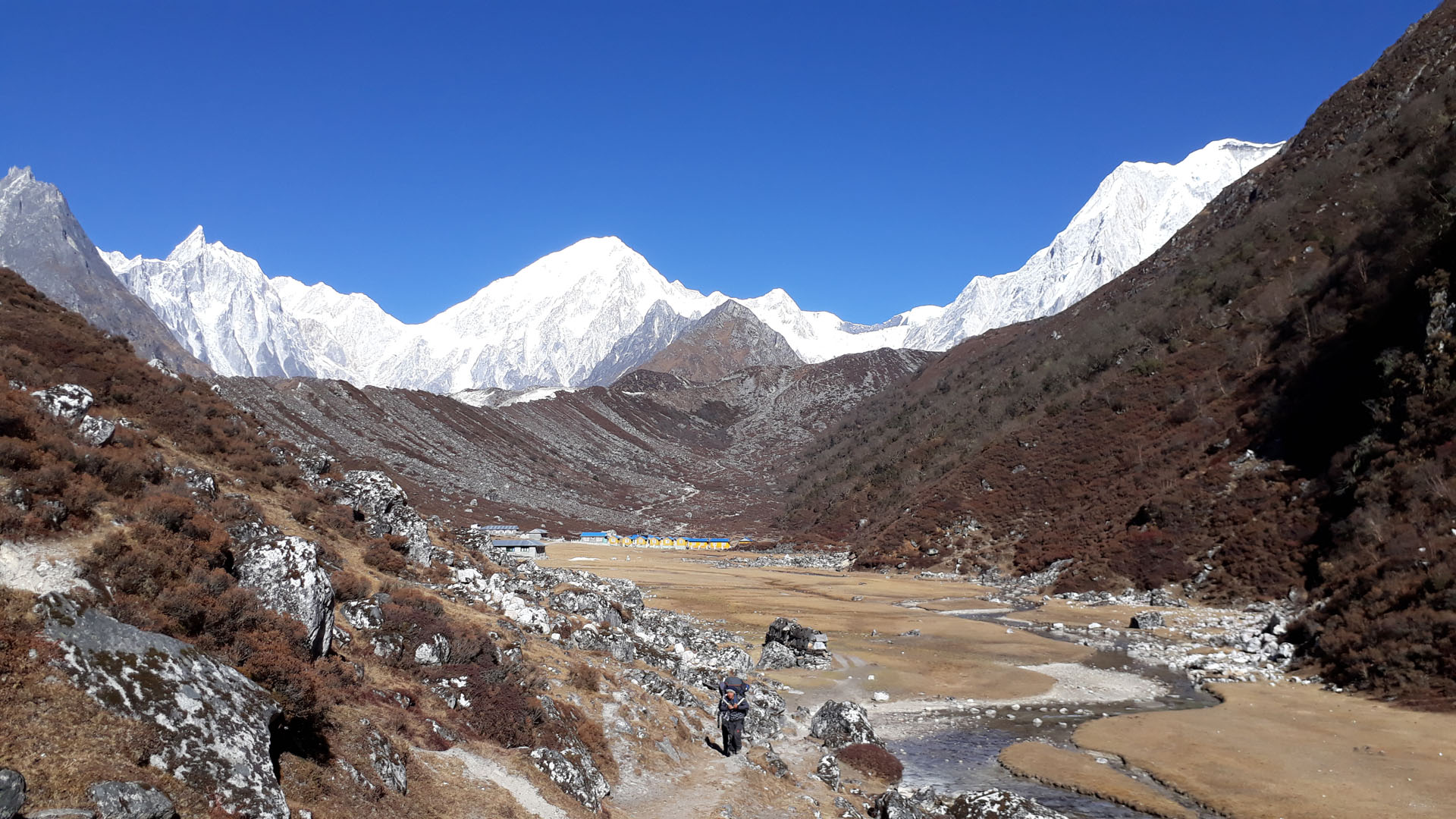
Reasons to keep keep some places as a Restricted Area in Nepal
The Nepal Government designates certain areas as restriction for trekking due to various reasons. Here are a few common reasons behind the decision:
Preservation of culture and heritage:
Restricted areas often have unique cultural significance and are home to indigenous communities with distinct traditions and lifestyles. The government aims to protect and preserve their cultural heritage by limiting access and ensuring that the local way of life remains undisturbed.
Environmental conservation:
Some areas encompass fragile ecosystems, rare flora and fauna, or sensitive ecological zones. By restricting access, the government aims to minimize human impact and maintain the pristine condition of these areas, promoting sustainable tourism and conservation efforts.
Security concerns:
In certain border regions or areas with political sensitivity, restricting access helps maintain national security and sovereignty. It ensures that unauthorize individuals or activities do not compromise the safety and integrity of the region.
Promoting control tourism:
By designating areas as control, the government aims to control tourist flow and prevent overcrowding. This approach helps protect the natural environment, manage infrastructure and resources, and provide a higher quality experience for trekkers.
In general, the decision to keep some places as restricted area treks in Nepal is a strategic approach to balance tourism, preservation, cultural respect, and environmental sustainability.
How to get a restrict area permit in Nepal?
Anyone willing to enter the restricted area in Nepal, go through Gokyo Treks and Expedition agency. You must get a restrict area trek permit through the department of the immigration office in Nepal. In addition, you also needs the national park and conservation office permit which you get either from the Nepal Tourism Board or through the Gokyo trek company.
Every trekker must have those permits before you go otherwise a double value of permit cost will be charged as a penalty. If you do not want to bother about the special permits and arrangements for the trip, we help you all.
We arranges the online trekking permit through a series of applications and guarantee letters. You cannot trek alone, Thus, you need a minimum of 2 foreigners to apply for trek permits together. We need a valid passport with a valid visa to get permits.
As you go into the remote areas, there are no Lodges along with the journey. Therefore, Gokyo Treks & Expedition a Trekking agency in Nepal arranges everything you need for your holiday in the best way with all the necessary gears such as Tents, Support staff, Tents, mattresses, pillows, food, cooks…etc. Compared to normal treks, hike into the control areas is more costly in terms of additional crew taking from town.
- [email protected]
- +977 9841161593
- +977 9851149890

- You are here:
- Trekking and Hiking
Complete guide to Restricted Areas and required permit fees in Nepal
All about restricted areas and the required permit fees in Nepal
- Updated on Mar 22, 2024
A Complete Guide To Restricted Areas and the Required Permits in Nepal
Notice: Nepal bans solo trekking for foreigners, coming into effect from 1st April 2023
Trekking in Nepal is a popular adventure activity from low altitudes to high all with splendid views of the hills and Himalayas. Trekkers can choose the trail according to their interest, physical fitness level and time frame.
Normally, trekkers in Nepal are allowed to trek as Free Individual Trekkers (FIT) or in a group of different sizes. However, there are some trekking areas in Nepal known as ‘Restricted Areas’ which are highly monitored and regulated by the government of Nepal and hence Free Individual Trekkers are forbidden to trek.
Trekking into these restricted areas required Special Permits, which are known as Restricted Areas Permits (RIP). These permits can only be obtained from the Department of Immigration in Kathmandu through an authorized trekking agency (only).
If you are interested in restricted areas trekking in Nepal, make sure you contact an authorized trekking agency registered in Nepal, like Discover Altitude . If so, then the agency can apply for restricted area permits on behalf of the trekkers (foreign nationals).
Any individual despite of his or her nationality doesn’t guarantee of obtaining Restricted Area Permits unless he/she applies through the registered trekking agency in Nepal, under different government departments.
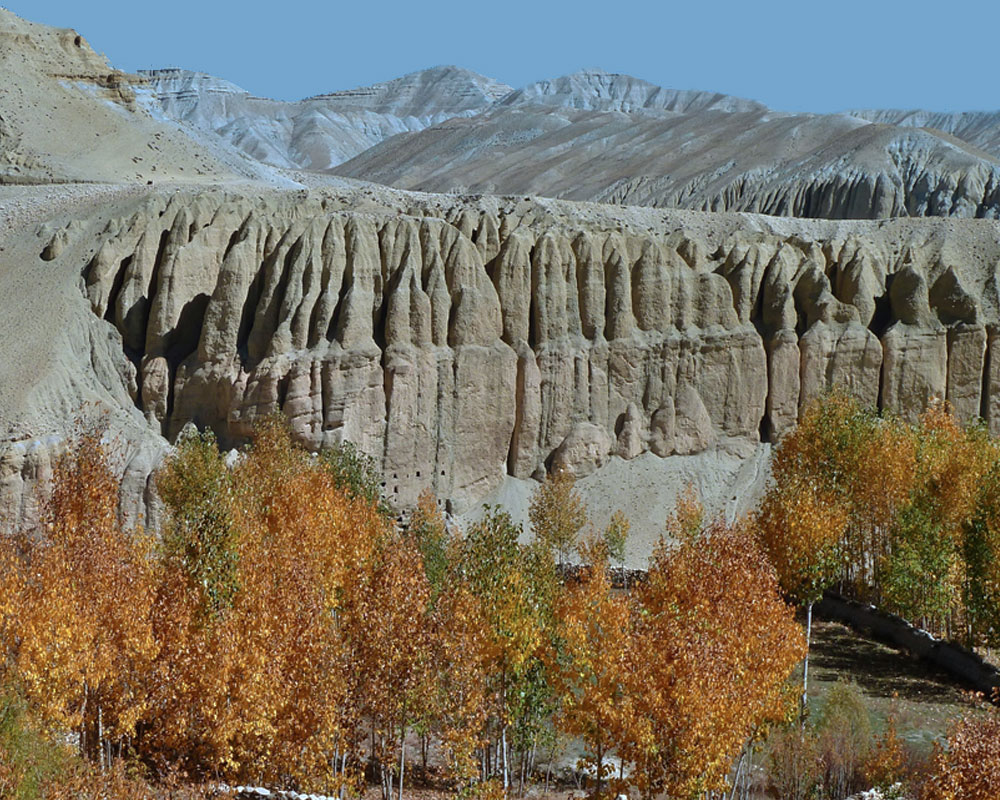
Table of Contents
What is a restricted area in nepal.
Nepal is blended richly with nature and culture, there are numerous Himalayas, national parks, conservation areas and diverse settlements of humans. All of these make Nepal, once is not enough to visit.
Trekkers can visit any part of Nepal, as the country is open to all foreign nationals. However, there are some areas which are regarded as restricted areas in Nepal for foreign nationals.
Until October 1991, many areas of Nepal bordering Tibet were declared restricted zone forbidden for foreign nationals to enter but now it is open for all but with Special Permit.
Lots of travellers question, why some areas in Nepal are restricted for travellers. The simple answer is for the safety and security of the trekkers.
Mainly, restricted areas are to the high altitude bordering Tibet. In these areas, human settlement is very low and the trail is not busy, thus it is regarded as a risky zone for free individual travellers.
Another possible reason is to stop illicit activities of travellers entering the remote parts of Nepal bordering Tibet controlled by China.
So, with strict provisions trekkers can visit restricted areas through authorized trekking agencies in Nepal, like Discover Altitude .
Who Needs to obtain Restricted Areas Permit in Nepal?
Foreign nationals need Restricted Areas Permit (RAP) while visiting those areas like Upper Mustang , Manaslu , Tsum Valley etc. These RAP permits cost extra and can only be obtained from the Department of Immigration in Kathmandu, through an authorized trekking agency.
there are numerous popular trekking trails like Everest Region Trek , Annapurna Region Trek , Langtang Region Trek etc where trekkers can trek as Free Individual Trekkers (FIT), without a guide or agency upon paying the entrance fee of conservation areas only, which can be easily obtained in the office at Nepal Tourism Board, Kathmandu or Pokhara.
From where can we obtain Restricted Area Permits (RAP) in Nepal?
Restricted Area Trekking Permits can only be obtained from the Department of Immigration, through an authorized trekking agency like Discover Altitude registered in Nepal.
However, the RAP Trekking Fees vary from area to area, the number of days/week and also the season of the year, and the bottom-line requirement for obtaining RAP permits is, that there must be at least 2 trekkers for the trek.
Conditions apply to the trekking agency in Nepal for obtaining a Restricted Area Permit:
Apply through the online application forms
- Name list of all trekkers
- Copy of trekkers passport (must)
- Trekking Itinerary of that particularly restricted areas
- Copy of valid visa for Nepal visit covering numbers of required days for Restricted Area Treks
- Guarantee letters of Trekking Agency
- Trekkers' agreement with the agency
- Tax Clearance certificate of the Trekking Agency
- All insurance documents of the trekkers (foreign nationals) and Nepali trekking staff accompanying the trekkers.
- Trekking Agency license issued by ‘The Ministry of Tourism.
- A license issued to Trekking Agency by The Nepal Rastra Bank to exchange foreign currency
- Certificate of Permanent Account Number (PAN) of Trekking Agency
- Voucher of Bank Payment related to fees of Restricted Area Permit
Do’s and Don’t by Trekkers in Restricted Areas:
Trekkers must respect local culture, customs and traditions.
Individual Trekkers are strictly forbidden to enter restricted areas, there should be at least 2 trekkers (group) while trekking in restricted areas
Restricted Areas Permits (RIP) must be carried while trekking.
Trekkers should be accompanied by a registered trekking guide and/or Porter.
Trekkers and accompanying Nepali staff must have accidental travel insurance.
Trekkers must follow the confined trekking route as disclosed during obtaining a Restricted Areas Permit, they cannot divert or change their route.
Trekkers must agree with the instruction given by authorized officers in the restricted areas.
There are 15 Restricted Areas in Nepal and the required fees are as followed:
Restricted Areas in Nepal
Required permit fees, upper mustang (mustang).
USD 500 Per Person (for the first 10 days)
USD 50 Per Person/Per Day (beyond 10 days)
Tsum Valley Areas (Gorkha)
September-november.
- USD 40 per person/week
- USD 7 per person/day
- (beyond 1 week)
December-August
- USD 30 per person/week
Manaslu Areas (Gorkha)
- USD 100 per person/week
- USD 15 per person/day
- USD 75 per person/week
- USD 10 per person/day
- (beyond 1 week)
Gosaikunda Municipality (Rasuwa)
- USD 20 per person/week
Nar and Phu Trek (Manang)
Khumbu pasang lahmu rural municipality ward no. 5 (solukhumbu).
- USD 20 per person for 4 weeks
- USD 25 per person beyond 4 weeks
Upper Dolpa
- USD 500 per person (for the first 10 days)
- USD 50 per person/day (beyond 10 days)
Lower Dolpa
- USD 5 per person/day (beyond 1 week)
- USD 50 per person/week
- USD 10 per person/day (beyond 1 week)
- USD 20 per person/week (for the first 4 weeks)
- USD 25 per person/week (beyond 4 weeks)
- USD 90 per person/week
- USD 15 per person/ day (beyond 1 week)
Sankhuwasabha
- USD 90 per person/week for the first week
- USD 15 per person/day (beyond 1 week)
Note : Free Individual Trekkers, either single or in a group cannot obtain a RAP permit unless they are applied through a Registered Trekking Agency in Nepal and have a guide to accompany them throughout the restricted areas.
For more information: WhatsApp: +977-9841161593
- Hiking permit
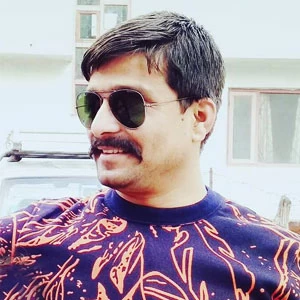
Kumar Lamsal
Kumar is one of the Co-founders and Managing directors of Discover Altitude holding 18 years of experience in the tourism sector of Nepal. He has trekked to almost all the popular regions of Nepal and is an authorized trekking and tour guide.
Started his career as a porter to support his study, now holds MPhil and LLB degree, and is doing his Ph.D. in religious studies. He loves traveling to the Himalayas and has deep knowledge about religion, culture, and history.
Kumar is also involved in the teaching sector as a part-timer to deliver his research related to the cultural and religious diversity of Nepal and is the one who mostly answers your queries giving them his personal touch through his decade-long experience.
Send us your feedback
Recent posts.
- Everest Base Camp Trek for Indian Citizens Cost and Itinerary
- Ghorepani Poonhill Trek Distance, Elevation and Weather
- Everest Base Camp Trek in February 2024-2025
- Everest Base Camp Trek Altitude With Oxygen Level | Know your minimum Oxygen Level during EBC Trek
- Hire a Trekking Guide and Porter in Nepal | Guide and Porter Cost 2024-2025
- Nepal Trekking Company and Tour Operator
Related Posts
- A Complete Visa Guide to Nepal and Fees
- Muktinath Darshan Tour Package
- Lukla Airport: A gate-way to Everest region in a fastest way
- When and where will Mount Everest Base Camp be shifted | Nepal to Relocate Everest Base Camp
- Best 10 Luxury Tours and Holiday Package in Nepal
- Festivals in Nepal
- News and Events
- Places to See
We use cookies to ensure that we give you the best experience on our website.
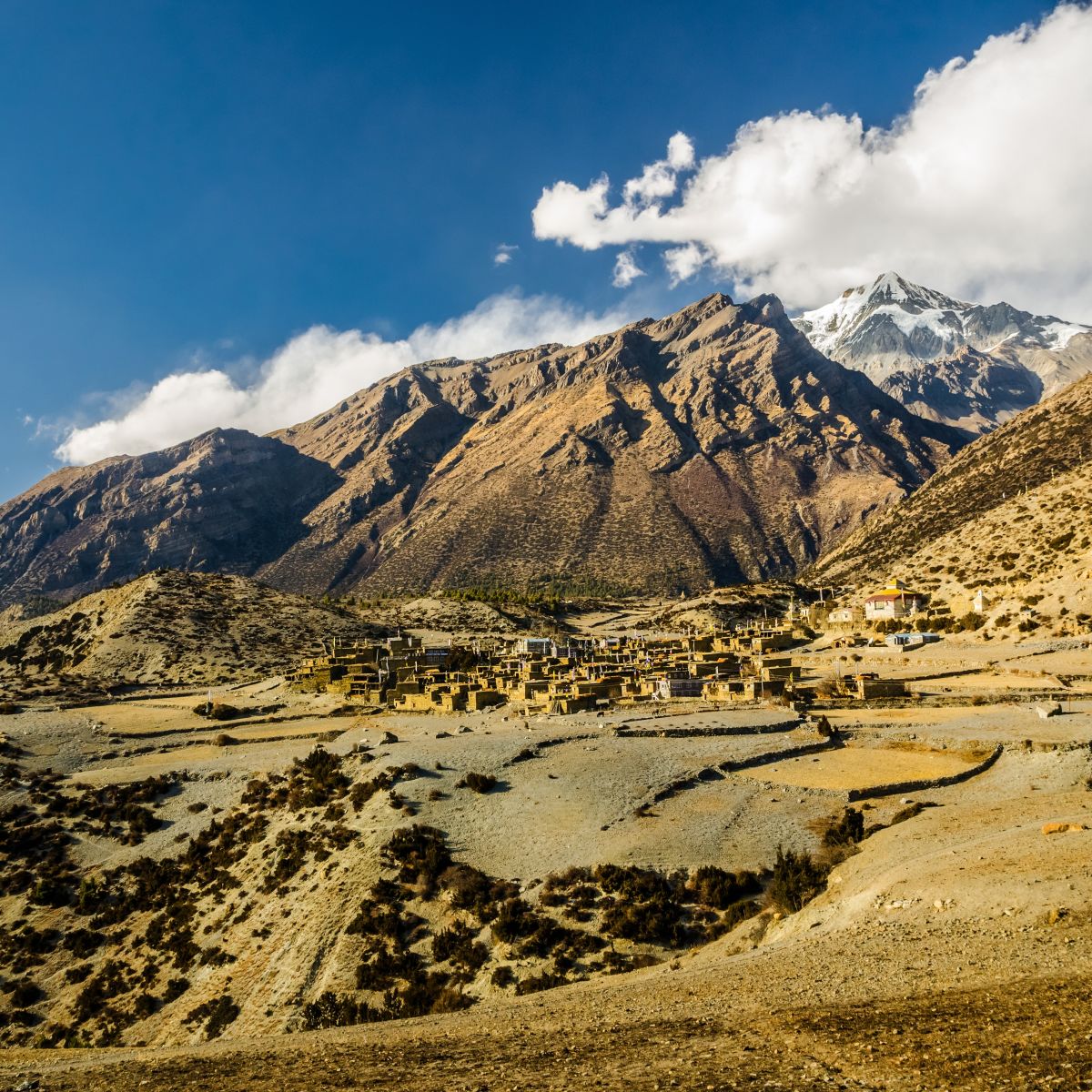
Nepal trekking permits and fees (2024)
Let us demystify Nepal's trekking permits situation for you. We explain the different permits and fees involved, and then state which permits are needed for each of Nepal's most famous trek routes. We also let you know how much each one costs.
Types of trekking permits and fees
Please note that this blog post gives details on the permits and fees necessary for high-altitude trekking, not mountaineering. If you're going to be summiting mountain peaks, your permits and fees will be different.
Everyone who goes high-altitude trekking in Nepal needs to purchase certain permits to be allowed entrance to the trek routes. These are:
- An entry permit into the relevant national park or conservation area
- A Trekking Information Management System (TIMS) card
- A restricted-area trekking permit
You don't need all of the above for a given trek, and further on we state exactly which are needed for each of Nepal's most popular high-altitude treks.
Note that on a few treks, like the Everest Base Camp trek, you must also purchase one or more:
- Municipality trekking permits
If you trek with Follow Alice, we take care of trekking permits and fees for you.
Tour operators purchase permits for you
A tour operator like Follow Alice is very useful when trekking in Nepal, as we organise and pay for all of these things on your behalf. These fees are included in your trekking package fee.
But whether trekking on your own or with a tour operator, it's useful to know what each of these fees are about, and how much they actually touch your wallet (it's not a lot), so please read on ...
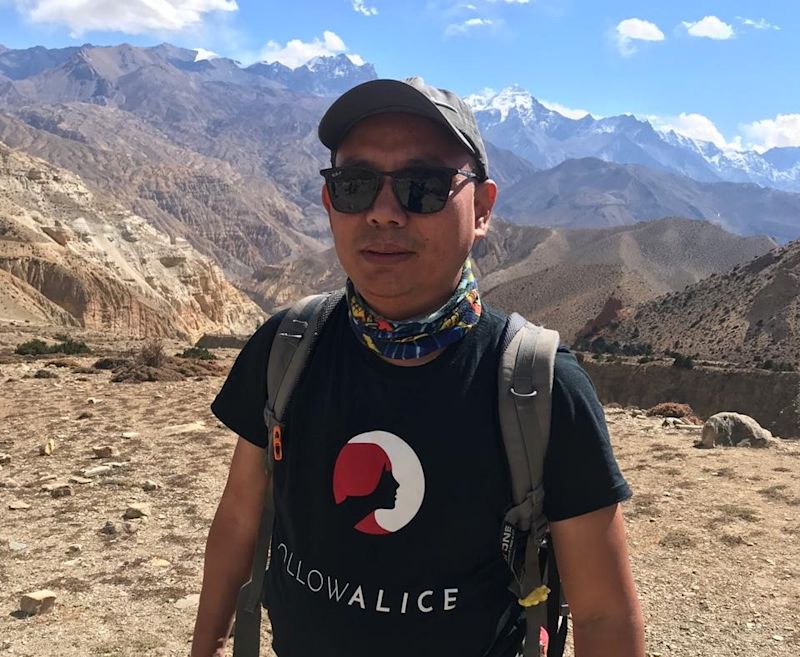
Sonam, our local leader in Nepal, purchases all permits for our trekkers
1. TIMS cards
Many of Nepal's trek routes – including the Annapurna Circuit and Everest Base Camp treks – require you to obtain a Trekking Information Management System (TIMS) card. Or they do at least in theory – post Covid-19 the park officials no longer actually check for this.
TIMS is administered by the Trekking Agencies' Association of Nepal. It gathers trekkers' information with the aim of regulating the trekking industry as well as securing trekkers' safety.
Here's what you can expect to pay for a TIMS card based on whether or not you live in a country that's part of the South Asian Association for Regional Cooperation (SAARC) ...
Where to purchase your TIMS card
The best place to get your TIMS card (if you don't have a tour operator doing it for you) is the Tourist Service Centre in Kathmandu. The office is a 15-minute walk from Thamel, and can be found on Pradarshani Marg (Street).
If you're organising your own trek, we recommend heading to the Tourist Service Centre as you should be able to purchase not only your TIMS card but also all other necessary trekking permits.
Office hours are officially 10 am to 5 pm, with a lunch closure usually between 1 pm and 2 pm.

Your TIMS card and most other permits can be obtained in Kathmandu upon arrival
What you need to apply for a TIMS card
Your card contains information like your country of residence, your trek route, your trek company, and a local emergency contact number.
So with this in mind, please note that you cannot apply for a TIMS card until you have the following:
- your entry and exit dates for Nepal
- your trek's entry and exit points
- a detailed trek itinerary
- a local emergency contact number (can be your tour operator)
- a home-country emergency contact number
- your insurance policy number (you can't trek without traveller's insurance)
You'll also need to supply the following:
- a copy of your passport
- two passport-style photos
As with all trekking permits, carry it on you so you can present it when requested at checkpoints.
2. Restricted-area trekking permits
You usually don't need a TIMS card if you're trekking in a restricted area like the Lower Dolpo or Nar–Phu region. Instead, you need to purchase a restricted-area trekking permit.
Some restricted areas charge a daily fee, others a weekly fee, and still others a combination of the two. Upper Mustang, for instance, requires $500 for the first 10 days, after which you're charged $50 for every subsequent day. (We list the permit fees per restricted area further on in this post.)
Restricted-area trekking permits are needed when you plan to walk in one of the following regions:
- Kanchenjunga
- Nar–Phu Valleys
- Tsum Valley
- Lower Dolpo
- Upper Dolpo
- Upper Mustang
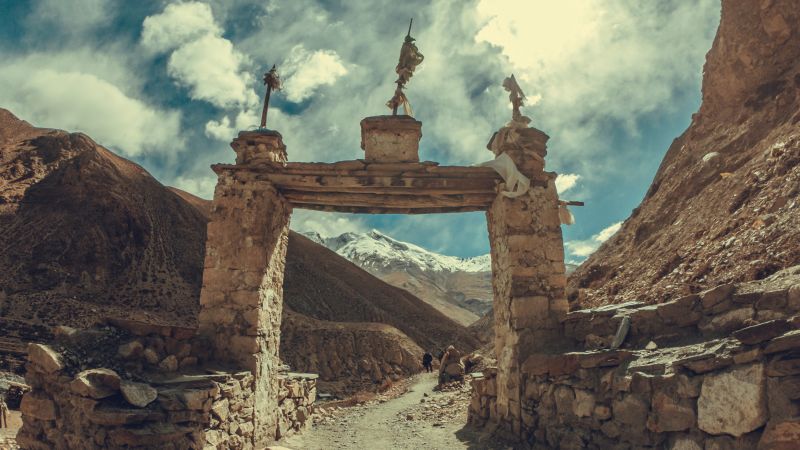
The Nar and Phu Valleys require a restricted-area permit
Where to purchase a restricted-area permit
Your tour operator will obtain any restricted-area permits for you. You can't trek in a restricted area on your own.
This means that if you're a solo traveller wanting to visit a restricted area, you'll need to find a tour operator to put you with at least one other trekker wishing to hike the same route. That's something we at Follow Alice love doing – putting travel-loving strangers together on epic treks, and hearing about the awesome bonds that developed over the course of the adventure!
3. National park permits
Every high-altitude trek in Nepal takes place within a national park or a conservation area. The Annapurna Circuit, for instance, takes place within the Annapurna Conservation Area (ACA). And the Everest Base Camp trek takes place almost entirely within Sagarmatha National Park.
All of Nepal's national parks have a once-off entrance fee of just NPR 3,000 (around $22.50). That's pretty gosh-darn amazing when you think of other national park fees around the world!
The fee is also the same for every national park: NPR 3,000 (or around $25). You also pay the fee just once, regardless of how long you stay in the park. And no profile photos are required. All very easy and inexpensive.
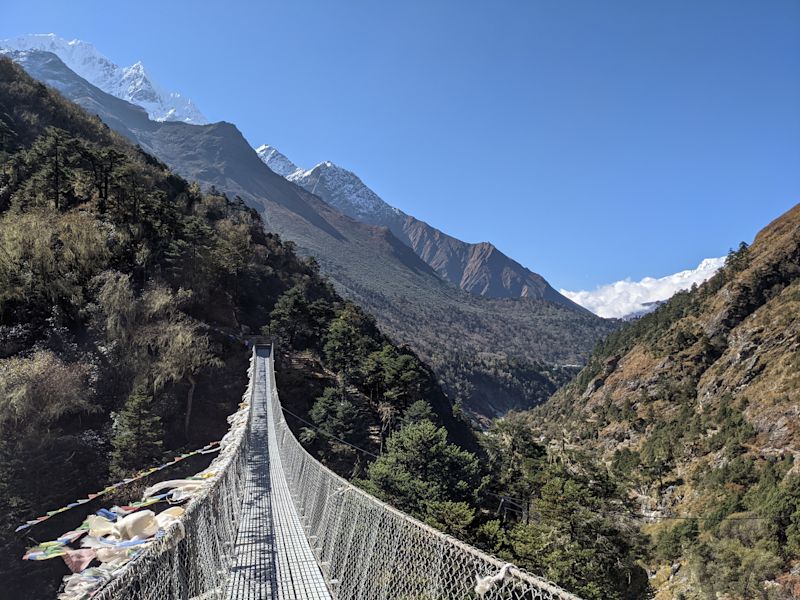
It's incredibly affordable to trek in Nepal compared to many other countries
Where to purchase your entry permit
In terms of national parks, an entry permit is easy obtain. You can purchase it:
- at the park's entrance gate
- online from the national parks office
- at the Tourist Service Centre in Kathmandu
When paying the fee in advance, you're issued your permit on the spot, so there's no to-ing and fro-ing involved. How civilised.
What you need to purchase an entry permit
To be allowed to enter a national park, you'll need to provide the following:
- entry and exit dates for the park
- the name and address of your tour operator (if you have one)
- the name and contact details of your trek guide (if you have one)
4. Conservation area permits
Similarly to national parks, you simply need to pay a once-off fee to obtain an entry permit for a conservation area. This fee is a super modest NRP 3,000 (or around $25). And again, your permit is issued on the spot.
The most famous – and largest – conservation area in Nepal is the Annapurna Conservation Area (as you can see in the map below).
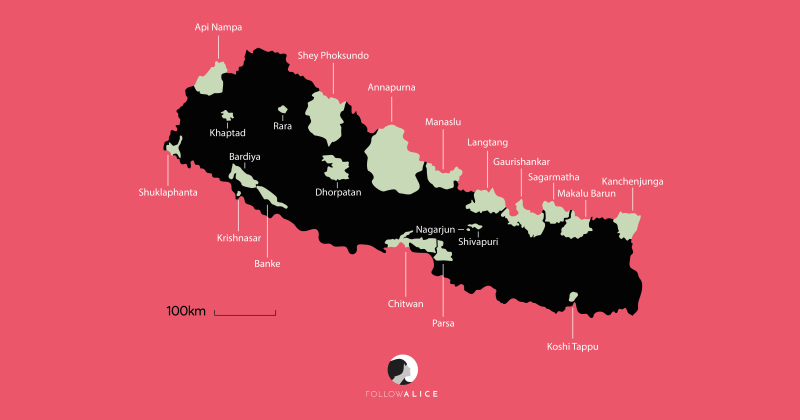
Map of Nepal's national parks and conservation areas
You do, however, need to provide two passport-style photos of yourself to obtain the permit.
You can obtain a conservation area entry permit at:
- The Tourist Service Centre in Kathmandu
- The Department of National Parks and Wildlife Conservation in Kathmandu
- The Annapurna Conservation Area Project (ACAP) office in Pokhara
- The Nepal Tourism Board office in Besisahar or Pokhara
While you can pay the fee at a checkpoint, you'll be charged double the usual amount. So it's better to organise it in advance at one of the above-mentioned offices.
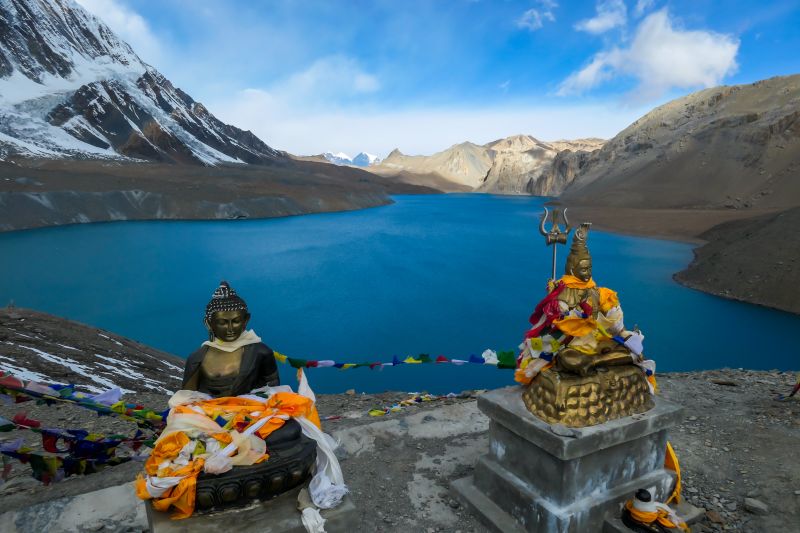
The Annapurna mountains are part of the Annapurna Conservation Area
To be allowed to enter a conservation area, you'll need to provide the following:
- entry and exit dates for the conservation area
5. Rural municipality trekking permits
Some municipalities charge trekkers an additional fee. Notably, those trekking to Everest Base Camp must purchase the Khumbu Rural Municipality Permit. At NRP 2,000 (or $17), this isn't a headache at all.
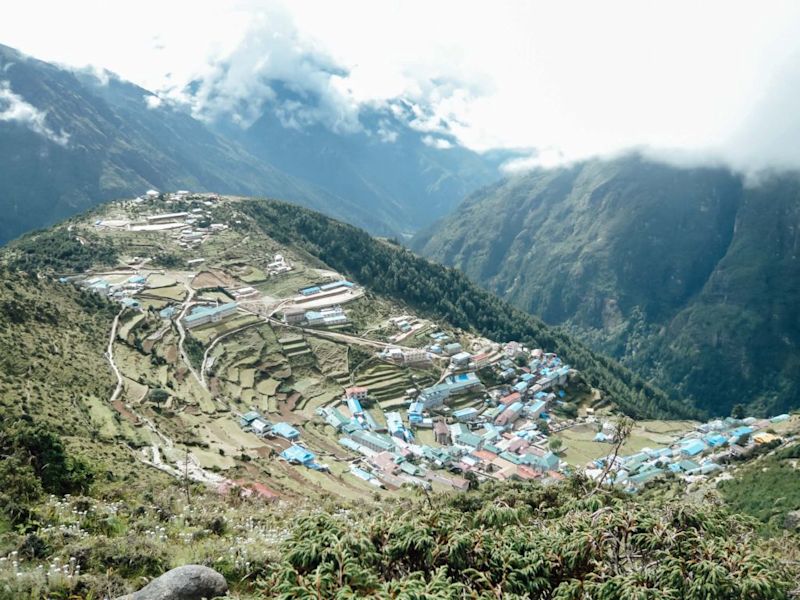
Aerial view of Namche Bazaar, an acclimatisation stopover point on the EBC trek
Where to pay municipality fees
Municipality trekking permits are obtained at the checkpoint to each municipality. So no forward planning is needed for these. Though again, if you're trekking with a tour operator, any municipality trekking fees will be obtained on your behalf.
List of permits and fees for specific treks
Let's now look at each of Nepal's most popular treks and what permits and fees are required for each to help you plan and budget. We've placed them in alphabetical order to help you scroll and find the ones that interest you.
* Please note that Nepali and SAARC citizens pay lower rates than those stated below.
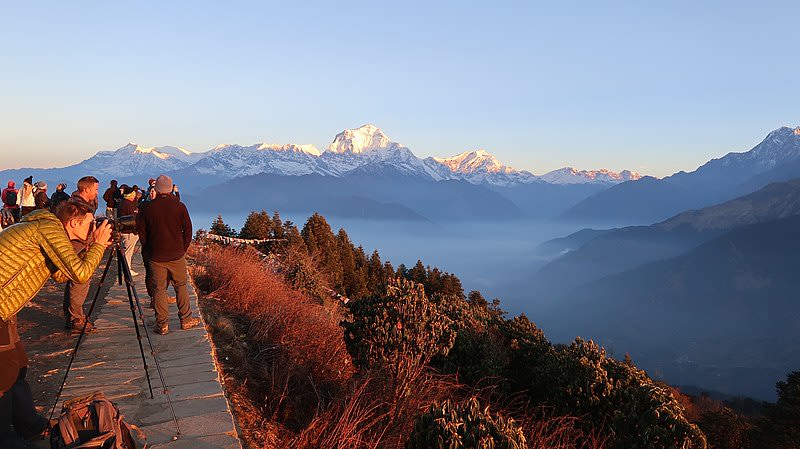
Sunrise over Poonhill
Annapurna Conservation Area treks
Here's what you'll pay for permits and fees to do any one of the following Annapurna Conservation Area treks:
- Annapurna Base Camp
- Annapurna Circuit
- Annapurna Sanctuary
- Mardi Himal
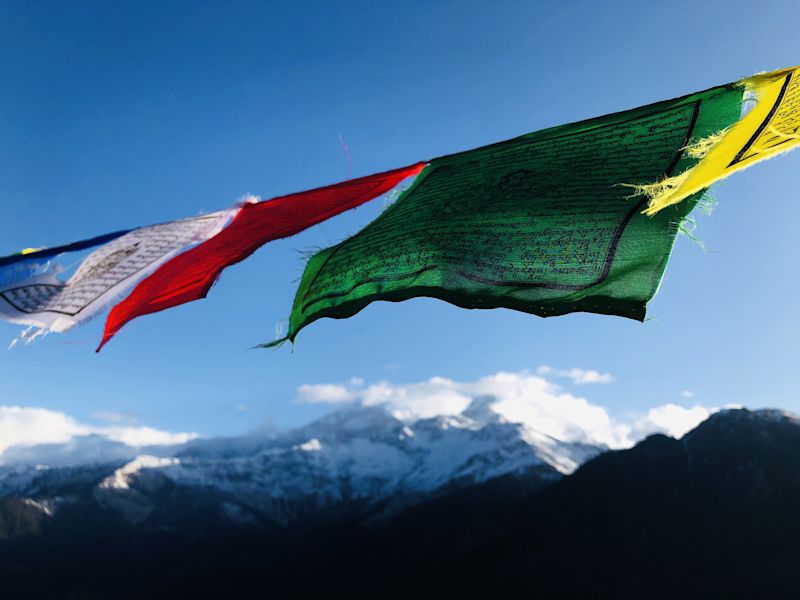
The Annapurna Circuit is one of the Nepal treks we offer at Follow Alice
And here's what you'll pay for the Nar–Phu and Annapurna Circuit trek :
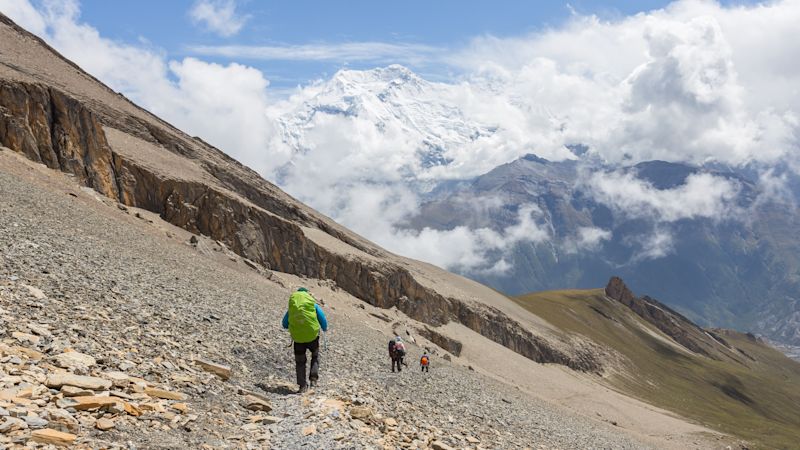
The Nar–Phu and Annapurna Circuit is our newest Nepal trekking adventure
Finally, here's what you'll pay for the Upper Mustang trek :
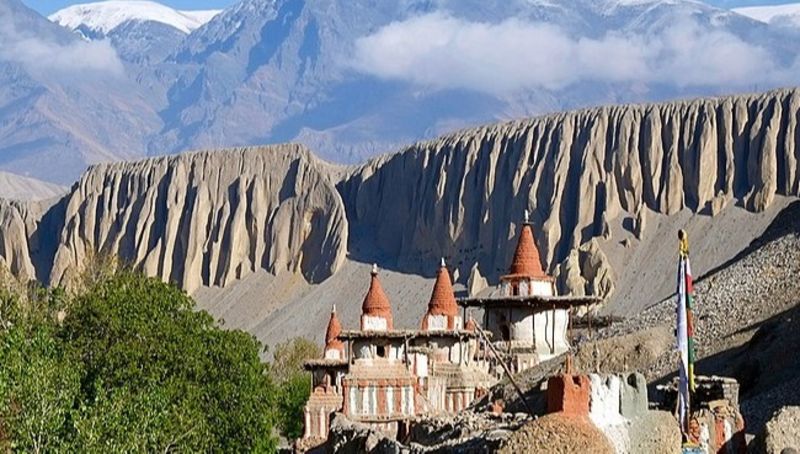
The Upper Mustang trek takes you into an incredibly remote and culturally rich area
Everest Base Camp treks
Here's what you'll pay for permits and fees for any of the following Everest Base Camp treks:
- Classic EBC trek
- EBC trek and helicopter return
- EBC and Gokyo Lakes trek
- EB and Three Passes trek

Our tech whiz Marco with friends on the EBC and Three Passes trek
Treks in Langtang National Park
Here's what you'll pay for permits and fees for the following treks inside Langtang National Park:
- Ganga La trek
- Gosainkund trek
- Helambu Circuit trek
- Langtang Valley trek
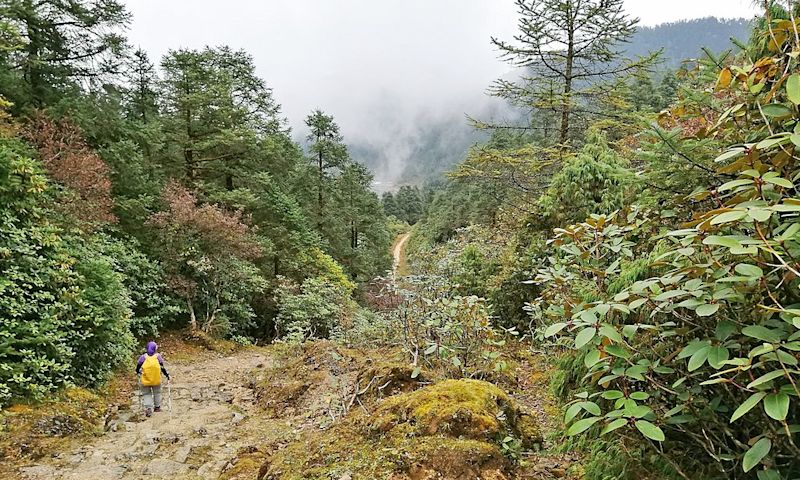
The scenery on the Helambu trek is very, very pretty
Kanchenjunga Base Camp trek
Here's what you'll pay for the Kanchenjunga Base Camp trek :
Treks in Shey Phoksundo National Park
Here's what you'll pay to do the Kagmara La trek :
And here's what you'll pay for permits and fees to do any of these other treks inside Shey Phoksundo National Park:
- Phoksundo Lake
- Phoksundo Lake via Do Tarap
- Phoksundo Lake to Shey Gompa
Finally, here's what you'll pay to do the expensive Upper Dolpo trek :
Makalu Base Camp trek
To do the Makalu Base Camp trek, you should budget:
Manaslu Conservation Area treks
Here's what you'll pay to do the Manaslu Circuit trek :
And here's what you'll pay to do the Tsum Valley trek :
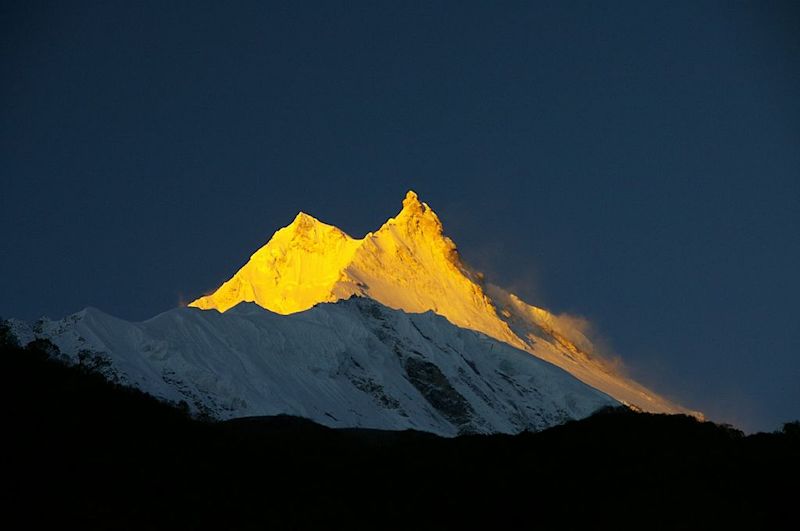
Sunrise over Mt Manaslu, the eighth-highest mountain in the world
You can look at Nepal's Department of Immigration website to check for any updates or further info with regards to trekking permits and fees.

Any Question? Email Us
Talk To An Expert ( Prakash Lamsal )
Follow Us In
Main Navigation
Company info.
- Become A Partner
- Company Legal Document
- Why Nepal Himalaysas Trekking
- Terms and Conditions
Destinations
- Peak Climbing
- Adventure Sports
- Mountain Flights in Nepal
- Jungle Safari
- Rafting In Nepal
Helicopter Tour
- Paragliding in Nepal
- Bungee Jumping in Nepal
- Jungle Safari in Nepal
- Annapurna Region
- Everest Region
- Langtang Region
- Dolpo Region
- Manaslu Region
- Mustang Region
- Kanchenjunga Region
- Makalu Region
- Everest Base Camp Helicopter Tour
- Travel Blog
- Any Inquiry ?
Restricted Area Trekking in Nepal

Are you aware of the restricted area trekking in Nepal? The government has designated certain regions in the Himalayas of Nepal as restricted area trekking zones. These areas are located in various parts of the Nepalese Himalayan range. Engaging in restricted area trekking in Nepal allows you to immerse yourself in ancient villages and timeless cultures set against pristine natural beauty.
Table of Contents
Want to plan your holiday in nepal.
Despite the remote nature of these regions, you can obtain a special trekking permit to explore them. While acquiring the permit may require a slightly higher cost, the experience is truly invaluable. This article highlights our renowned restricted area trekking in Nepal, showcasing the beauty of these regions.
Let's delve into our restricted area trekking in Nepal.
Here are some of our trekking adventures that are listed as restricted area trekking.
Upper Mustang Trek
The Upper Mustang Trek offers a unique and unforgettable experience in Nepal's restricted areas. This journey allows you to discover the ancient kingdom of Lo in Upper Mustang while immersing yourself in the cultural and natural beauty of the region. As you venture deeper into the restricted region of Mustang in the Himalayas, you will encounter rugged mountains, jagged cliffs, and timeless villages along the trail.
The highlight of the trek is reaching Lo Manthang, the ancient kingdom of Lo, where you will be surrounded by a civilization untouched by modernity. Throughout the trek, you will traverse mountain passes, visit villages, and witness breathtaking views of the Himalayan peaks. Additionally, you will have the opportunity to explore ancient monasteries and caves, adding to the richness of this adventure.

Manaslu Circuit Trek
The Manaslu Circuit Trek is renowned as a remote and captivating trekking option in Nepal. It has gained popularity as an alternative to the well-known Annapurna Circuit Trek . With the Annapurna circuit becoming more accessible due to the presence of dirt roads, many trekkers are now opting for the Manaslu region instead. This shift in preference is justified as Manaslu truly offers a comparable experience to the Annapurna circuit.
Embarking on the Manaslu trek is an opportunity to immerse oneself in a tranquil yet challenging adventure. The region sees fewer visitors, allowing for a more serene and intimate experience. As you ascend to higher altitudes, you will truly grasp the remoteness of the area. Additionally, you will have the chance to witness and appreciate the timeless culture and lifestyle of the local inhabitants.

Tsum Valley Trek
Tsum Valley , located in the Manaslu region, is a remarkable destination for trekkers. This secluded valley allows visitors to immerse themselves in the rich culture of the local villages and ethnic communities. Until recently, the civilization of Tsum Valley remained undiscovered, resulting in an authentic cultural experience and a unique way of life. The strong Buddhist influence in the daily lives of the residents creates a spiritual ambiance throughout the region.

Upper Dolpo Trek
The Upper Dolpo Trek is a remarkable restricted area trek in Nepal that allows you to discover the remote western Himalayan Mountains. This extensive journey offers insights into the local culture, stunning mountain panoramas, and the serene beauty of nature, including a picturesque lake. The isolation of the western mountains and the ancient villages in the area provides a unique opportunity to immerse oneself in the wilderness. With fewer trekkers in the region, this trek offers a peaceful and authentic experience. Embarking on this adventure is sure to be a highlight of your trekking experiences.

Nar Phu Valley Trek
Nar Phu Valley Trek goes to the northern part of Manang district to explore the remote valleys of Nar and Phu. You follow the Annapurna Circuit Trail and take a diversion towards Nar Phu Valley. You will explore ancient cultures in timeless villages of the two remote valleys – Nar and Phu.
This trek is also a recent opening for exploration of the outer world. Thus, you can find the unaffected cultural wonders and nature at its best. Nar Phu Valley Trek can also be combined with the Annapurna Circuit Trek.

Kanchenjunga Trek
The Kanchenjunga Trek is located in the eastern part of the Himalayas in Nepal. Embarking on a journey in the vicinity of the third highest mountain on earth promises an unforgettable adventure. This trek is known for being one of the more secluded options in Nepal, offering a unique experience in the eastern Himalayan region where the majestic Mt. Kanchenjunga, standing at 8,586 meters, captivates all who visit.
The main highlight of the Kanchenjunga trek is reaching the base camp and exploring the pristine surroundings of the area. This remote and less-traveled trail ensures that the wilderness of the Kanchenjunga region remains untouched and preserved.

If you are interested in learning more about restricted area trekking adventures in Nepal, please feel free to reach out to us.
Want to Plan For Trekking Package ?

Associated and Recommended On
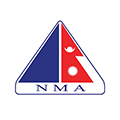
Notice. This site uses cookies to optimize your user experience. By using this site, you are consenting to our use of these cookies. Check out our Privacy Policy and our Cookies Policy.

Why Nepal has restricted areas and what are Rules, Cost, Permit Procedure?
- Last Updated on Sep 15, 2023
Nepal has many restricted areas from east to west, requiring special trek and travel permits. These restricted zones around some regions of Nepal prohibit random entry without a special permit issued by the Department of Immigration.
Until 1991 AD, foreign visitors were not permitted to trek in the remote regions of Nepal. These restricted areas span across the country from east to west. However, with the establishment of multiparty democracy in 1990 AD, the regulations were revised, and foreigners were granted access to these previously restricted trekking areas through the issuance of a special permit.
Nowadays, these regions are referred to as Nepal Government controlled areas. Any international visitor wishing to explore these regions must obtain a special permit from the immigration authorities of Nepal.
These restricted areas of Nepal are controlled by tourism mechanisms, which prioritize preserving and conserving natural resources and the cultural heritage of remote regions and their inhabitants. This approach also ensures the well-being and protection of international trekkers and Nepal's northern border with Tibet.
Trekking in restricted areas is exclusive to registered trekking agencies, with a minimum requirement of two individuals for obtaining a permit to access these regions.
A registered trekking agency is only permitted to trek in restricted areas, and a minimum of two persons are required to get the restricted area permit. The government of Nepal declared 15 areas as restricted areas, and those areas need restricted area permits for trekking.
Restricted area trekking is probably one of the most remote hiking trails in the world. Nepal-restricted areas offer the pledge of mountain beauties, glaciers land, lakes, rivers and cascades, local ethnic settlements, and various rare and ethnic lures during the treks.
Nepal is characterized by a nation of abundant nature, culture, tradition, and people, but rapid modernization looms the threat of exploitation. To preserve the characteristics of Nepal, the government of Nepal has designated certain regions within the country as restricted areas. Each restricted area here has been carefully chosen based on its cultural significance and intricate and awe-inspiring geography.
Therefore, these areas, which are commonly referred to as "restricted areas," the permits themselves are known as Restricted Area Permits (RAPs). Afetrung knowing the brief about restricted areas in Nepal, your mind is overflowing with questions about these restricted areas: What exactly are they? Why are they restricted? What characteristics do these types of areas in Nepal possess? How can one gain access to them? What permits and documentation are required for entry? Rest assured, this article aims to address all your inquiries and provide precise guidance on the subject of restricted areas in Nepal.
Table of Contents

Lapchi Kang Milarepa Cave trek

Lower Dolpo Circuit Trek

Manaslu Tsum Valley Trek cost for 2024-2025

Saribung Peak Climbing -Upper Mustang Trek
What are restricted areas in nepal.
You may wonder what restricted areas are and why they are called so if you can visit there. They are restricted areas because people other than locals, like foreigners, cannot go there for trekking and exploration purposes.
Therefore, the designation of restricted areas was introduced here. However, in recent years, the government has granted public access to these regions, even for foreigners. Despite this change, trekkers planning to visit these areas are still required to acquire specific authorization from the Nepalese government and are obliged to be accompanied by a certified guide and, in some cases, a District officer.
Moreover, explorers venturing into these territories must pay higher royalties to the government than those trekking in common areas like Everest and Annapurna.
Now you may wonder whether restricted areas, nature, cultural heritage, and others are more preserved than others. Nepal's Restricted Areas are designated regions where preserving nature, culture, heritage, and other significant aspects is of utmost importance to the government. Access to these areas is regulated, and individuals must obtain Restricted Area Permits (RAPs) to visit and ensure proper management.
Exploring one of these restricted areas in Nepal is an exceptional opportunity for travelers seeking a distinct and memorable experience. This article delves into the characteristics of these regions, their encompassing attractions, and the necessary RAPs for entry.
On the same topic, certain areas have strict restrictions that require a minimum of two individuals to apply for permits. For trekkers, these companions can include a guide or fellow travelers heading to the same region. This regulation aims to effectively manage activities within these special areas and ensure visitor safety.
Want to visit this restricted area of Nepal? Then you must obtain the necessary permits; for this, you can visit the Department of Immigration Office in Kathmandu. However this may surprise you, but even with additional payment, tourists cannot enter these restricted areas without specific permits, which can only be issued through registered trekking agencies.
Traveling, trekking, touring, or exploring these designated regions in Nepal legally necessitates obtaining restricted area permits (RAPs). To avoid any inconvenience in losing the original permit, keep an extra copy of your RAPs along with your other documents.
Furthermore, you must present these permits at checkpoints and complete entry/exit procedures throughout your journey. Familiarising yourself with these requirements will ensure a smooth and hassle-free experience in Nepal.
Why Are Permits Required for Restricted Areas?
The government imposes limitations on certain regions due to concerns about its ability to ensure the safety and security required by trekkers. Additionally, political considerations contribute to the implementation of these restrictions. If you want to trek around the restricted areas, you must obtain the necessary permits and be accompanied by a guide throughout the trek tour.
Thinking about why I should pay for the permits just to use the trails here?0 First of all, you are not a local resident here, and as a foreign traveler, you are bound to follow the rules and regulations of the country for a successful trekking and touring experience.
Worrying about the permit costs for these restricted areas? While the permit costs for these particular trekking trails may be slightly higher than others, they won't necessarily leave your wallet empty.
The costs to visit these restricted areas of Nepal differ and can vary, ranging from a few dollars to higher amounts. The purpose of these permits can be explained in two ways. First, to regulate the number of hikers on a trail to preserve its condition and protect the environment, and second, to generate funds for the trail's and region's maintenance.
As more and more travelers visit these restricted areas due to their unparalleled beauty and unique cultural traditions, the country needs sufficient resources to sustain its upkeep.
Undoubtedly, there has been a significant rise in touring and hiking activities throughout the country in restricted areas too.
While it is positive that more people are engaging with nature, it does not always lead to favorable outcomes. Unfortunately, certain areas suffer from increased human impact, resulting in environmental and cultural degradation. The surge in hiking after the pandemic has also led to a rise in trail-related injuries, eventually leading to deaths.
Moreover, implementing a hiking permit system mainly in the restricted areas of Nepal can offer environmental benefits. Many valuable natural and remote locations frequented by humans often suffer from significant human impact.
With its unique features, this remote region falls victim to an ineffective Leave No Trace policy, necessitating annual restoration efforts to preserve its natural habitats. Therefore, introducing a permit system can minimize the potential for heightened human impact on these regions.
Hiking permits restrict the number of individuals accessing regions prone to accidents and lost hiker incidents. Thus, this measure improves emergency response and reduces strain on emergency personnel.
Additionally, having a documented record of trail users in a specific area facilitates locating and rescuing lost hikers, unlike situations where unrestricted roaming is allowed without permits.

Why Do Permits Add Up to Overall Costs of Trek and Tour?
Do you wish to access the restricted area? In that case, you must obtain a Restricted Area Permit either from the Nepal Tourism Board or through an authorized trekking company that acquires it from the Immigration Department of Nepal. We are here to assist you if you prefer not to handle the permit process and trip arrangements. At Mountain Rock Treks, we are eager to help you with your adventures in Nepal. How do the permits contribute to the total expenses of your trek and tour?
Restricted area trekking and touring has become one of Nepal's most sought-after Tourism activities. This is influenced by the fact that these restricted areas offer the best experience with their wilderness and remoteness for travelers and are in danger of becoming destroyed if they are not protected.
Many of these restricted areas of Nepal are close to the Tibetan border. These are high-security places where you cannot enter without the issued permits and registered guides, which adds to your permit costs here.
But what about the Everest and Annapurna treks? Why are their permit costs lower than that of restricted areas? Most of the Everest and Annapurna trekking does not lie near the Tibetan border, so this area does not require much high security compared to the other restricted areas of Nepal, further decreasing the overall cost for the permit here.
Another reason higher costs are associated with obtaining permits for restricted areas is the preservation of culture, tradition, lifestyles, geographic features, and the uniqueness of specific regions. These areas have remained untouched by the harsh influences of the outside world, making them truly exceptional.
Therefore, these regions require protection, where the Nepalese government interferes by imposing restrictions and requiring permits with high costs to visit to safeguard their integrity.
Restricted areas necessitate a dual protection approach, as their significance derives from their physical characteristics and the ethnic communities (mainly Tibetans) inhabiting them. Thus, specific rules and regulations, like obtaining a permit with a few extra posts, have been established by the resident ethnic communities to preserve these regions.
The permit fee imposed here for travelers is made to preserve the culture and tradition of the local people as it is the inheritance of Tibetan Buddhism. Also, the unique lifestyles of the inhabitants are a part of the concern here, so to safeguard it all, some parts of this region are marked as restricted.
Why Pilgrimage Sites are Considered Restricted in Nepal?
Historically, Nepal has been serving as a meaningful destination for religious pilgrimages as the nation is rich in cultural and religious heritage. Also, the county is home to many pilgrimage sites holding great importance for religions like Hindus, Buddhists, and other religious groups.
There might be cases where access to specific pilgrimage sites, especially those regions heavily influenced by Tibetan culture, tradition, and religious practices in Nepal, could be restricted or regulated for various reasons. Some possible reasons for such restrictions could include:
For the Protection of these sites
Many pilgrimage sites in the restriction are considered ecologically or culturally sensitive areas requiring conservation efforts and protective measures. To protest, the government may have restricted access to some pilgrimage sites to prevent environmental degradation or damage to cultural artifacts.
Infrastructure limitations
Regarding pilgrimage sites, some places don't have enough infrastructure for visitors to visit these sites in large numbers. With infrastructure, we are here talking about accommodations, transportation, and even basic sanitation facilities. Moreover, managing such a tower crowd is difficult for remote areas. So, to ensure everyone stays safe and avoids overcrowding, they might have to restrict access to these sites. After all, it's all about maintaining order and ensuring people can enjoy their pilgrimage without issues.
Religious Significance and Sanctity
Some pilgrimage sites have certain restrictions, and they do that to preserve the religious importance and respect that people have for those places. They limit access so people don't behave disrespectfully, maintain proper conduct, and protect sacred rituals and traditions. It's all about keeping the place special and meaningful.
Security concerns
Sometimes pilgrimage sites have to deal with security issues. Especially when they're located near international borders like Tibet and China, they might put some restrictions in place to ensure everyone stays safe and maintains peace and stability in the area.
Do Helicopter tours to Restricted Areas require permits?
Helicopter tours in Nepal sound like exciting options to consider, but in the case of a Helicopter Tour to restricted areas, the process is way more complicated.
Restricted areas here are designated for various purposes. Some may be for national security, environmental protection, or preservation of sensitive sites. These areas often have specific access restrictions to ensure the location's safety and security.
If you want to do helicopter tours to restricted areas, get the right permits and permissions from the person in charge. It can vary depending on where you want to go and what restrictions certain places have. Sometimes you must work things out with the government, district officer, or national park officer, depending on the area. Just ensure you're on the up and up and follow the rules to avoid any trouble.
The helicopter tour permit process is a very complicated but also rewarding one. Therefore, before taking a helicopter tour to any restricted area, play by the rules and get the necessary permits. This way, you can avoid legal troubles and help protect those unique places. To ensure everything goes smoothly, reach out to a reliable tour operator who can give you all the info you need about permits and how to get access to the area you're interested in.
What about the cost? This might disappoint you, but the price of a Helicopter tour entry to a restricted area may be higher than that of normal ones to the Everest and the Annapurna region. This is because governments have designated these areas as restricted to ensure the safety and protect the religion, culture, tradition, flora, and fauna that make these regions unique.
Getting permits to fly into restricted areas by helicopter can be pricier, and there are some excellent reasons. The first reason is that these areas often have valuable or delicate resources that need safeguarding, so the extra money helps support conservation efforts.
Moreover, tight security measures like monitoring and controlling access can stretch expenses. And they only hand out limited permits to prevent overcrowding and minimize environmental harm.
So those higher permit fees seem steep. Still, they play a crucial role in preserving the untouched beauty of restricted areas and ensuring everyone has a sustainable and awesome experience.
Regarding the permits, every helicopter tour to the Restricted regions requires three permits, one from CAAN (Civil Aviation Authority of Nepal ) and the remaining two from the Home Ministry and Immigration Department. In addition to these permit costs, taking a district offer is a mandatory requirement for helicopter tours of restricted regions.
You may be interested to know what type of helicopter you will be taking while booking a helicopter tour to Restricted areas of Nepal. Even though the area is considered restricted, for some reason, you will be traveling on the same helicopter that takes you to other non-restricted regions like Everest or Annapurna. This means you will be taking a single shuttle helicopter if you are a total of 5 in number, including the District office. However, if you are more than 5, including the district offers, you must fly with a double shuttle helicopter.
Why do we have to bring district officers in Some helicopter Tour To Restricted Areas?
A district officer must accompany every helicopter tour to restricted zones because their presence serves multiple important purposes. First of all, their presence ensures the protection of the region and its sensitive ecosystems, rare wildlife, and delicate balance that needs to be maintained.
Moreover, the district officer also monitors the tourists' behaviors and enforces regulations to prevent any environmental harm or disturbance. Their presence is a barrier to any potential misbehavior and helps maintain the integrity of the restricted area.
Moreover, a district offer also serves as a knowledgeable guide that provides valuable and unique facts about the restricted regions. They possess local expertise and an understanding of the area's history, culture, and significance.
With a district offer on board, the tower can gain insights and understanding of the restricted area they are traveling, further enhancing the educational value of the tour.
They can also share information about the rare and endangered flora and fauna inhabiting the region, geological features, and any specific rules or guidelines that must be followed during the visit.
Finally, with the district officer in place, the safety and security of both tourists and the restricted area are supported. Restricted areas typically have defined entry and exit points and designated helicopter flight paths. The officer plays a crucial role in enforcing these regulations, reducing the likelihood of accidents or unauthorized access. Moreover, in emergencies or unexpected situations, the district officer is equipped to take necessary measures and collaborate with local authorities to swiftly resolve the issues, prioritizing the welfare of all parties involved.
All Nepal Restricted Areas and Permits Costs
Taplejung region trek permit.
Taplejung is an amazing place for preserving its ethnic community and keeping things peaceful. That's why they've marked certain parts of the region as restricted areas, to ensure the locals' originality and culture stay intact.
Now, let's talk about the attractions. There's a monastery called Olangchung Gola, or Olangchung-Gola Yangma, that you don't want to miss. And remember the villages of Ghunsa and Lelep. The natural scenery there is stunning, with panoramic views that will take your breath away. Moreover, the locals in Taplejung are also incredibly welcoming, and their customs, folk songs, dances, and festivals add a unique charm to the region.
If you plan a visit, remember that certain areas require a special permit. These include Phantanglung Rural Municipality (wards nos. 6 and 7), Mikwakhola Rural Municipality (ward no. 5), and Sirijunga Rural Municipality (ward no. 8). The permit fee is USD 20 per person per week for the first four weeks, and USD 25 per person per week for any time beyond that.
Solukhumbu Region Trek Permit
Solukhumbu is the same place where you'll find the mighty Everest. This place attracts many visitors yearly because of the majestic Mount Everest, the main highlight. It's a hot spot for tourists because you experience nature and culture simultaneously, which is pretty impressive.
Mount Everest is part of the Sagarmatha National Park. This national park is home to many plants, animals, and other mountain peaks like Lhotse, Thamserku, Nuptse, Cho Oyu, Lobuche, and more.
They have some restrictions in place to protect the diversity of this region. They want to preserve the unique culture and nature found here, so they've restricted certain parts.
Mainly, you'll need to pay some fees in the Khumbu Pasang Lahmu Rural Municipality, which includes all areas of ward no. 5. It's $20 per person per week for the first four weeks, and if you stay longer than that, it's $25 per person per week.
Gaurishanker Chho Rolpa lake Region Trek Permit
Every trekker hiking around the Gaurishanker Chhorolpa Lake area in Lamabagar Ward No.1 (Lepche) and Gaurishanker Ward No. 1 (Beding 9 and Chhorolpa Lake) region must get a permit first. You need these permits because they just want to ensure things are well-managed and the place stays beautiful and balanced.
Now, to get that permit, it'll cost you 20 dollars per person per week. It's not just a random fee. The money goes into maintaining and conserving the area. They use it for protecting the environment, improving infrastructure, and supporting the local community. So, it's like contributing to a good cause while enjoying the place's scenic beauty.
Rasuwa Region Trek Permit
Rasuwa is the closest district to Kathmandu in the midwestern Himalayas. The northern part of the district connects to the Tibetan border of China. It's in Bagmati province, also known as province no. 3, covering an area of 1544 sq km. The district headquarters is in Dhunche, a melting pot of various ethnic groups, religions, cultures, and traditions.
Rasuwa boasts several mountains over 5000m, including Ganesh Himal and Langtang Himal, offering breathtaking views. Mornings and evenings here are chilly, but once the sun rises, you'll feel the warmth and enjoy the stunning nature. One of the top tourist destinations, Langtang National Park, resides in Rasuwa.
Certain parts of Rasuwa are restricted, including Gosaikunda Rural Municipality (Ward No. 1 and some areas of ward no. 2). A permit costing USD 20 per person per week is required to enter these areas. These restrictions are in place to safeguard the famous pilgrimage site of Gosaikunda and the upper mountainous region of the district.
Sankhuwasabha Region Trek Permit
The permit cost for accessing the restricted area during the Makalu Base Camp Trek is USD 20 per person per week for the first four weeks and USD 25 per person per week beyond the initial four weeks.
These permits are required explicitly for visiting the VDCs (Village Development Committees) of Kimathangka, Chepuwa, Hatiya, and Pawakhola, which are part of the restricted area.
Because there's this national park called Makalu Barun, it has many rare plants, animals, and other natural stuff. But here's the deal: they've put some parts of the district under a "Restricted" label to ensure everything stays protected.
Manaslu TrekkingTrek Permit
For Manaslu Trek, here's some info on the permits. So, from September to November, it will cost you 100 dollars per person per week, and if you stay longer than 7 days, it will cost 15 dollars per day per person. But if you're going between December and August, it will be cheaper at 75 dollars per person per week and 10 dollars per day per person if you stay more than a week.
They're all about preserving the beautiful Manaslu mountain range and everything that comes with it. The lush flora, diverse wildlife, and rich culture and traditions make this place so special. So while enjoying the trek, be mindful of the environment and respect the local customs.
Tsum Valley Trek Permit
For Tsum Valley Trek, here's the deal to get restricted area permits. It'll cost you 40 dollars per person from September to November for the first eight days.
But it will be cheaper at 30 dollars for the first eight days if you're going anytime between December and August. Also you will be charged extra $7 per person if you stayed here beyond 1 week.
Now, let us tell you what makes Tsum Valley so unique. It's all about those charming villages deeply influenced by Tibetan Buddhism. You'll be amazed by the monks and nuns you'll come across in the monasteries scattered all over the valley. And here's an interesting fact: Tsum Valley is close to the border of Tibet, China. This proximity has shaped the locals' customs, practices, norms, and values, giving the place a unique vibe.
Just remember, because of its uniqueness, the government has put some restrictions in place to preserve the originality of the region.
Mustang Trekking Permit
For a Mustang Trekking adventure, here's some info for you. So, the permit will cost you $500 per person for 10 days. And if your trip gets extended, you'll have to pay an additional $50 per person for each extra day.
But why is this area of Mustang restricted? Because it's all about preserving the rich culture and traditions of the local 'Lobas,' which have strong ties to Tibetan Buddhism. Moreover, they want to ensure that the unique lifestyles of the people there are protected and cherished. This is why certain parts of the region are marked as restricted. They want to safeguard all that awesomeness.
Manang Region Trek Permit
For Manang region Trek, remember that the permit fees differ based on the time of year. From September to November, it will cost you 100 dollars per person per week and 15 dollars for each additional day beyond that. From December to August, the fees are slightly cheaper at 75 dollars per person per week, with the same 15 dollars per day beyond one week.
There are some restricted areas within this region, including VDC Nar and Phu, along with the northern part of Tilicho VDC. You see, they're trying to protect the fantastic natural beauty here. Also, sharing a border with another country can be risky.
Dolakha Region Trek Permit
In Dolakha, there's this beautiful place called Tsho Rolpa, a glacial lake. It's part of the Gaurishankar Conservation area, like a hidden gem. When they say glacial, you can imagine this frozen lake that's so bright and shiny, with mountains all around it. It's a sight to behold.
But this place is restricted because they want to protect the lake and preserve the unique lifestyles of the people living there. Moreover, there are a couple of rural municipalities in the area. There's Gaurishankar Rural Municipality, specifically ward no. 9, and Bighu Rural Municipality, ward no. 1. If you want to visit, you must pay USD 20 per person per week. It's worth it, considering the beauty you'll get to see here.
Lower Dolpo Trek Permit
Lower Dolpo is an incredible place to explore, and guess what? It only costs $20 per person per week! But there are a few areas that are restricted, like Thuli Bheri Municipality (wards 1 to 11), Tripurasundari Municipality (wards 1 to 11), Dolpo Buddha Rural Municipality (wards 1 to 3), Shey Phoksundo Rural Municipality (wards 8 and 9), Jagdulla Rural Municipality (wards 1 to 6), Mudkechula Rural Municipality (wards 1 to 9), and Kaike Rural Municipality (wards 1 to 7). So, if you plan on staying longer than a week, it's an additional $5 per person daily. We must protect this place as it has a diverse geography, and the locals have a unique lifestyle.
Upper Dolpo trek Permit
Certain parts of the region have been designated as restricted areas to protect the unique culture, traditions, and natural beauty of the Dolpo region and prevent excessive human traffic. These restrictions apply to specific wards within the Dolpo Buddha Rural Municipality (wards 4 to 6), Shey Phoksundo Rural Municipality (wards 1 to 7), and Charka Tangsong Rural Municipality (wards 1 to 6).
If you are interested in visiting these restricted areas, it is necessary to obtain a permit. The permit costs $500 per person for the first 10 days. However, if your stay exceeds 10 days, an additional fee of $50 per person per day will be charged.
The activities that require a Restricted Area Permit (RAP) are the Upper Dolpo trek and Kang la Pass trek. These measures have been implemented causally to preserve the region's cultural heritage, time-honored traditions, and pristine natural environment by limiting the number of visitors and their duration of stay.
Humla Region Trek Permit
Certain areas have been designated as restricted to protect the unique lifestyles, culture, arts, and traditions of the people in Humla. These include ward numbers 1, 6, and 7 of Simikot Rural Municipality, 1 to 6 of Namkha Rural Municipality, and 3 to 5 of Changkheli Rural Municipality. Moreover the cost for the permit is $50 pp per week and $10 per person per day for (beyond 1-week stay)
These areas have specific rules and regulations in place to ensure that the local way of life is preserved. As for activities, the Simikot Limi Valley trek requires a Restricted Area Permit (RAP) to be obtained. Regarding the significant residents, the Khas and Chettri communities are prominent in Humla.
Mugu Region Trek Permit
In Nepal, Mugu is known for its remote and isolated nature. Despite its unique location, this district needs to catch up in various aspects of development. Education, primary healthcare services, transportation, and network connectivity must be improved in these areas.
The regions under restriction include the Mugumakarmarong Rural Municipality, comprising all areas from wards 1 to 9.
To visit these restricted areas, individuals must obtain permits, which come at a cost. The permit fee is USD 100 per person per week, and for visits beyond one week, it amounts to USD 15 per person per day.
One of the main attractions in Mugu is Rara Lake, which captivates visitors and contributes to the local economy.
Bajhang Region Trek Permit
There are many religious places here that hold great importance for both Hindu and Buddhist communities, like Khaptad Baba Mandir, Devisthan Mandir, Chuli Tika, Ram Mandir, Surma Sarowar, Khulmour Kedar Mandir, Thali, and Durga Baddi Jyaban. These places attract many devotees, making them a significant hub for worship.
However, you can't go to the parts in Saipal Rural Municipality, specifically wards 1 to 5. If you want to explore the permitted areas, you'll need to pay USD 90 per person per week for the first week. If you want to stay longer, it's USD 15 per person daily. The restricted area permit for this place is all about preserving the stunning Saipal mountain range and the local culture and traditions.
Darchula Region Trek Permit
Darchula, a district in the far western region of Nepal, has an exciting history. Darchula comes from the words "Dar" and "Chula." Legend states that "Dar" means edge or peak, and "Chula" refers to a fire stove. The district got its name because it has three prominent peaks resembling a three-stoned fire stove. Pretty cool, huh?
Now, here's the deal. Some parts of Darchula, particularly the areas in ward no. 1 of Vyas Rural Municipality, are off-limits. If you want to visit these restricted areas, you'll need a permit. It costs around 90 dollars per person for a week or 15 dollars per person per day if you plan to stay longer than a week. They put these restrictions in place to protect the local ethnic community and ensure the border region remains strong. That makes sense, right
Things Required to Obtain Permit
- Name list of all the trekkers
- Copy of each trekker's passport (a must-have)
- Itinerary for the trek in restricted areas
- Valid visa for Nepal visit covering the required number of days for Restricted Area Treks
- Guarantee letters from the Trekking Agency
- Agreement between the trekkers and the agency
- Tax Clearance certificate from the Trekking Agency
- Insurance documents for the trekkers (foreign nationals) and Nepali trekking staff accompanying them
- Trekking Agency license issued by the Ministry of Tourism
- A license issued by the Nepal Rastra Bank to the Trekking Agency for currency exchange
- Certificate of Permanent Account Number (PAN) of the Trekking Agency
- Voucher of Bank Payment for the fees of the Restricted Area Permit
Rules to Get Restricted Area Permits in Nepal
So, if you want to explore some off-limits spots in Nepal, there are a few things you have to do.
- First, you have a legit visa even to consider getting the permit. No visa, no go.
- Then, you must go through an approved local Trekking/Travel agency in Nepal to score that permit. They're the ones who can help you with RAPs.
- You must hire an authorized guide during your trek because safety comes first, right?
- Also, you must be at least two people in your group to be eligible for the permit.
- Lastly, make sure you plan and stick to your itinerary in advance—no overstaying in the restricted area.
Where to Obtain RAPs?
For restricted-area trekking, you'll need to get your hands on a Trekking Permit. And guess what? You can only get these permits from the Department of Immigration but don't worry; we have got your back. To simplify things, you must go through an authorized trekking agency, Discover Altitude, registered in Nepal.
Here's the deal with these permits: the fees for RAP Trekking can vary depending on the area you want to explore, how long you plan to trek, and even the time of year you go. So, it's flexible. But you must have at least two trekkers to get the permit.
Who Needs to Obtain RAPs in Nepal?
If you're up for exploring the restricted areas in Nepal, you'll need to grab a Restricted Area Permit. You can either get it from the Nepal Tourism Board or through an authorized trekking company that can sort it out with the Immigration Department of Nepal.
But hey, if you feel like dealing with only some of the permit stuff and trip arrangements, no worries! Just let us take care of it. We're the awesome folks at Mountain Rock Treks, and we're here to help you have a fantastic adventure in Nepal.
Moreover, these restricted areas are only open to group trekkers. Individual trekkers will need a trekking permit for those areas. So make sure you organize your trek in those regions through a registered trekking agency in Nepal.
Do I Get Helicopter Rescue in Medical Conditions in Restricted Areas?
Oh, absolutely! If you are in a medical emergency in one of those restricted areas, helicopter rescue is an option. But wait here because there are a few things you need to keep in mind.
First, you must get a permit from the CAAN (Civil Aviation Authority of Nepal ), the Immigration Department, and the Home Ministry.
Now, here's the thing, my friend. Since these restricted areas are remote, medical facilities aren't abundant. That's why the helicopter rescue option exists in the first place. They dive in to save the day. Also, they airlift you to a place where you can get the proper medical attention.
But hold your horses. There's more! You must let the district officer in on the rescue mission: safety first and all that jazz. So, inform the district officials about what's happening and take them with you on the helicopter.
Oh, and the helicopter crew? They need to know a few details too. Like which type of helicopter they'll be taking and which direction they'll be flying in. And also how many heroes (I mean, passengers) will be on board. They have to have all the deets to plan things out and make sure everything goes smoothly.
If you're visiting these restricted areas as a tourist and find yourself in a medical pickle, helicopter rescue is on the table. Remember to get those permits, inform the district officer, and give the helicopter crew all the necessary info.
How Difficult Is It, to Get Restricted Permits or Trekking and Helicopter tours?
It might be a bit of a challenge to get restricted permits for trekking and helicopter tours in these areas. These regions are not your average tourist hotspots where anyone can freely enter. They are called restricted areas for a reason: to preserve the unique cultural heritage and fragile ecosystems found there.
To embark on trekking or any helicopter adventure in these restricted areas, you must obtain special permits from the relevant authorities. These permits are not handed out like candy on Halloween; they are carefully regulated to ensure the area's conservation and to manage the number of visitors. This means only a few permits are available here, and you'll need to plan well to secure one.
Obtaining these permits can involve dealing with paperwork, submitting necessary documents, and adhering to specific guidelines. This may be challenging, but keep that from discouraging you. The effort is worth it. Because when you finally set foot in these pristine landscapes, you'll be surrounded by unspoiled natural beauty. Here you can immerse yourself in the local culture without the crowds.
Helicopter tours in these restricted areas can also be tricky to arrange. Due to the limited number of helicopters and the strict regulations in place, securing a helicopter tour requires some planning and coordination. You must book well in advance and be flexible with your travel dates.
In conclusion, while obtaining restricted permits for trekking and helicopter tours in these areas may be difficult, the challenges make the experience so unique. The exclusivity ensures that you can explore the untouched beauty of these regions and truly appreciate their cultural significance.
Do’s and Don'ts after Getting RAPs
When you're trekking in restricted areas, there are some important things you have to keep in mind. These rules are about keeping you safe, respecting the locals, and not messing up these unique places.
First, show respect for the local culture, customs, and traditions. You're a visitor in their neck of the woods, so be mindful of how they do things. Just be aware of differences and try to follow their way of doing things.
Here's a big one: always try to tackle these restricted areas with help. It's for your good to have at least one buddy with you. Group treks are preferred here because if something goes wrong, you've got backup. Ensure you always have your Restricted Areas Permit (RIP) with you. This little piece of paper is your ticket to these restricted zones. Please don't leave it behind because it helps the authorities keep track of who's in and ensures everyone's safety.
Bring a registered trekking guide and maybe a porter for extra safety. These folks know the area like the back of their hand and can help you when things get tough. They'll also help you communicate and get the most out of your trekking adventure.
Accidents can happen, even on the best-planned trips, so remember to have accidental travel insurance. It covers you in case something unexpected goes down during your trek. You never know when you need it, so it's better to be safe than sorry.
When you're on the trail in these restricted areas, stick to the route they told you to take when you got your permit. They've carefully planned it to minimize environmental damage and protect nature's delicate balance. So don't go wandering off or doing your own thing.
Last but not least, listen up and follow the instructions of the authorized officers in the restricted areas. They're responsible for looking after these special spots, and they know what's best. Show them some respect, do what they say, and we'll all keep things running smoothly.
Stick to these do's and don'ts, and you'll have a blast exploring those restricted areas. Respect the locals, stay safe, and let's make sure we leave these places as beautiful as we found them. It's a privilege to see these spots, so let's be responsible and enjoy the adventure.
- Latest Update
- Helicopter Tour
- Peak Climbing

Dipak Pande
Dipak starts to step up from potter, guide, and trekking leader to the company owner. Sometimes he share his experience with others as well as wrote in local travel news. Most of time he spend his time on mountain and his company.
Drop a message
Recent posts.
- Manaslu Circuit Trek in Spring 2025 on March, April and May
- Female Trekkers Safe to trek in Langtang valley?
- Shamanism Tour in Nepal - Spiritual and Meditation
- Why Manaslu known as a killer mountain in Nepal?
- Top 20 Winter Things to Do in Nepal - Hiking & Tour
- Who conquered Annapurna base camp trail?
Related Posts
- How to Obtain a Naya Kanga Peak Climbing Permit?
- Island peak climbing cost - Guide | Permit
- How to prepare for successful peak climbing in Nepal ?
- Everest Trek Guide
- Latest News and Update
- Map and Itinerary
- Nepal Trekking Cost
- Tour in Nepal
- Trekking in Nepal
We use cookies to ensure that we give you the best experience on our website.

- Everest Base Camp Trek
- Everest Base Camp Trek 9 Days
- Gokyo Lake Trek - 12 Days
- Shivalaya To Everest Base Camp Trek
- Phaplu To Everest Base Camp Trek
- Everest View Trek - 5 Days
- Tengboche Monastery Trek - 9 Days
- Solo Everest Base Camp Trek
- Everest 3 High passes Trek - 19 Days
- Everest Base Camp Via Gokyo Lakes Trek
- Everest Base Camp Trek - 12 Days
- Everest Base Camp Trek - 14 Days
- Annapurna Base Camp Trek Solo
- Mohare Danda Trek - 8 Days
- Tilicho Lake Via Annapurna Thorong La Pass Trek
- Jomsom Muktinath Trek
- Ghorepani Poon Hill Trek - 7 Days
- Annapurna Circuit Trek Solo
- Annapurna Thorong La Pass Trek With Local Trekking Guide
- Annapurna Circuit Trek - 13 Days
- Annapurna Base Camp Trek - 10 Days
- Gosaikunda Lake Trek 5/6 Days
- Tamang Heritage Trail Trek - 8 Days
- Helambu Circuit Trek - 7 Days
- Langtang Valley Trek Solo
- Langtang Gosaikunda Pass Trek - 16 Days
- Langtang Gosaikunda Short Trek
- Langtang Gosaikunda Helambu Trek
- Langtang Valley Trek - 7 Days
- Langtang Valley Trek - 8 Days
- Tsum Valley Trek - 12 Days
- Manaslu Trek - 16 Days
- Manaslu And Annapurna Circuit Trek
- Manaslu Tsum valley Trekking - 22 Days
- Manaslu Circuit Trek - 12 Days
- Nar Phu Valley Trek Solo - 10 Days
- Nar Phu Valley Trek
- Ruby Valley Ganesh Kunda Lake Trek
- Nar Phu Valley Via Annapurna circuit trek
- Local Trekking Guide Service For Upper Mustang Trek
- Upper Mustang Valley Trekking
- Upper Mustang Trek
- Changu Narayan Nagarkot Day Hiking Trip
- Nagarkot Sunrise View Tour From kathmandu
- Local Culture Tour In Nepal
- Kathmandu Valley Sightseeing Tour
- Volunteer Tour In Nepal
- Mera Peak Climbing
- Paldor Peak Climbing
- Tent Peak Climbing
- Island Peak Climbing
- Yala Peak Climbing
- Best Season
- Acute Mountain Sickness
- Nepal At Glance
- Frequently Asked Questions
- Trekking Equipment
- Travel Insurance
- Nepal Visa Information
- How To Book
- Terms And Conditions
- Booking And Payment
- Privacy Policy
- Why Himalayan Local Guide
- Legal Documents
Restricted Area Treks in Nepal
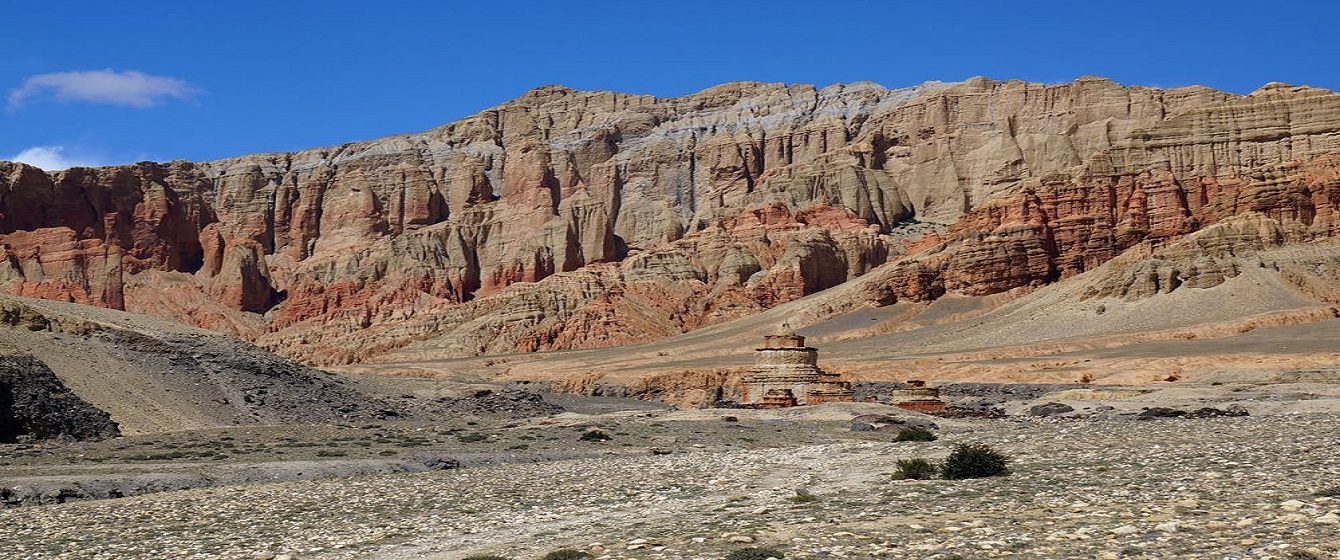
Restricted Area Treks in Nepal provide unique and remarkable destinations in the less adventure region, around high elevation Nepal Himalayas. Around Nepal, wide scope of beautiful and cultural regions fall inside the confined zone, where guests need to obtain special permits. The term-limited region is labeled because of its close boundary with Tibet/China, as well as to conserve and protect the immaculate climate. The restricted area also controls the mass progression of travelers, it helps and supports retaining and adjusting natural environmental surroundings.
An incredible way to enjoy an experience, where few groups of travelers/trekkers have the chance to wander around a restricted region, restricted area journey in Nepal, a different region where one can investigate the amicability of complete normal environmental elements. The government of Nepal and the Tourism Department has recorded the accompanying destinations of Nepal Himalaya, as restricted regions. Limited Areas are the accompanying region Far North West Upper Mustang, Upper/Lower Dolpo, and Humla-Limi valley. In the Mid-West is Manaslu Circuit and Tsum Valley includes Nar-Phu.
Where travelers/trekkers require a special permit to enter the above-limited region, in certain districts the expense for the licenses is higher. Be that as it may, all restricted region offers adventurers brilliant moment; few areas have very nice teahouses and Hotel for an overnight stay on route treks. Yet, in places like Upper/Lower Dolpo and Humla-Limi valley, trekkers need to spend overnight at Tent camping Groups.
The best way to wander around restricted regions for traveling should get together with solid neighborhood journeying organizations. One can't travel solo or an individual must be in a gathering of at least 2/3 people. The local organization will arrange and coordinate all planned reinforcement necessary, such as getting a special permit and setting up camp hardware. As well as giving master authorized guides, traveling staff, and watchmen with transportation either for an overland excursion or domestic flight.
Upper Mustang Trek:
Upper Mustang Trek is one of the famous restricted trekking regions around Nepal Himalaya, it is situated Far North West past Dhaulagiri and Annapurna Himalaya. For this trip to Upper Mustang, one should arrive at first Jomsom via air or take an overland excursion. Jomsom is a huge and settled town of the Mustang region, Jomsom is the beginning and end of Upper Mustang Trekking, arranged around the Lower Mustang region at Kaligandaki River valley.
A pleasant country, an extension of the vast South West levels of Tibet a dry scene but then lovely. Begin the leisurely walk from Jomsom heading far north-west, as the path follows the old Trans-Himalaya Salt Trade and Caravan Route to Tibet. Stroll to Kagbeni a pleasant Tibetan-style town, the beginning, and end-point of Upper Mustang. The excursion precedes to Lo Manthang the previous illegal walled realm of Mustang, heading into emotional scenes. Stroll past Chele and Gelling to Charang town encompassed by huge fields of buckwheat and visit the old religious monasteries.
At long last, the walk takes you towards the main feature of the experience to enter the previous walled kingdom Lo-Manthang. After a move more than a couple of passes and on a wide blustery valley to arrive at Lo-Manthang, here with time to investigate around. The old realm with Tibetan-style houses monitored inside an incredible high divider, visit the verifiable and social focus of the principle fascination of Lo-Manthang.
Partake in a visit through the principal cloisters Namgyal Gompa, Champa Lakhang (God House), Red Thubchen Gompa, Chyodi Gompa, and the incomparable Entrance Hall. After a magnificent time around Upper Mustang head back to Jomsom for a flight or drive to beautiful Pokhara. At present Upper Mustang can be reached by taking a drive to Lo-Manthang from Pokhara, the most noteworthy point for a short-term stop at 3,700 m high in Lo-Manthang.
Nar Phu Valley Trek:
Nar-Phu Trek, the region was shut to unfamiliar guests been open since the 1990s; one can dare to Nar and Phu. In the wake of acquiring an exceptional grant to go into high far secret corners of the Manang locale. Walk lead on a similar well-known trail of the Annapurna circuit for a day to the town of Kodo. Found Nepal Far North West behind enormous Annapurna Himalaya, near Chame the settled town of Manang region. From Kodo course redirects from the principal trail of Manang heading uphill towards distant north to arrive at first at Phu town.
Walk follows a river gorge covered in pine, rhododendron, and fir trees, then, at that point, enters a massive space to Phu. Partake in a rest day at Phu for acclimatization and investigate the desolate town and cloisters Tashilkhang and SamduCholing. After an intriguing time at Phu, stroll towards Na towns, which is practically like Phu, yet at the same very more modest? Partake in the second in this last town around stowed away corners of Western Himalaya, as well as the least visited district.
Gradually course takes you to cross high Kang-La and pass at over 5, 322 m high to arrive at Manang lower valley. On the principle trail of Annapurna Circuit, here with decisions on leaving the confined area of Nar and Phu. Either go on towards Jomsom crossing high Thorang-La Pass or return on a similar course through Pisang and Chame town.
Manaslu Circuit Trek:
Manaslu Circuit Trek is recorded as a restricted area, which was open for outside guests since late 1991, a picturesque and lovely experience. The walk includes crossing Larke-La Pass 5, 106 m high, the area additionally falls close in transit to the Tibet line. At present Manaslu circuit acquiring a stream of adventurers, because of its marvelous delightful view and neighborhood noteworthy culture. Mount Manaslu world's eighth most elevated top at 8,163m high, the walk covers the north and southern areas of Mt. Manaslu.
The experience includes an intriguing drive from Kathmandu, towards a low warm locale of the Gorkha area, and afterward strolls towards high green slopes. As walk enters the high country around the picturesque Manaslu valley, with time to investigate beautiful towns and the nearby culture of Buddhism.
Appreciate the journey of spending expedites in decent towns of Jagat, Namrung, and Lo-Gaon then at the fundamental town of Sama-Gaon. The valley is encased by a variety of high snow pinnacles of the Manaslu range, an extraordinary spot to go through an additional multi-day. At Sama Gaon partake in a rest day and a chance to observe the neighborhood's enormous customary life and custom of incredible interest. Further from the Sama-Gaon course prompts the foundation of Larke-La Pass-through Samdo town, toward the finish of Manaslu valley. The following daytime leaving the Gorkha region towards the Manang region, a precarious move to reach on top the most elevated point.
The Larke-La pass, an obstruction among Gorkha and Manang locale, from here on the long downhill to Bhimthang around Manang. Gradually walk follows on the beautiful backwoods way to reach the finish of the journey in Dharapani town. Situated on the mid-method of the famous Annapurna and Manaslu Circuit course, where a lengthy drive carries you to Kathmandu.
Tsum Valley Trek:
Tsum Valley, situated inside Mid-West Nepal, is in the middle of a monstrous Himalayan scope of Mt. Manaslu and enormous Ganesh Himal. Tsum Valley was shut for outside guests and afterward opened for intrigued voyagers to wander in the last part of the 1990s. One of the extremely unique regions around the Himalayas is recorded as a confined district, and worth a visit to this new Shangri-La. First and foremost, the walk takes you on a similar course to Manaslu, following a couple of days from Jagat and Deng towns.
Where trail redirects from the primary Manaslu circuit to head further east on the rear of massif Ganesh Himal. Then, at that point, enter the pleasant and superb country inside Tsum Valley, as the walk leads past Chokan-Paro and Nile towns. As the walk drives you to the primary feature at Mu Gompa, arranged over 3,700 m/12,139 feet high. Partake in your second around the remote and segregated nation and visit the intriguing old Buddhist religious community Mu-Gompa. Return journey downhill with a visit of Rachen Gompa and afterward back to low warm homestead towns for a drive to Kathmandu.
Lower Dolpo Trek:
An intriguing and superb experience towards Nepal Far West, because of its far-off area, where both-way flight includes. One of the least visited and limited regions, the walk takes you from Jhupal air terminal to Dunai settle town of Dolpo area. The primary component of Lower Dolpo Trek is its wonderful turquoise-shaded Phoksundo or Ringmo Lake. A great journey takes you to a wonderful country in agreement with the neighborhood's vivid culture. The towns of Dolpo entwined both Buddhism and the old Bon religion. Stroll inside a high nation, where the course prompts cross a few passes of Baga and Numa-La over 5,000 m.
Offers an excellent sensational view with perspectives on grand scenes and snow-covered tops, as far as Dhaulagiri Himalaya. The experiences go on by visiting the exquisite towns of Tokyu and Tarakot toward the finish of a trip to arrive at Jhupal. Returning a trip next early morning to Kathmandu through Nepalgunj city, after an important time around Lower Dolpo.
Upper Dolpo Trek:
The Upper Dolpo journey incorporates both the grand and social region of the entire Dolpo locale, taking a quick departure from Kathmandu. To arrive at Nepalgunj city air terminal, and afterward one more short trip to land at Jhupal in Dolpo. The walk prompts past the huge settled town at Dunai, following waterway and streams to wonderful emerald-shaded Phoksundo Lake. Found near the pleasant town of Ringmo, here with time to get accustomed to investigating the lovely region.
The experience then, at that point, heads to high Kang-La pass at 5, 200 m offers amazing perspectives on Dolpo's lovely nation scenes. Incorporates a great Himalayan scope of western Nepal, then, at that point, arrives at a remote and secluded little settlement at Shey Gompa.
This is additionally called the Crystal Monastery, as the cloister is found near Crystal Mountain close by. Appreciate astounding minutes around this beautiful remote spot, genuinely a spot mind-boggling. The return course takes you to the desolate towns of Saldang and Tokyu, an intriguing settlement enhance with brilliant wonderful culture. As the walk forges ahead grand Dho-Tarap valley to the recorded town of Tarakot and afterward at Dunai to end the journey. From Dunai drive to Jhupal for a trip to Kathmandu through Nepalgunj, after a most wonderful experience on Upper Dolpo Trek.
Humla and Limi Valley:
Humla and Limi Valley are one of the most far-off objections of Nepal near South West Tibet close to heavenly Mt. Kailash. A grand departure from Kathmandu and Nepalgunj city air terminal contact you to the hilly airstrip of Simikot. The fundamental slope town of Humla locale where this trip around Humla and Limi valley starts and finishes.
The walk follows outside of what might be expected, where not many western voyagers only occasionally visit this segregated district of Nepal. As journey follows on the old convoy shipping lane of Nepal and Tibet, which is as yet dynamic right up 'til today. The nearby individual's exchange and bargain in the border town of Tibet and Nepal.
One of few untainted limited locales, adventurers on this Humla and Limi valley will positively partake in the flawless environmental elements. Aside from picturesque scenes and mountain sees, the vivid culture and old traditions are similarly entrancing in investigating noteworthy towns. The walk takes you to Kermi, Yalbang, Muchu, Yari, Mane-PemeTil with Halji, and visit cloisters of incredible strict importance.
The entire excursion is a beautifully grand and social circuit, strolling to Hilsa the line town of Nepal and Tibet. At last, the walk closes at Simikot for an astonishing trip back to Kathmandu, after a striking experience on Humla and Limi Valley.
Recent Blog
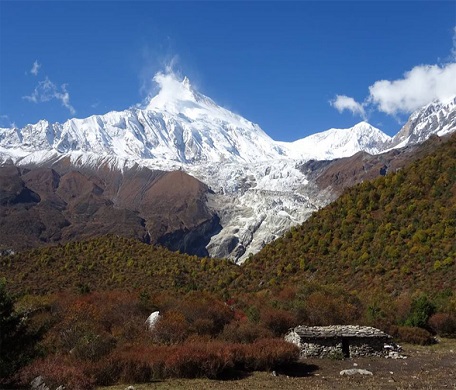
Manaslu Base Camp
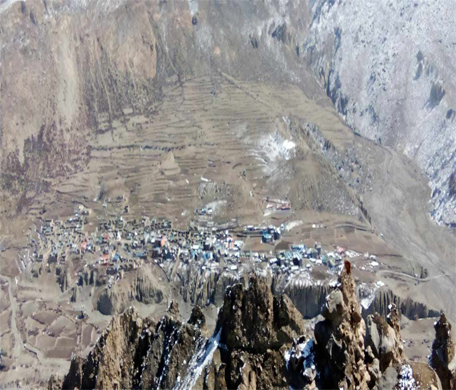
Manang Village
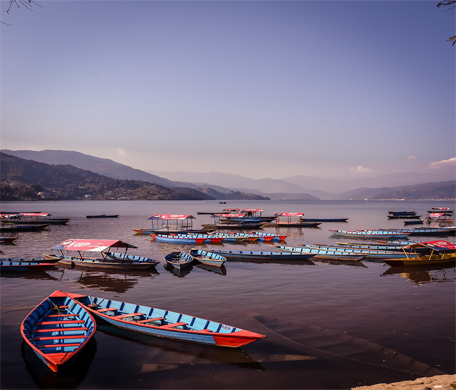
Pokhara Valley
Useful links, booking information, about company.
- Company Profile
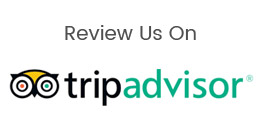
Address: Sorekhutte, Kathmandu
Phone: +9779818141334
E-mail: [email protected]
Associated with Following Company
Follow us on folloiwng links, payment options.

© Copyright 2024 Himalayan Local Guide. All rights reserved. | Developed by : Web Design In Nepal
Quick Inquiry

Call us / WhatsApp: +977-984-941-7757
- Annapurna Trekking
- Everest Trekking
- Langtang Trekking
- Village Trek
- Manaslu Trekking
- Kanchenjunga Trekking
Restricted Area Trekking
- Nepal Trekking FAQs
- Yoga Tour & Trek
- Nepal Hiking
- Day Trip Nepal
- Kathmandu Tours
- Tour in Bhaktapur Nepal
- Tour in Patan Nepal
- Bardia jungle safari
- Chitwan Jungle Safari Nepal
- Mountain flights Everest Himalayas
- Mountain Bike Tour
- Trishuli Kayaking
- Trishuli River Rafting Day Trip
- Bhotekoshi Rafting Nepal
- Ultralight in Nepal
- Bungee Jump
- Paragliding in Nepal
- Everest Heli Tour
- Annapurna Heli Tour
- Langtang Heli Tour
- Rara lake Helicopter Tour
- Kanchenjunga Helicopter Tour
- Bhutan Tour
- CEO/Founder
- Payment & Deposits
- Social work in community
- Travel Blog
Forget Password?
Do not have an account?
Already a member.

The government of Nepal has imposed stringent restrictions on international tourists entering certain hiking regions. Some specific restrictions and regulations must be followed when organizing restricted area tours and trekking in Nepal. Most of the restricted area is located behind the Himalayan rain shadow. Every year, only a few trekkers visit the area.
Only registered Nepalese trekking businesses are permitted to operate in certain locations. This requires every visitor to establish a link with a licensed Nepalese trekking company. The Department of Immigration of the Nepalese government issues specific permits to trekking firms. A minimum of two pax trekkers are required to organize the restricted area tour and trekking in Nepal.
To offer food, some of the restricted trekking locations have established minimum lodging and eateries. Basic tea houses may be found in Upper Mustang, Manaslu, and Tsum valleys. The rest of the valleys, including Upper Dolpo, Kanchenjunga, Rara Lake, Dhaulagiri, Makalu, and SimikotLimi, are still trekked with organized trekking. We at Happyland treks take you to the untouched restricted areas to witness the mesmerizing landscapes. Come, join us and enjoy the remote areas of Nepal trekking and tours. Experience with a difference with adventure expert and Sherpa’s guide.

Bardiya National Park 3 Night 4 Days, Nepal Jungle Safari.

Nar Phu trek Yangla
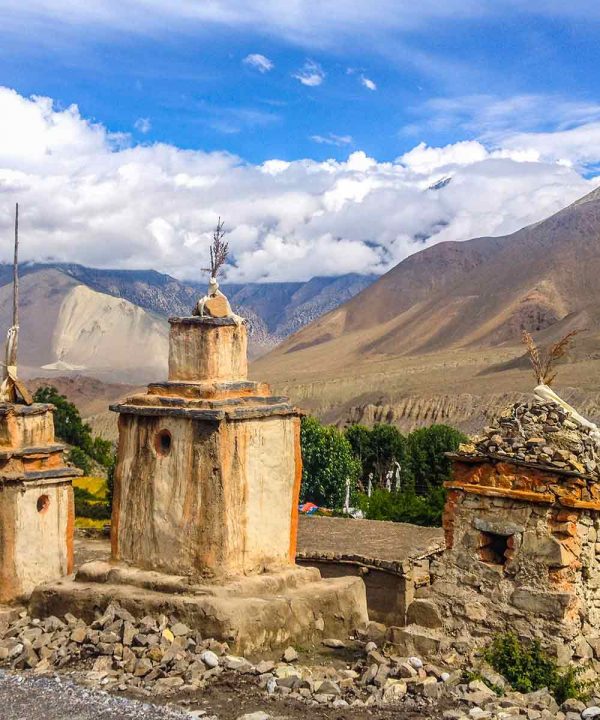
Upper Mustang Trek
Adventure specialist.

24/7 Call us / WhatsApp:

Shalom Treks | #1 Trekking Agency in Nepal
Restricted Regions
Nepal’s Restricted Regions are areas that remain relatively untouched, preserving their natural beauty and cultural heritage. These areas require special permits for trekkers, ensuring limited footfalls and a pristine environment. Venturing into these regions is like stepping back in time, where age-old traditions remain intact, and nature unveils its raw, unspoiled beauty.
Trekking in areas like Upper Mustang, known as the ‘Last Forbidden Kingdom’, is like delving into a living museum. The landscape here resembles the Tibetan plateau with its vast arid expanses, deep canyons, and unique rock formations. The ancient monasteries and palaces stand testament to the region’s rich history.
Similarly, regions like Manaslu, Dolpa, and Tsum Valley showcase a harmonious blend of nature and culture. They offer not just stunning mountain views, but also a deep dive into the customs, festivals, and daily life of the local communities. These regions have managed to retain their authenticity, thanks to their restricted status.
For trekkers seeking off-the-beaten-path experiences, the Restricted Regions of Nepal promise unparalleled adventure, profound cultural interactions, and memories that last a lifetime.
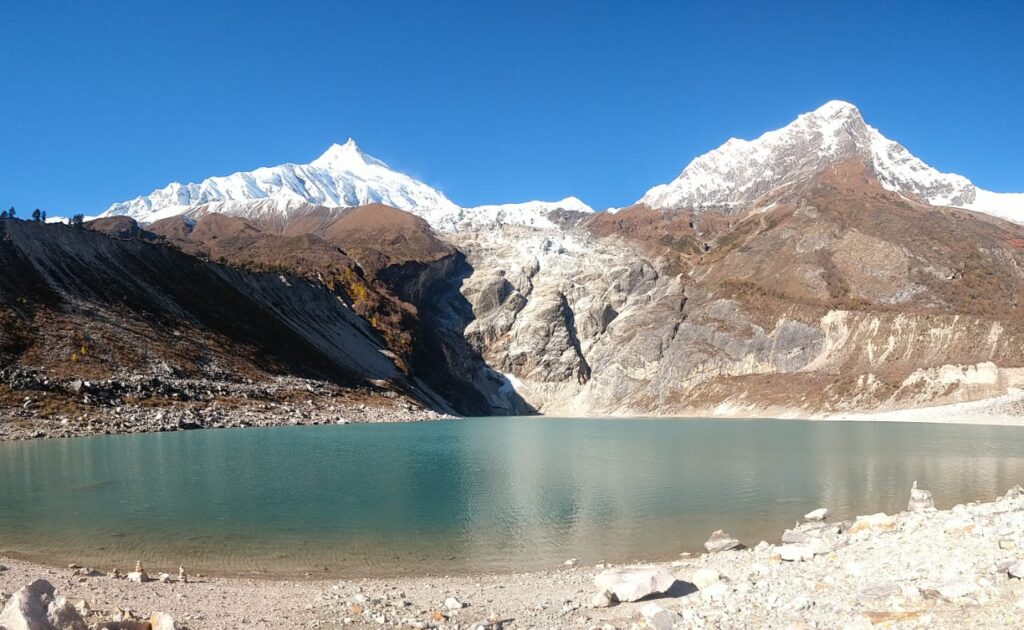
Manaslu Circuit Trek
Physical training before the trip should begin no later than 2 months before, as you will have a height of 3,000 meters above sea level and more. Hiking is from 6 km daily with an average pace that can be maintained for hours. It is important to have physical fitness & endurance. You will also need the right gear and clothes according to the weather.
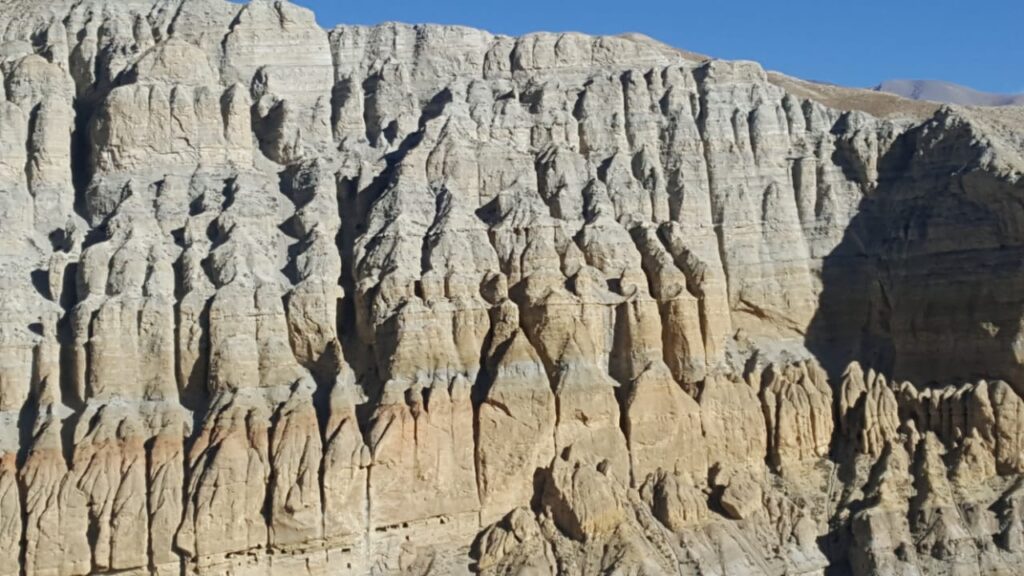
Upper Mustang Trek
You need to have good physical condition and be in top form. You’ll also require the right clothes for weather conditions and food items such as snacks or lunch breaks from your hiking adventure; water is essential too! This type of activity takes time, so ensure you’re physically able to get enough rest before starting any trips.
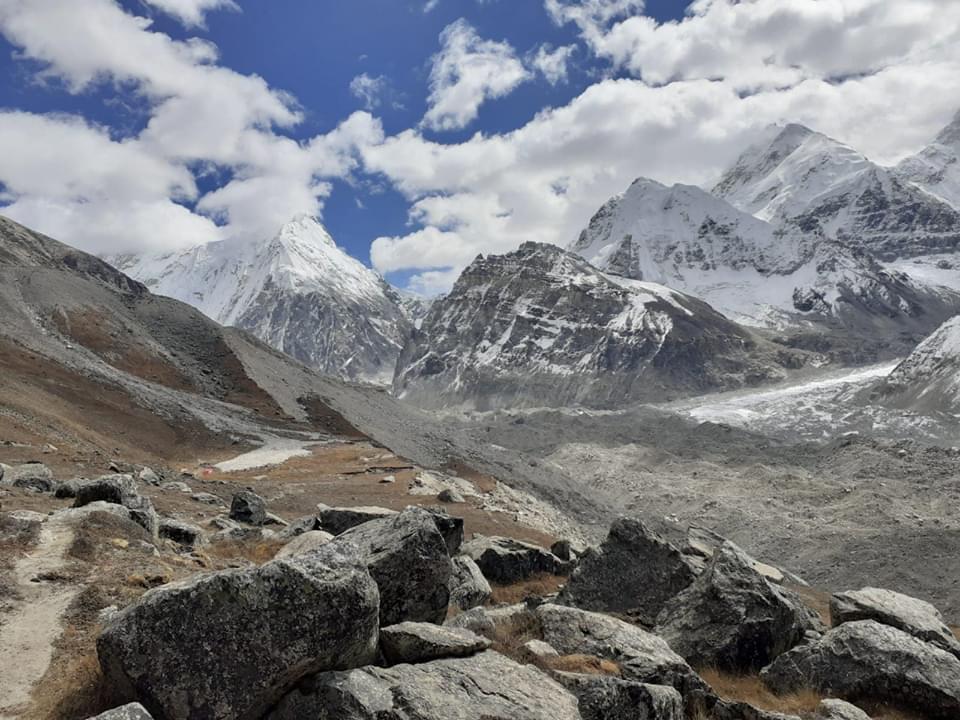
Kanchanjunga Base Camp Trek
Experience app by adding shalomtreks on your homescreen..
- Why Trek With Us
- Legal Documents
- Terms & Condition

Viber/Whats App
Obtaining trekking permits in nepal: a guide for trekkers.
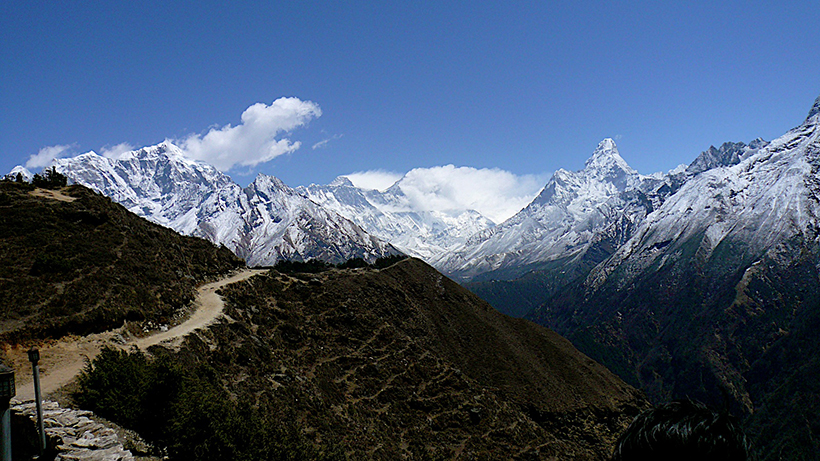
Nepal is a beautiful small land-locked country. The country is abundant with numerous snow-capped mountains and mountain ranges ranging from the east to the west. Trekking in the various regions of Nepal allows one to discover a unique culture, & tradition, experience the newness in every region, and the natural beauty in its original form.
To trek in Nepal, one needs to obtain a compulsory trekking permit. In addition to a trekking permit, one may also need to obtain other permits, depending on the region visiting and the activities one will be doing. For example, if one is planning to visit a restricted area, a national park, or a conservation area, one needs to obtain an additional Restricted Area permit or National Park or Conservation Area Permits.
Trekking permits are required for all trekking routes in Nepal, including popular routes such as the Annapurna Circuit and the Everest Base Camp Trek. The cost of a trekking permit depends on the route and the duration of the trek. The permit fees for the trekking routes in the different regions of Nepal are implemented by the Trekking Agencies’ Association of Nepal (TAAN) . We have listed the essential permit fee lists of trekking routes from the east to the far western regions of Nepal.
Kanchenjunga Region:
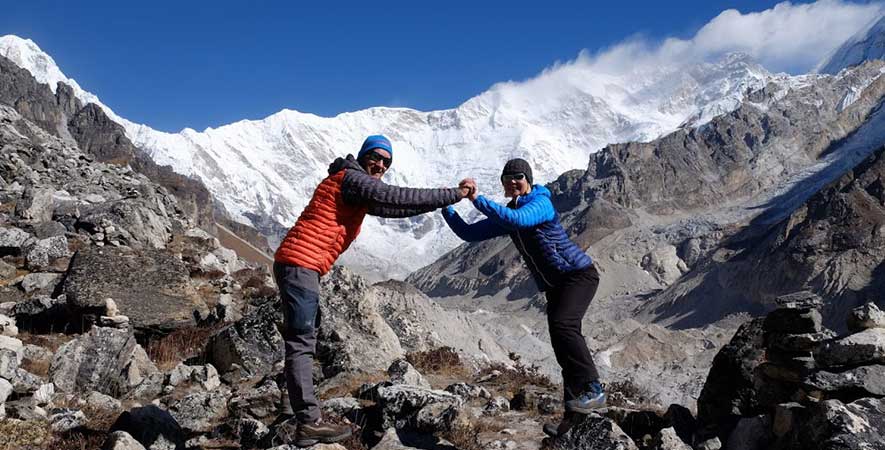
Kanchenjunga Region is popular for Kanchenjunga Circuit Trek or Kanchenjunga Base Camp trek . The essential permits are Kanchenjunga Conservation Area Permit (KCAP), and Kanchenjunga Restricted Area Permit (RAP).
Kanchenjunga RAP Fee
- USD 20 per person/week (for the first 4 weeks)
- USD 25 per person/week (beyond 4 weeks)
Kanchenjunga Conservation Area Permit (KCAP)
- Foreigners- NPR 2000/person
- SAARC- NPR 500/person
Makalu Region:
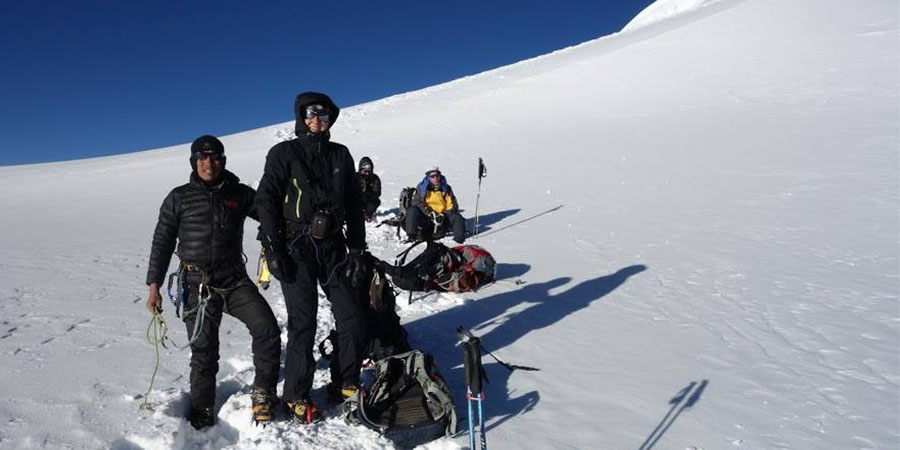
Makalu Base Camp Trek , Arun Valley Trekking, Makalu to Amphu Lapcha, Milke Danda Trek, and Arun to Hungku Valley Trek are some of the popular treks in the Makalu region. The required permits are:
Makalu Rural Municipality Permit
- NPR 2000 per person
Makalu Barun National Park
- Foreigners- NPR 3000
- SAARC- NPR 1500
Everest Region:
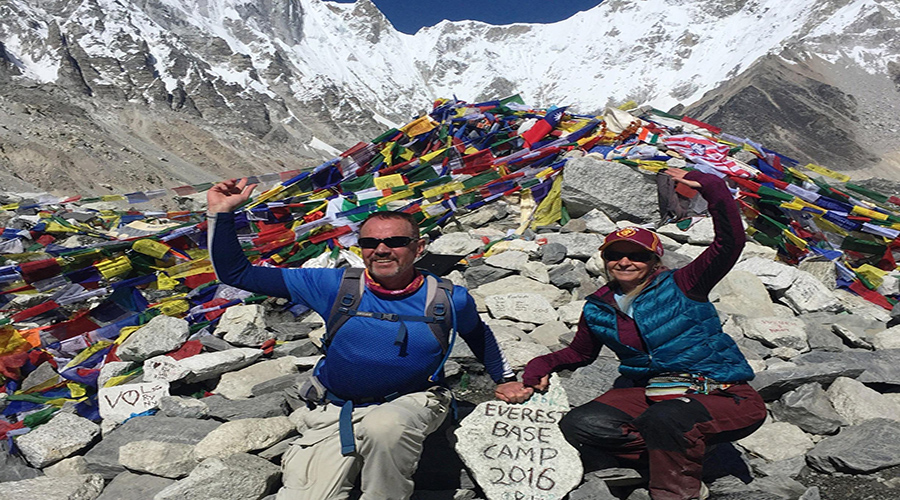
The most renowned region for trekking in Nepal is the Everest region. Everest Base Camp trek, Jiri to EBC Trek, Gokyo Lake Trek, Everest Three Pass Trek, and Everest Panorama Trek are some of the famous treks in this region. The required permits are Khumbu Rural Municipality Permit and Sagarmatha National Park (SNP).
Khumbu Rural Municipality Permit
- Foreigners- NPR 2000
- SAARC- NPR 1000
Sagarmatha National Park (SNP)

Rolwaling Region:
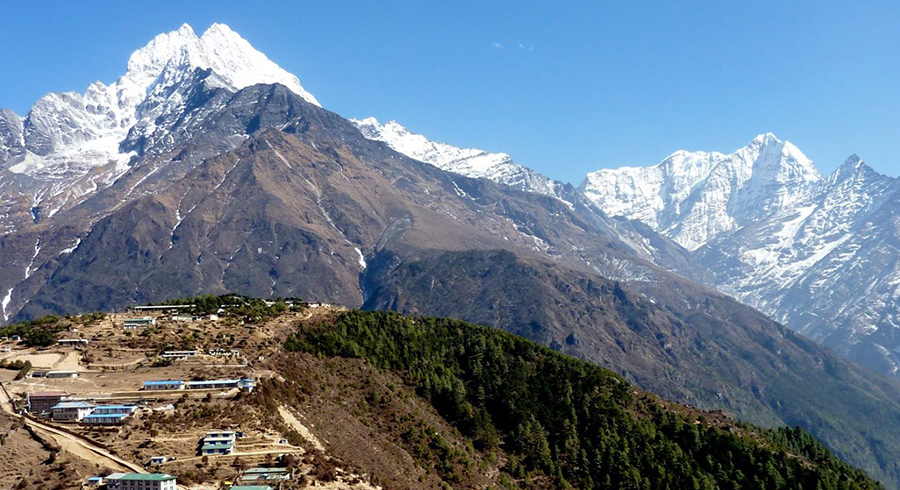
This region is adjacent to the famous Everest region. It falls under the Gaurishankar Himalaya Range. Rolwaling Region is known for its natural beauty and its diverse flora and fauna. Rolwaling Valley Trek is popular in this region. Gaurishankar Conservation Area Project (GCAP) and Rolwaling Special Permit are required permits.
Rolwaling Special Permit Fee
- USD 20 per person per week
Gaurishankar Conservation Area Project (GCAP)
Langtang Region:
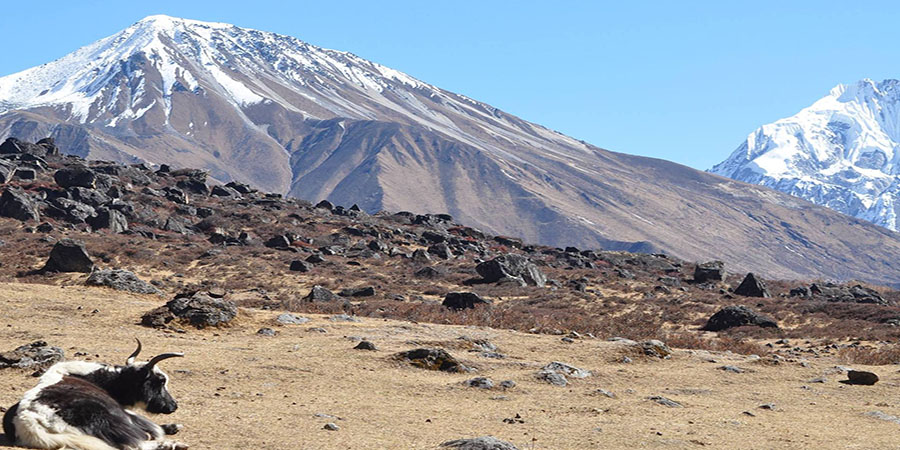
Langtang Ganja La Pass Trek, Goasaikunda Trek, Helambu Trek, Langtang Valley Trek, Tamang Heritage Trail are most popular treks in the Langtang region. We required Langtang National Park (LNP) and Trekkers Information Management System (TIMS) permits. TIMS permit is classified into three groups.
Trekkers Information Management System (TIMS)
- Green TIMS (individual trekkers) - USD 20 per person
- Blue TIMS (organized group trekkers) - USD 10 per person
- Pink TIMS (SAARC individual trekkers) - USD 6 per person
- Pink TIMS (SAARC group trekkers) - USD 3 per person
Langtang National Park (LNP)
- Foreigners- USD 30/person
- SAARC- USD 15/person
Ganesh Himal Region:
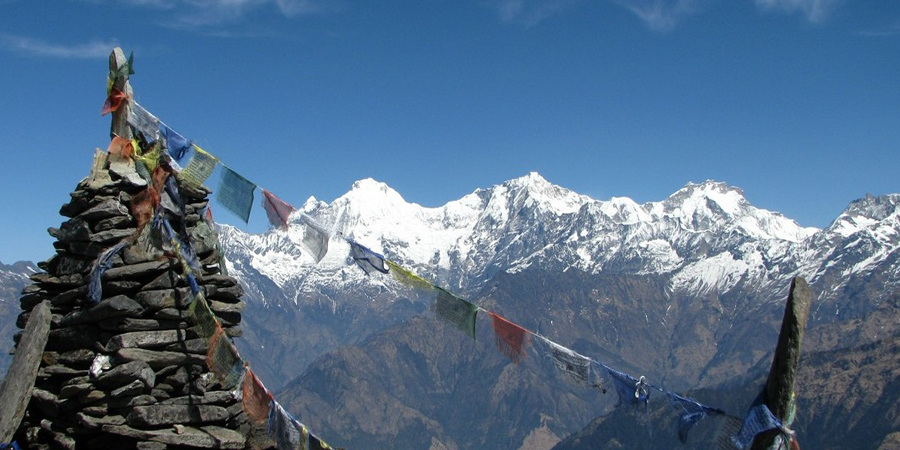
The region is situated between the Langtang National Park and Manaslu Conservation Area. The less–traveled region is a hidden gem abundant with picturesque natural beauty. Ruby Valley Trek, Ganesh Himal Base Camp Trek, Ganesh Himal Singla Pass Trek, and Paldor Base Camp Trek are popular treks in the Ganesh Himal region. We required TIMS and Langtang National Park permits.
Manaslu Region:
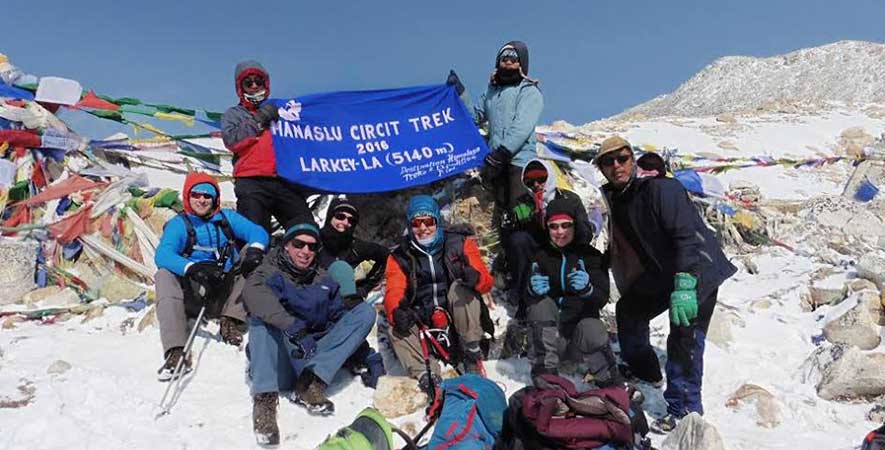
Manaslu Circuit Trek, Manaslu Two Passes Trek, & Manaslu Rupina La Pass Trek, Manaslu Tsum Valley Circuit Trek, Tsum Valley Trek are the prominent treks in the Manaslu Region. Manaslu region permits are different for different trek routes which are as follows:
- Permits for Manaslu Circuit Trek, Manaslu Two Passes Trek, & Manaslu Rupina La Pass Trek= Manaslu RAP, MCAP, & ACAP
- Permits for Manaslu Circuit Trek with Tsum Valley= Manaslu RAP, MCAP, ACAP, & Tsum Valley RAP
- Permits for Tsum Valley Trek= Tsum Valley RAP, & MCAP
The permit fees are as follows:
Manaslu Restricted Area Permit (RAP) Fee
- USD 100/week per person + USD 15/person per day (beyond a week) [Sep-Nov]
- USD 75/week per person + USD 10/person per day (beyond a week) [Dec-Aug]
Manaslu Conservation Area Permit (MCAP)
- SAARC- NPR 1000/person
Annapurna Conservation Area Permit (ACAP)
Tsum Valley Restricted Area Permit (RAP) Fee
- USD 40/week per person + USD 7/person per day (beyond a week) [Sep-Nov]
- USD 30/week per person + USD 7/person per day (beyond a week) [Dec-Aug]
Annapurna Region:
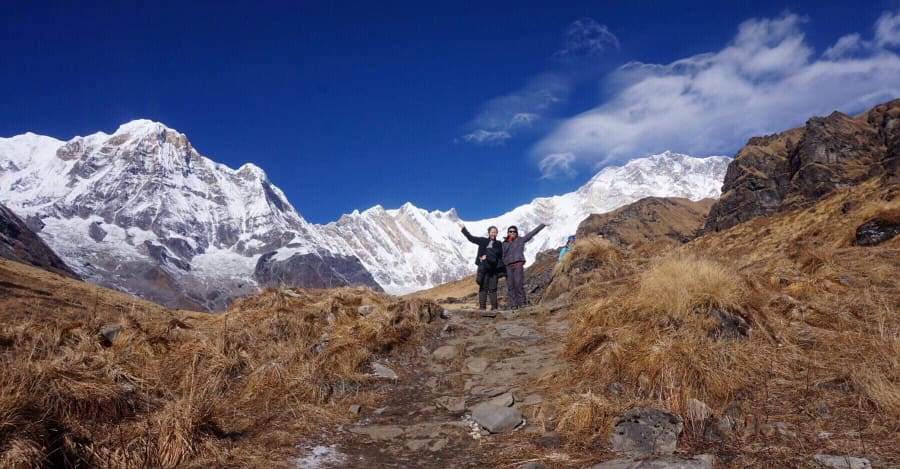
The classic and most popular trek region after the Everest region is the Annapurna region. Some of the famous treks are Annapurna Base Camp Trek, Annapurna Circuit Trek, Annapurna Sanctuary Trek, Ghorepani Poon Hill, Mardi Himal Trek, and Jomsom Muktinath Trek.
- Foreigners- NPR 3000/person
- SAARC- NPR 600/person
Upper Mustang:

Upper Mustang also lies in the Annapurna region. The adventurous and least explored trek regions in Nepal are very impressive. We required ACAP and RAP permits.
Restricted Area Permit (RAP) Fee
- USD 500/person (10 days) + an extra USD 50 per person per day (beyond 10 days)
Manang region:
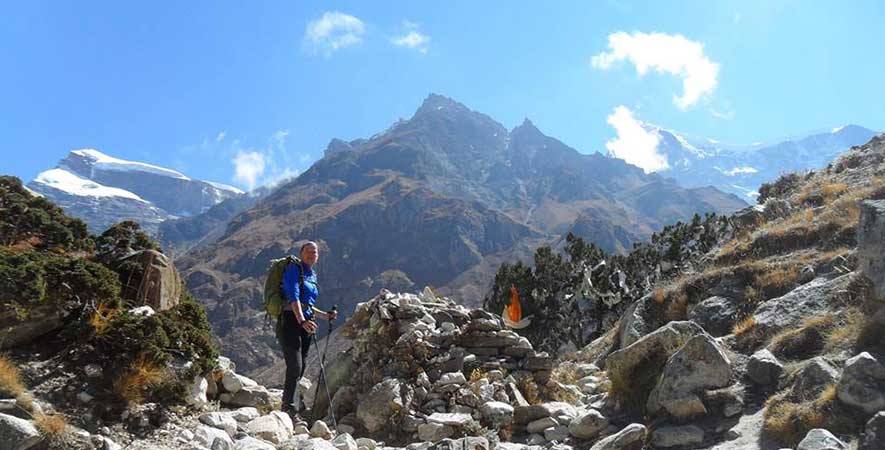
The region has some unexplored trek routes such as Nar-Phu Valley and mesmerizing Tilicho Lake Trek. Nar-Phu Valley trek requires a Restricted Area Permit and ACAP. And, Tilicho Lake Trek requires only ACAP and TIMS permits.
Nar-Phu RAP Fee
Dhaulagiri Region:

Dhaulagiri Circuit Trek is challenging and adventurous which is in the Dhaulagiri region. This region is adjacent to the Annapurna region. Thus, the required permits are:
Dolpo Region:
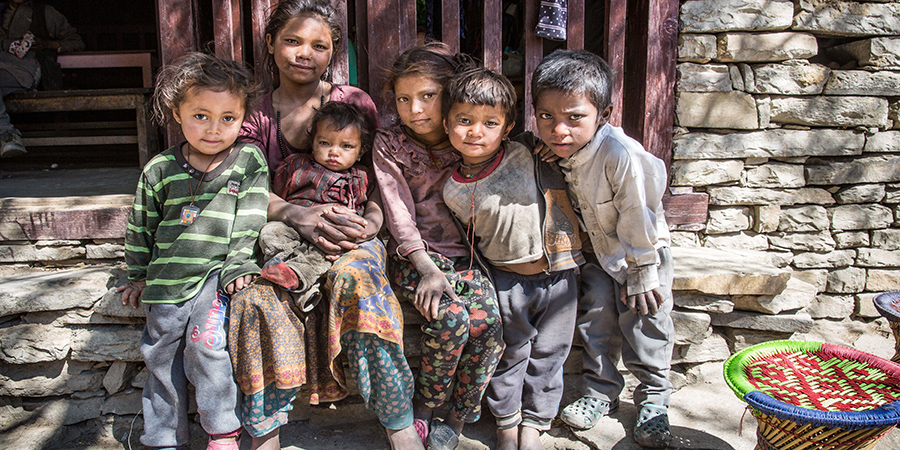
The least explored yet adventurous beautiful trek region is Dolpo. The region is rich in unique and unexplored natural beauty in its original form. Upper Dolpo and Lower Dolpo are the two main trek regions. Their required permits are:
Lower Dolpo
Shey Phoksundo National Park and Restricted Area Permits (RAP) Permits are required to trek to Lower Dolpo.
Lower Dolpo RAP Fee
- USD 20 per person per week (first 4 weeks) + USD 5 per person per week (beyond 4 weeks)
Shey Phoksundo National Park
- For all trekkers- NPR 3000
Upper Dolpo
Shey Phoksundo National Park and Restricted Area Permits (RAP) for Lower Dolpo and Upper Dolpo Permits are required to trek to Upper Dolpo.
Upper Dolpo RAP Fee
- USD 500 per person (10 days) + an extra USD 50 per person per day (beyond 10 days)
Mugu Region:
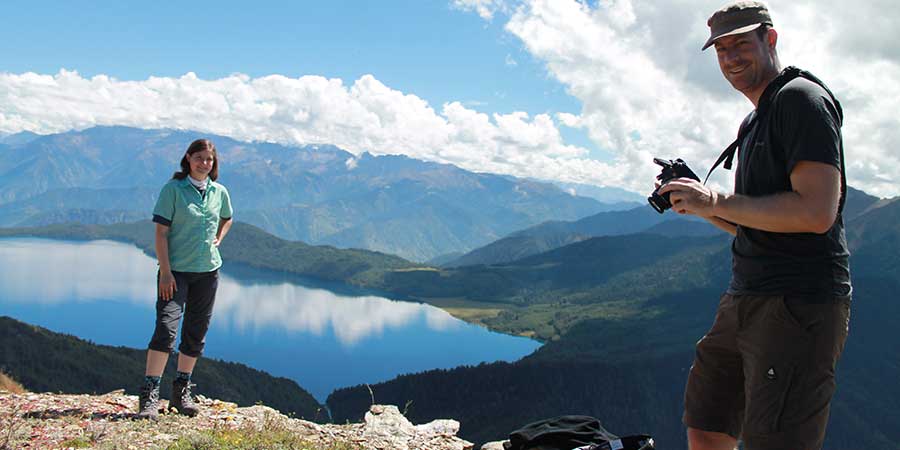
Rara Lake is the biggest freshwater lake in Nepal which lies in the Mugu region. It is well-known as Mahendra Lake. Rara Lake is very beautiful. This region is famous for the Rara Lake Trek. The required permits are:
Mugu RAP Fee
- USD 100 per person (for a week) + an additional USD 15 per person per day (after 7 days)
Rara National Park
Humla Region:
One of the farthest and least developed regions of Nepal is Humla. This region is popular for its Simikot Limi Valley Trek . The valley treks allow one to explore the region in its truest form. The required permits are:
Humla RAP Fee
- USD 50 per person (7 days) + an extra USD 10 per person per day (beyond 7 days)
Humla Village Development Community
- For all trekkers- USD 10 per person
Api Nampa Valley:
The newly discovered valley is Api Nampa. It is gaining popularity for the Api Himal Base Camp Trek. One can witness the spectacular views of Api Himal, Nampa Himal, Gurans Himal Range, Saipal Himal, and many more. The required permits are:
Api Nampa valley RAP Fee
- USD 90 per person (7 days) + an extra USD 15 per person per day (beyond 7 days)
Api Nampa Conservation Area
We have listed out the trekking permit fees for almost all of the trekking routes of the regions extending from the east to the far west. Still, there may be many queries regarding the permit fees besides their cost. Some possible queries are listed below:
Are the permits compulsory to trek in Nepal? Yes, the permits are compulsory to trek in Nepal. No one is allowed to trek or carry out trekking activities without permits.
What type of Trekking permits do we require to trek in Nepal? Mostly, the permits we require are TIMS, Municipality Trekking permits, Restricted Area Permits, and entry permits to National Parks or Conservation Areas. We may not require all mentioned permits for one single trek. It all depends on the different trek routes of the different regions of Nepal.
Where to get the Permits? One can obtain a trekking permit through a registered trekking agency in Nepal or the Tourist Service Centre in Exhibition Road, Kathmandu, or TAAN office in Pokhara. Some trekking agencies offer trekking permit services as part of their package. It is recommended to obtain a trekking permit before one arrives in Nepal to avoid any delays. Note: The office hours to take the permits are officially 10 am to 5 pm. Lunch break is between 1 pm-2 pm. The office remains closed on Saturdays and national holidays.
Where can I get the National Park and Conservation Area Permits? One can get National Park and Conservation Area Permits from the Tourist Service Centre on Exhibition Road, Kathmandu. Also, one can get on the spot at the entrance of National Parks or Conservation Areas. It is the easiest way to obtain permits. Trekkers can relax and prepare for their trek as all essential permits are arranged by the travel agency.
Where can I get the Restricted Area Permits (RAP)? One can get the Restricted Area Permits from the Tourist Service Centre in Exhibition Road, Kathmandu, or TAAN office in Pokhara. But, all of the RAP permits are arranged by the travel agency for you. So, one needs to worry about it. For trekking in Restricted Areas, solo traveling is not allowed. Thus, solo travelers can contact a travel agency to arrange a RAP permit for them. Also, one doesn’t require TIMS to trek in the Restricted Areas of Nepal. As all essential permits are looked after by the travel agency, trekkers can relax and prepare for their trek.
Do I require a guide or assistance from Travel Agency ? It is important to note that trekking in Nepal requires a high level of physical fitness and proper planning. It is recommended to hire a registered trekking agency or a guide to assist with your trek and ensure a safe and enjoyable experience. A travel agency looks after all the essential permits required for the trek. Also, for traveling to restricted areas as well as other trekking areas of Nepal, assistance from the travel agency makes it easier.
Things to Consider by Trekkers in Nepal
- Respect Local customs and Traditions
- Solo Traveling in Restricted Areas is strictly prohibited
- Trekkers are only allowed to trek in the specified routes as per the trekking permits
- Trekkers can’t change the trekking routes to trek
- Trekkers must strictly follow the guidelines issued by an official while trekking in the Restricted Areas
Who can apply for the permits? What documents are required?
Authorized travel agencies, as well as individual trekkers, can apply for trekking permits.
The following documents are required:
For Individual Trekkers:
- Your passport with a copy of the passport
- Two passport-sized photographs
- The name of the trekking route with entry & exit points
- The duration of your trek with a detailed trek itinerary
- Entry and Exit dates for Nepal
- Local Emergency Contact Number
- Home-country emergency contact number
- Travel Insurance Policy Number
For Authorized Travel Agencies:
- Online application form (trekkers) Link to Trekking Permit Application
- Passport Photocopy
- Copy of a Valid Visa (at least covering trekking days)
- Trekker’s Name List
- Detailed Trekking Program Schedule
- Guarantee letter & Agreement with Agency
- Trekking Agency’s Tax Clearance Certificate
- Both foreign nationals and Nepalese staff (accompanying the trekkers) Insurance Documents in full details
- License issued by (The Ministry of Tourism, Culture, and Civil Aviation to operate the trekking business)
- License issued by [Nepal Rastra Bank (NRB) allowing exchanging of foreign currencies]
- Registration Certificate of Permanent Account Number
- Bank Voucher payment (fees) for permits
Post your comment
Our recent posts.
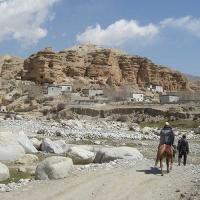

- Adventure Activities
Festivals And Culture
- Hiking And Trekking
Peak Climbing
- Sightseeing Information
Tourism Info
- Trekking Information
Exploring Restricted Areas In Nepal
Nepal, celebrated for its awe-inspiring landscapes and cultural richness, beckons daring adventurers and curious explorers. While most of the country extends a warm welcome to travelers, there are enigmatic pockets known as “ Restricted Areas in Nepal” where accessibility is limited.
These elusive zones, though challenging to reach, harbor unparalleled beauty and profound cultural significance. This article serves as your guide to the captivating world of Nepal’s restricted areas, offering crucial information, permit details, and insights for an extraordinary once-in-a-lifetime expedition.
Understanding “Restricted Areas in Nepal”
A restricted area in Nepal denotes a specific region with restricted tourist access, requiring special permits for entry. Rigorous regulation by the Nepalese government aims to manage tourism meticulously, preserving the areas’ distinctive cultural, ecological, and geopolitical importance.
Reasons Behind “ Restricted Regions in Nepal “
Nepal designates these regions to achieve multiple objectives, including the preservation of indigenous cultures, conservation of fragile ecosystems, addressing geopolitical sensitivities, promotion of sustainable tourism, protecting cultural heritage, and encouraging offbeat exploration.
Legal Framework Governing Nepal’s Restricted Areas
The Nepalese government, facilitated by the Department of Immigration and relevant Authorities, enforces legal regulations to control access to these restricted areas. These regulations encompass permit requirements, mandated guided tours, permit fees, validity periods, and strict adherence to regulations regarding local customs, environmental norms, and cultural sensitivities.
Distinguishing Accessible Areas from Restricted Areas
Accessible areas in Nepal cater to visitors with ease of reach, developed tourism infrastructure, and open access. In contrast, restricted areas demand special permits due to rugged terrain, remoteness, conservation priorities, or security concerns.
Detailed Comparison:
Topic accessible areas restricted areas.
Definition: Areas open to the public, easily reachable, and often developed for tourism or local activities. Areas with limited or controlled access due to safety, security, conservation, or other cultural reasons.
Accessibility: Generally easy to reach via roads, trails, or transportation services. Access might be restricted due to rugged terrain or remoteness.
Permits: Generally, no special permits are required for entry. Special permits or approvals from relevant authorities are needed to enter.
Conservation: Some accessible areas might have conservation efforts but are open to visitors. Restricted areas often have stricter conservation measures in place to protect ecosystems, wildlife, or archaeology.
Tourism Development: Often well-developed with infrastructure, accommodations, and facilities. May have limited or no tourism infrastructure for preservation purposes.
Cultural Sites: Accessible areas might include well-known cultural heritage sites, and visitors can freely explore them. Restricted areas could include culturally sensitive sites integral to indigenous communities. These sites may be restricted to protect the local way of life.
Wildlife Reserves: Accessible wildlife reserves are open for eco-tourism and wildlife watching. Restricted wildlife reserves might only allow scientific research or limited entry to protect animals and habitats.
Security: Generally safe and without major security concerns. They are restricted due to security, political instability, or military presence.
Photography and Media: Visitors can take photos and document their experiences. Photography and media activities may require permits or be prohibited.
Tourism: Impact Higher tourist footfall potentially impacts local culture and the environment. Restricted to prevent over-tourism and maintain ecological balance.
Key “Restricted Areas in Nepal”
1. upper mustang.
Located in north-central Nepal, Upper Mustang, with its unique desert-like landscape, is restricted to safeguard its Tibetan-influenced culture. A Restricted Area Permit (RAP) and guidance from a registered trekking agency are mandatory for exploring the walled city of Lo Manthang, ancient monasteries, and the mystic traditions of Sky Burial, Bon, and Buddhism.
2. Upper Dolpo
In the far-western region, Upper Dolpo preserves its rugged terrain and cultural heritage. A special RAP is required to witness attractions like Phoksundo Lake, Shey Gompa, and the unique lifestyle of the Dolpo-pa people.
3. Lower Dolpo
Nestled in the midwestern region, Lower Dolpo, known for its remote landscapes, ancient monasteries, and mystical Phoksundo Lake, requires a RAP for exploration. It offers a rare opportunity to witness the traditional lifestyle of local communities.
One of Nepal’s most isolated regions in the far northwestern part, Humla safeguards its cultural heritage and fragile environment. Travelers must obtain a RAP to explore attractions such as the Limi Valley and the trek to the sacred Mount Kailash in Tibet.
5. Taplejung
In the Far East, Taplejung’s restricted status aims to preserve the Kanchenjunga Conservation Area. A RAP is necessary to trek in this area, which boasts the Kanchenjunga massif and the cultural richness of local ethnic communities.
Central Nepal’s Dolakha, with its historical significance and proximity to the Tibetan border, requires a special restricted permit. The area offers stunning views of the Himalayan peaks, religious sites like the Dolakha Bhimsen temple, and a glimpse into Nepal’s history.
7. Tsum Valley- Gorkha
Hidden in the Gorkha district, the Tsum Valley, restricted to preserve its unique culture, mandates a RAP and guided travel. Visitors can explore ancient monasteries like Mu Gompa and immerse themselves in the warm hospitality of the local Tsumba people.
8. Sankhuwasabha
In eastern Nepal, Sankhuwasabha is restricted to protect the Makalu Barun National Park. A RAP and a Makalu Barun National Park entry permit are essential for traversing challenging trekking trails and spotting various endangered species.
9. Solukhumbu
Famous for the Everest region and Everest Base camp trek, Solukhumbu is restricted to conserve its natural beauty and protect the Sherpa community’s culture. ARAP and a Sagarmatha National Park entry permit are required for trekking, with attractions like the Kalapatthar and Tengboche Monastery.
Located in northern Nepal, Rasuwa is restricted due to its proximity to the Tibetan border. A RAP is necessary for trekking and cultural exploration, with attractions like the Langtang Valley , Gosaikunda Lake, and the Langtang National Park.
Situated in the Annapurna Conservation Area, Manang is restricted to protect the local culture and environment. Trekkers need a RAP and an Annapurna Conservation Area Permit (ACAP) to explore attractions like the Annapurna Circuit Trek and ancient monasteries.
12. Bajhang
A remote and restricted region in the far-western part, Bajhang’s untouched beauty and cultural diversity require a RAP for exploration. Visitors can engage with local ethnic communities, experiencing the region’s rich heritage.
13. Manaslu Nubri Valley- Gorkha
Nestled in the Gorkha district, the Manaslu Nubri Valley is restricted due to its geopolitical sensitivity. A restricted area permit and a trekking permit are necessary to discover diverse landscapes and traditional Tibetan villages.
Situated in the far northwestern region, Mugu’s pristine landscapes and cultural heritage necessitate a RAP for exploration. Trekkers can embark on an off-the-beaten-path adventure, encountering serene lakes and indigenous communities.
16. Darchula
In the far west, Darchula’s breathtaking beauty and cultural richness are preserved through restricted access. Travelers must obtain a RAP for an authentic trekking experience in this remote and pristine landscape.
Tips for Exploring “Restricted Areas in Nepal.”
Embarking on a journey to Nepal’s restricted areas requires careful planning. Here are some practical tips to enhance your experience:
Obtaining the Necessary Permits:
Ensure you secure all required permits before commencing your journey, including the Restricted Area Permit (RAP) and any additional permits specific to your chosen area.
Choosing an Authorized Trekking Agency:
Select a reputable trekking agency, such as Mission Himalaya Treks, with experienced guides familiar with the region. Their insights into local culture and customs are invaluable.
Hiring Local Guides and Porters:
Engage local guides and porters for their intimate understanding of the area, providing cultural insights and ensuring a smoother travel experience while supporting the local economy.
Preserving Endangered Flora and Fauna:
Respect the delicate ecosystems by avoiding disturbances to plants and wildlife. Follow designated trails and minimize your impact on nature.
Responsible Tourism in Sensitive Ecosystems:
Adhere to the principles of responsible tourism, avoiding littering, using eco-friendly products, and being mindful of your carbon footprint.
Supporting Local Initiatives:
Contribute to local conservation efforts and community-driven projects promoting sustainable development during your visit.
In Conclusion
Nepal’s restricted areas unveil a tapestry of history and culture, offering a unique journey into the past. As you traverse these hidden corners, you discover history and become a chapter in it. The locals, custodians of traditions for generations, invite you to be part of their timeless story.
Explore these extraordinary spots for an experience unparalleled in Nepal, where every step is a testament to the rich heritage and natural splendor guarded by the majestic Himalayas.
You Might Also Like

14 Hindu Pilgrimage Sites in Nepal

5 Festivals Celebrated in Himalayas of Nepal

51 Facts of Nepal Someone Don’t Know

10 Best Peak Climbing in Nepal

Spirit of Himalaya Adventure
Beauty of Upper Mustang
- You are here:
- Destinations
- Nepal Trekking
Restricted Area Trekking in Nepal

Upper Dolpo Trek

Rara Lake Trek

Simikot Trekking
- from US$4400 US$5500

Kanchenjunga Circuit Trek
- from US$1959 US$2449

Kanchenjunga South Base Camp Trekking
- from US$1949 US$2436

Kanchenjunga Base Camp Trek
- from US$1472 US$1840

Kanchenjunga Short Trek
- from US$1353 US$1691

Nar Phu Valley Short Trek
- from US$860 US$1050
.webp)
Upper Mustang Trek with Luri Gumba
- from US$1620 US$2025

Manaslu Trekking with Nar Phu Valley
- from US$2561 US$3201

Upper Mustang Trek Avoid The Road
- from US$1599 US$1999

Nar Phu Valley Trek with Annapurna Circuit
- from US$1439 US$1799
Hunting down some extraordinarily trekking background… gets into the restricted zone and feel the stupefied authority of nature and laws…
Trekking in Nepal's Restricted area is a wonderful way to have an exciting and adventurous lifetime experience for everyone. Until 1991, a couple of portions of the remote zones inside the edge of Asian nations were restricted for the outside guests to shield the normal setting and social parts of the various ranges. The regulation had been done to supply security and well-being for each of the outside trekkers and Nepal's northern edge with China. At any rate, the measures and regulations balanced when the multiparty mainstream government in Nepal still since the new larger part principle consecrated laws that entered a couple of parts of the country for passing by the strictly managed regions in Nepal. Experiencing the trekking trials of this restricted space is like the danger seekers act.
The Restricted Area Trek ought to be completely orchestrated and structured through a Nepal Motherhouse so the association will get primed the trekking permit through a plan of procurements and guarantee letters with no anticipation. The restricted districts encapsulate higher Dolpo trekking , Manaslu trekking, Kanchenjunga trekking , Narphu Valley Trekking, Upper Mustang Trekking , Rara trekking, Rolwaling Trekking , and higher steed trekking. Trekking in these areas ought to be tired full. It’s to be totally outfitted with tents, all supporting staff and cooks et cetera. Trekkers can't trek alone inside the restricted extends of Nepal in light of the way that it is fundamentally too risky and unsafe. Trekking inside the group of the slightest two individuals is important in the company of a lawmaking body common officer as per the government runs the show. The setting officer accepts an incredibly discriminating part to handle all the assemblies with the police and government work puts in travel on the meander. Trekking in a Restricted space with legal gatherings is one of the first dashing and valiant activities, one will experience in their life. Come and join us as we offer excellent services to restricted area trek with our qualified and dedicated trekking professionals.

Restricted Treks in Nepal
Technically speaking, Restricted areas in Nepal strictly control the flow of foreigners. Most of the trails are used to prohibit the entrance of foreigners, but due to the economic opportunities that tourism brings, foreigners are now allowed to enter, usually with a hefty entry fee. Also, visiting Restricted areas in Nepal is only possible with a government-registered trekking company and a minimum of two people in the group. You may wonder what is gained by trekking in an area that is more controlled and expensive than other places, but that is an easy answer.
These “restricted areas in Nepal” are this way to preserve the culture and environment that make them so special. The point is not the keep foreigners out, but rather to keep the culture and unspoiled landscapes ‘in,’ or alive. The Restricted area of Upper Dolpo, Rara, Mustang, Manaslu, Kanchenjunga, etc. It is some of the most pristine, beautiful trekking spots in Nepal. It is no coincidence that they are also restricted areas. Few tourists make the effort to visit them, so you can walk for days without seeing another tourist. Because of this, you will be able to develop closer connections to the locals than other treks. Many of the restricted areas in Nepal lie along the border with Tibet, where you will experience a completely different culture than most other places in Nepal.
Often, the remoteness of restricted areas of Nepal calls for camping. However, many Restricted trekking trails now offer teahouse accommodation for those who wish not to sleep under the stars. It is your choice if you want to do a teahouse or camping trek. To see Nepal’s most faraway places and most well-preserved cultures, you should check out our Restricted Treks. Reach out to us if you have any questions or concerns, we are happy to help!

Rolwaling Trek | Rolwaling Valley - 10 Days

13 Days Manaslu Circuit Trek

Manaslu Tsum Valley Trek - 23 Days

Kanchenjunga Circuit Trek - 27 Days

short Kanchenjunga Circuit Trek - 16 Days

Lumba Sumba Pass Trek - 18 Days

Kanchenjunga South Base Camp Trek - 13 Days

Kanchenjunga North Base Camp Trek - 16 Days

Upper Mustang Trek - Desert to Mountains

Upper Dolpo Trek - Unexplored Land of Nepal
We use cookies to ensure that we give you the best experience on our website.

- Best Hikes In The World
- Appalachian Trail
- European Hikes
- Nepal Hikes
- Patagonia Hikes
- See All Hikes
- Mount Kenya
- Mount Kilimanjaro
- Mount Toubkal
- See All Mountains
- South Africa
- New Zealand
- Switzerland
- United Kingdom
- Packing Lists
Nepal Hiking Routes – Complete Overview Of Hikes In Nepal
Asia , Nepal
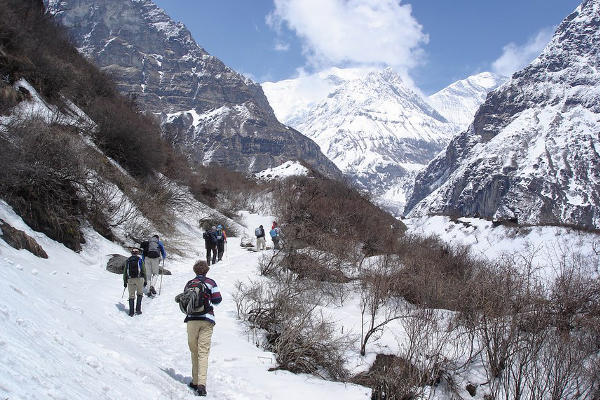
Apart from being the home to some of the highest mountain peaks and breath-taking views in the world, Nepal is particularly popular as it offers a vast variety of trekking routes.
There are short routes and long routes, easy routes and challenging routes, busy routes and remote routes. There are routes for young trekkers and families, as well as routes for veteran trekkers and adventure-seekers.
Nowadays, there are even routes that offer healthy living experiences that encompass meditation, yoga and cultural tours to traditional Nepalese villages.
In this article, we'll explore the best Nepal treks by region.
Nepal Trekking Routes by Region
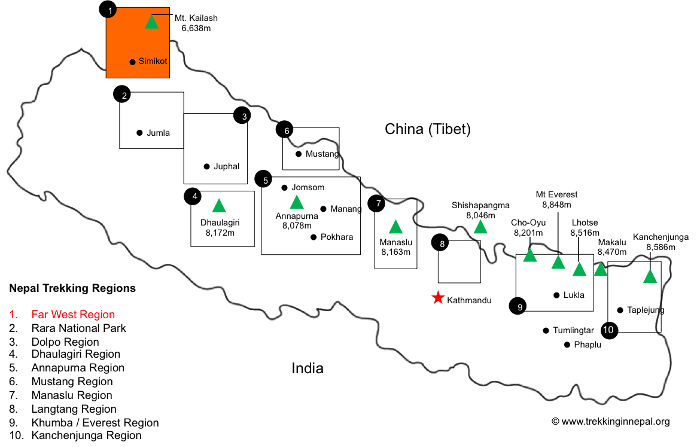
Far West Region
The Far West Region of Nepal is often overlooked due to it’s rather remote geographic location and poor infrastructure. However, this is fast changing due to a large investment and promotion effort that begun in 2008.
The region offers an authentic trekking experience that is hard to match in any of the other regions. Covering just over 25% of the Great Himalayan Range (if you include Rara National Park ), the region is the largest in Nepal.
The region is home to the second largest district in Nepal, Humla, in the North and Darchula, Bajura and Bajhang in the South.
Trekking routes are still undeveloped and rustic in the region, with little in the way of established accommodation and availability of foodstuffs. However, these characteristics give the region a charm and wonder reminiscent of what early 1950s explorers must have experienced when Nepal first opened up to foreigners.
If you are looking to escape the crowds and experience an untouched environment, then the Far West region is for you. The Limi Valley Trek is the most popular in the region. Also see the great Himalayan trail .
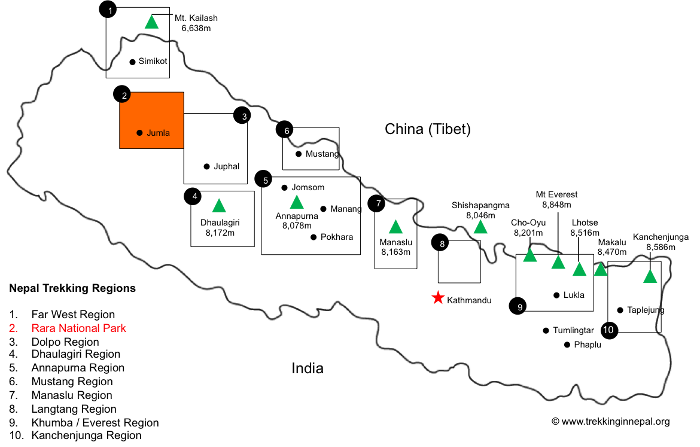
Rara National Park
Established in 1976, Rara National Park is an area of incredible natural beauty. It lies in the North-west of the country in a remote area called Karnali and houses Rara Lake – Nepal’s largest lake.
Like treks in the Far Western Region, there are a number of trek variations, but the most popular is the Rara Lake Trek ; a 10-14 day hike that provides an ‘off-the-beaten’ track experience characterised by pristine natural beauty, snow-capped Himalaya peaks that reflect off the glassy Rara Lake and the best opportunity to view wildlife like musk deer, tahr, Himalayan black bear , leopards, ghoral and, if you are lucky, the red panda.
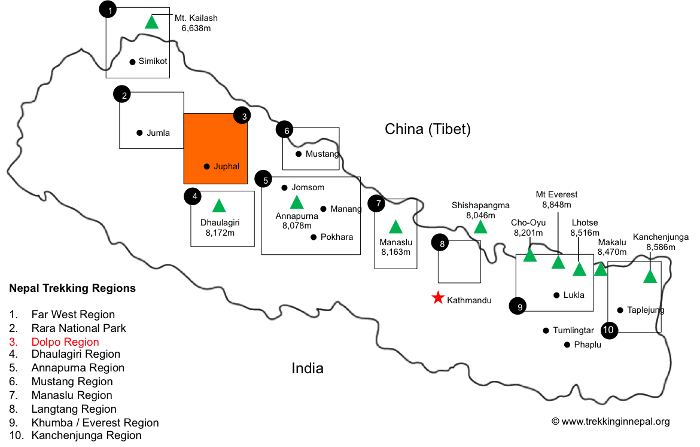
Dolpo Region
The Dolpo Region is another remote and incredibly beautiful part of Nepal. It runs from the border of Tibetan Plateau in the North, often referred to as the Upper Dolpo, to the large east-west valley system that sits in the South, or Lower Dolpo.
To the east are the Khyaklum and Dhaulagiri Himals which create a border with the Mustang and Annapurna region respectively, and give Dolpo a sense of isolation from the rest of Nepal.
Most trekkers enter the Dolpo via Juphal and then follow various routes either in the Lower Dolpo region or further North and West in the Upper Dolpo or Mustang.
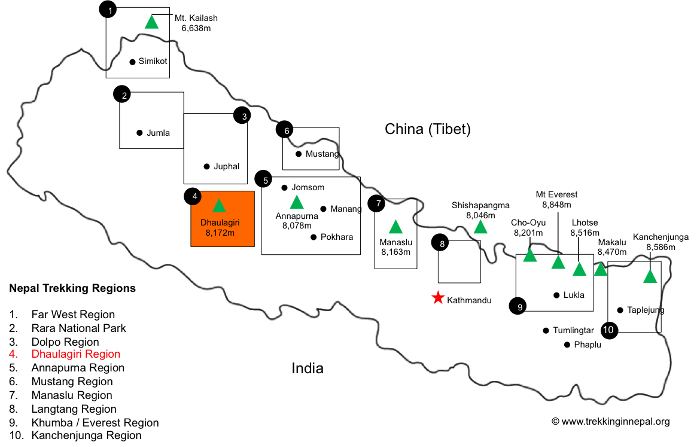
Dhaulagiri Region
The Dhaulagiri Region houses the seventh highest mountain in the world, Mt. Dhaulagiri (8,137 meters), and is one of the more remote areas of Nepal.
The region is ideal for experienced high-altitude trekkers who are looking to avoid the crowds that are common in the Annapurna, Langtang and Khumba regions. Treks in the region are only available in the Autumn months (October through December) as heavy snow and ice conditions in the winter and spring make the region inhospitable.
The most popular hike in the region is the Dhaulagiri Circuit Trek (15-18 days). The trek is not for the faint-hearted. It includes strenuous hiking at high altitude and potential use of ropes on the moraines near Dhaulagiri Base Camp. Traversing the awe-inspiring French and Dhampus passes, the Dhaulagiri Circuit Trek is, in our opinion, one of the finest in Nepal!
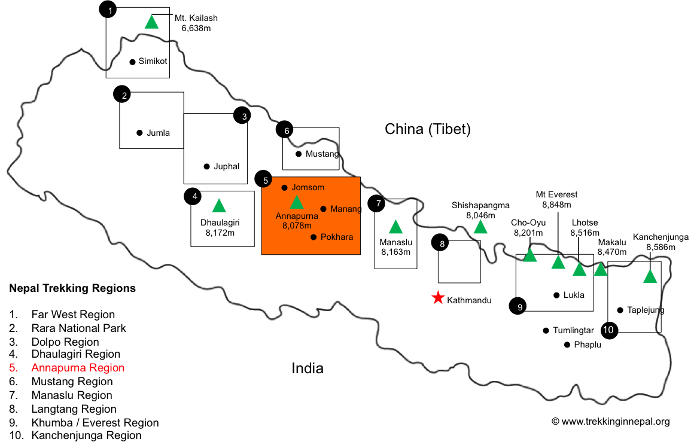
Annapurna Region
The Annapurna region is one of the most popular trekking area in Nepal. It is situated just north of the trekking city of Pokhara and encompasses Annapurna I, the 10th highest mountain in the world at 8,091 meters, as well as 13 mountain peaks over 7,000 meters and 16 more peaks over 6,000 meters.
The area is characterised by alpine meadows, glaciers and moraines.
The main trekking routes in the Annapurna region can be seen below.
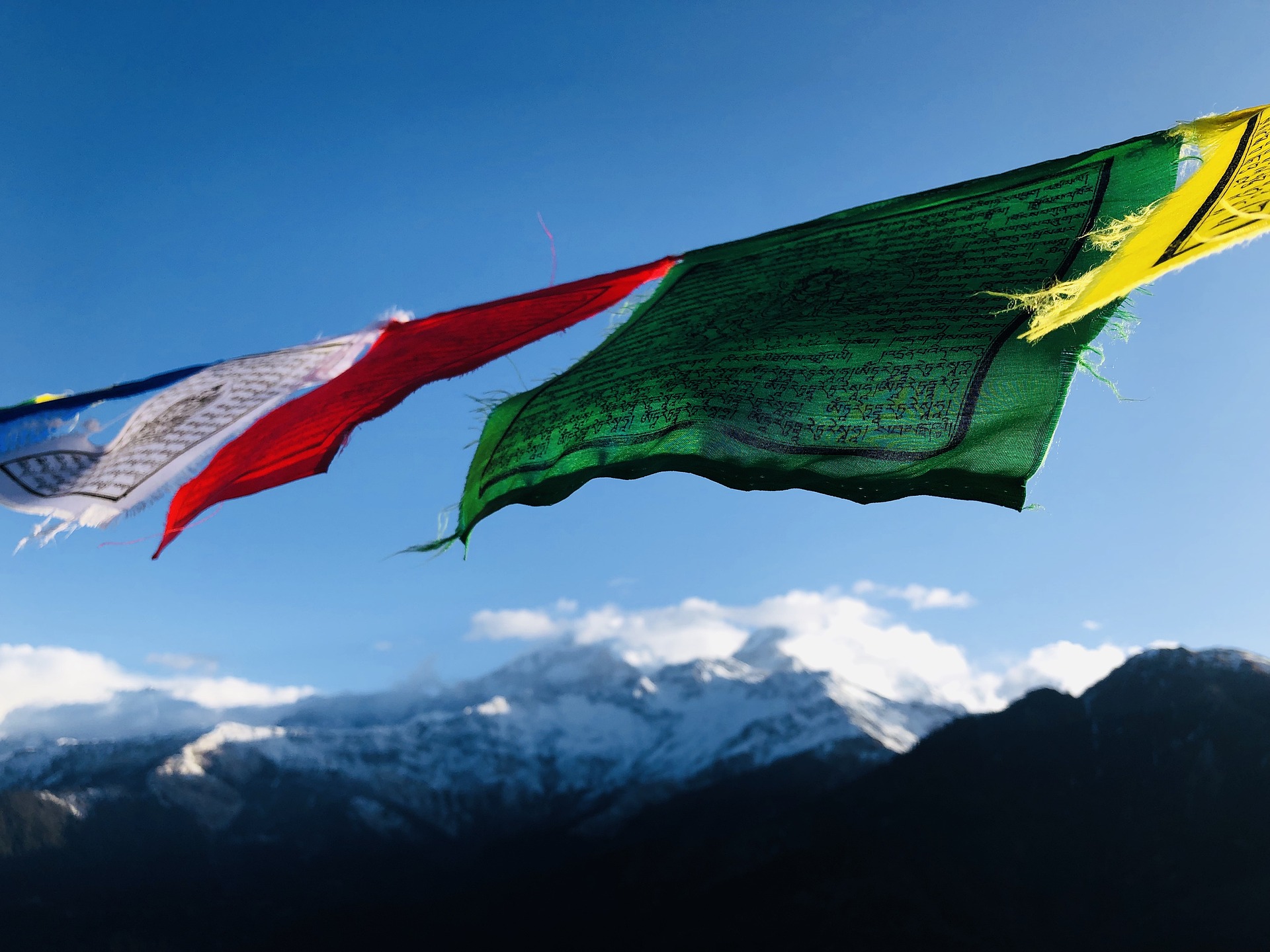
Annapurna Circuit (up to 3 weeks)
The Annapurna circuit is one of the most iconic treks in the world, although road development in recent years has led to lots of negative publicity. The trek follows a counter-clockwise route, passing through the Lamjung, Manang, Mustang and Myagdi regions. Perfect for trekkers with lots of spare time on their hands.
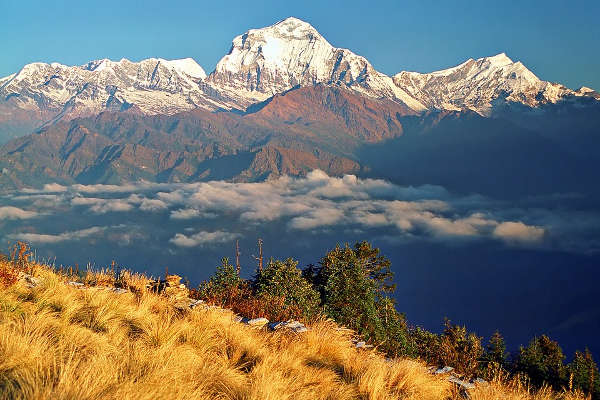
Annapurna Base Camp Trek (7-14 days)
The Annapurna BC hike is a popular trek as it can be reached via various routes including the sanctuary trek above.
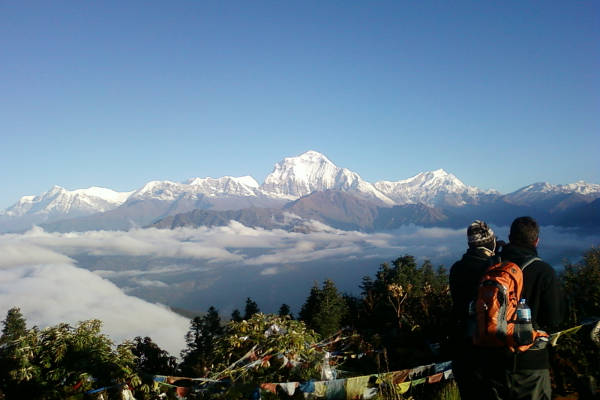
Annapurna Sanctuary Trek (~14 days)
A classic trek that starts either at Phedi or Nayapul, north of Pokhara and traverses the Annapurna Sanctuary via Chomrong to Annapurna Base Camp.

Jomsom Muktinath Trek (5-13 days)
The Jomsom Muktinath hike is a moderate to easy trek in the Mustang region, north of the Annapurna Range. The trek includes awe-inspiring views of Annapurna, traversing the Kali Gandaki River – the world’s deepest gorge.
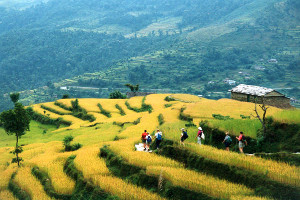
The Royal Trek (3-4 days)
The Royal hike is one of the shortest and easiest treks in Nepal, the Royal trek follows the same path taken by Prince Charles in the 1980s and takes its name from this excursion. Great for trekkers who have limited time and are looking for a light and easy trekking experience.
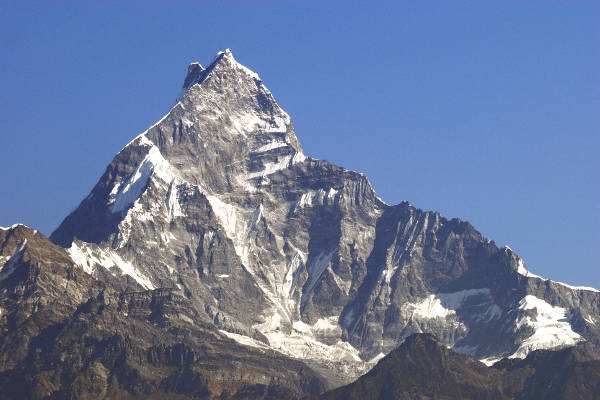
Ghorepani Poon Hill Trek (3-5 days)
The Poon Hill hike is a short, but beautiful trek that typically starts at Nayapul which is one-hour drive from Pokhara. A relatively easy trek, with a maximum elevation of 3,200 meters.
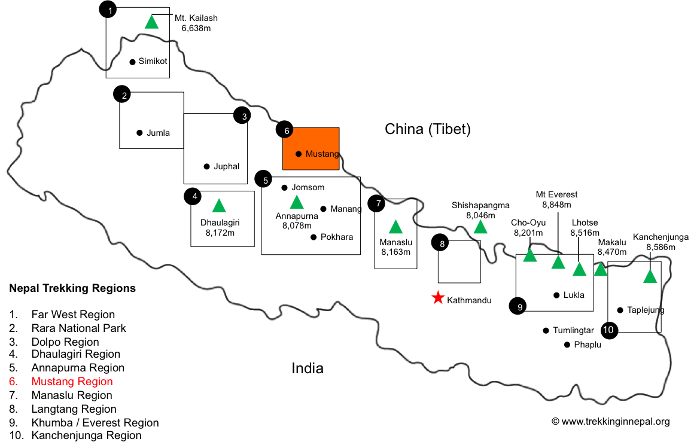
Mustang Region
Mustang lies North-west of Annapurna and extends north onto the Tibetan Plateau. The Upper Mustang region is still home to ancient Mustang-Tibetan communities that sit in stark contrast to the advancing modernisation of Nepal.
The main trail in Mustang runs North-South from Lo Monthang to Jomsom, and all treks require restricted access permits.
Below are the two most popular trekking routes.
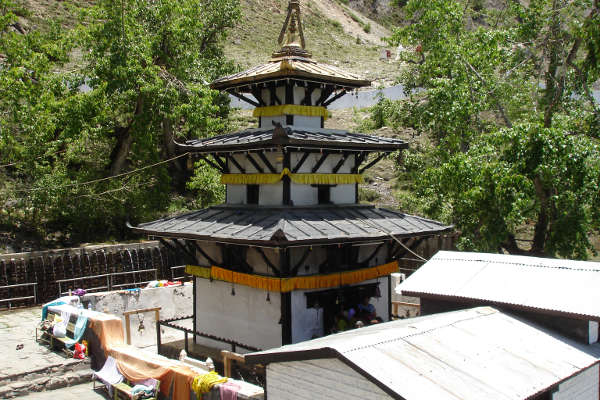
Mustang Circuit (12-14 days)
The Mustang circuit begins in Jomsom and can be combined with various trails to Naar, Damadhar Kund, Saribung and Muktinath. The highest point is Mui La at 4,170 meters and difficulty is easy to moderate.
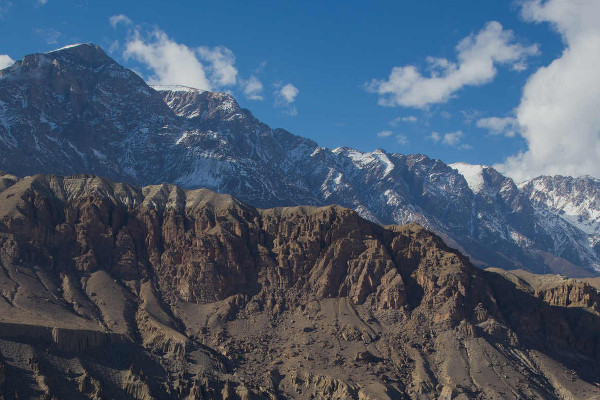
Upper Mustang Trek (18-20 days)
Typically, the Upper Mustang Trek is a continuation of the Mustang Circuit to the Northern communities of the Upper Mustang region. Ideal for those looking to experience the fascinating lives of ancient Mustang communities.
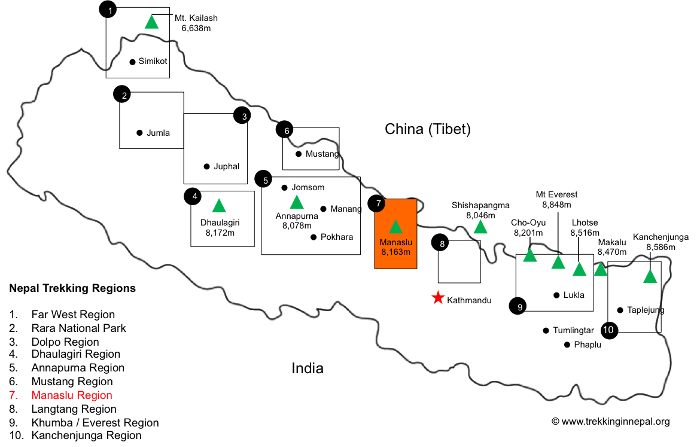
Manaslu Region
Situated in the centre of Nepal, the Manaslu Region encompasses both the Manaslu and Ganesh Himals. The latter consists of seven major peaks which form a natural border with Tibet in the North. Further south-west is the massive summit of Manaslu (8,163 meters), the eighth highest mountain in the world.
Apart from the striking natural beauty of the region, the area is also culturally diverse offering trekkers rich insight into the various groups of Nepalese people that inhabit the regions hills and valleys.
A number of trek variations and trails are available, but the most popular is the Manaslu Circuit Trek , a 12-14 day hike that provides an unbeatable mix of incredible scenery and cultural diversity. Some consider the Manaslu Circuit the finest trek in Nepal. Ideal for the intermediate trekker or anyone with a good degree of fitness.
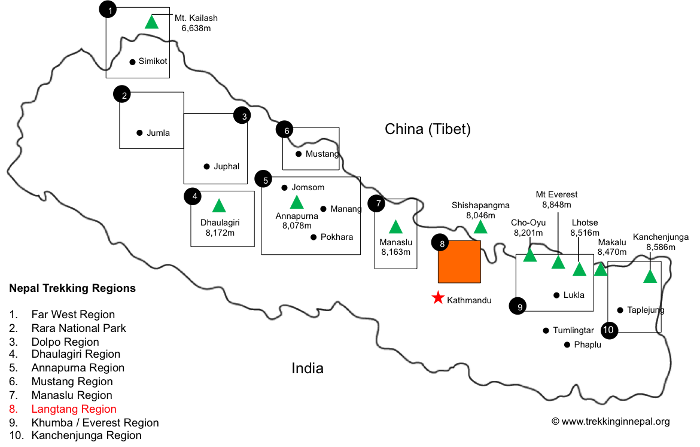
Langtang Region
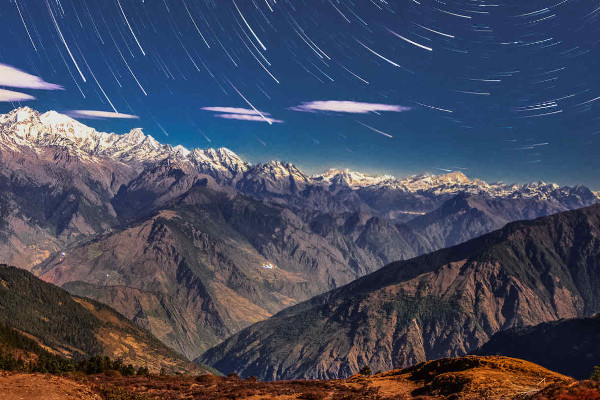
Langtang Valley Trek (7-12 days)
The Langtang hike is a popular trek through the Langtang National Park (second largest national park in Nepal). Treks typically begin in Dunche, the main trading post in the area, and follow the beautiful alpine valley to Kyangjin before circling back. Ideal for novice or intermediate trekkers.
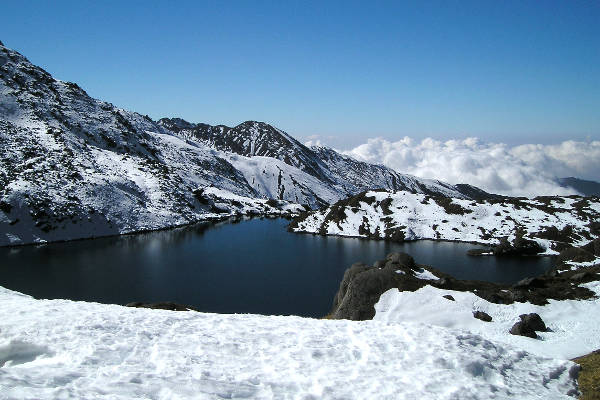
Gosainkunda Trek (10-14 days)
Typically encompasses the Langtang Valley Trek and includes a visit to Gosainkunda Lake, a sacred Hindu lake where pilgrims congregate to wash off their sins. The Gosainkunda hike is a popular trek that is usually approached via Trishuli valley, North-west of Kathmandu.
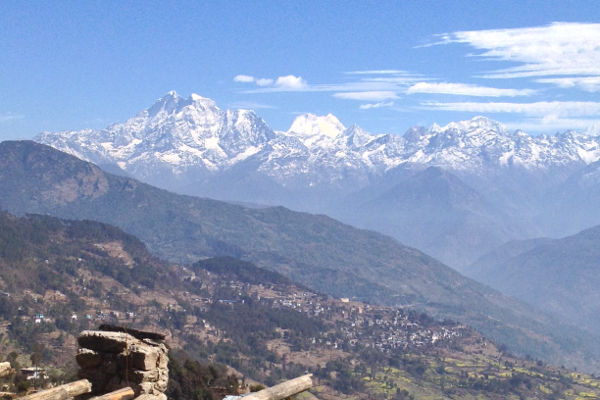
Rolwaling Trek (up to 3 weeks)
Technically situated between the Langtang and Khumba region is the Rolwaling Valley – known as one of the seven hidden valleys in the Himalayas. The area provides a unique quiet spot in a busy region and offers adventurous trekkers and climbers the opportunity to utilise their mountaineering skills as ropes are required!
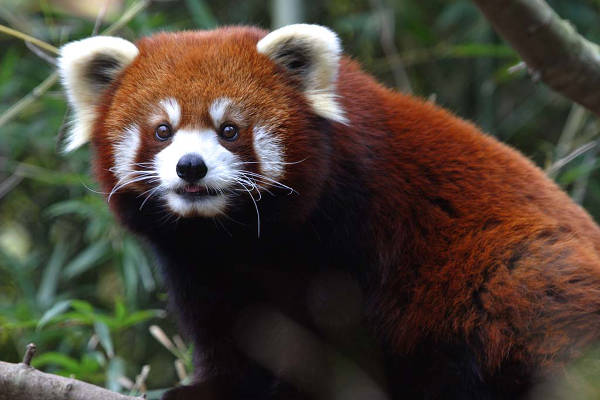
Helambu Trek (7-10 days)
Helambu hike sits just North of Kathmandu and the area is inhabited by Sherpas and Tamang people. Ideal for trekkers who do not want to venture too far from Kathmandu.
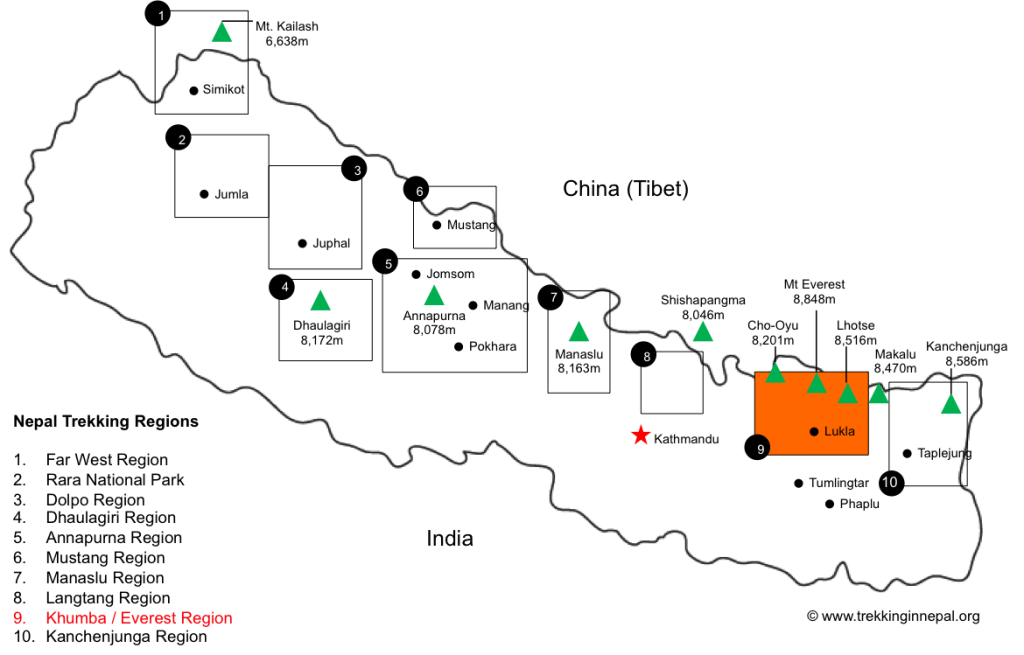
Khumbu / Everest Region
The Everest region, or Khumbu, is based in the Northeast of Nepal and is designated a World Heritage Site. Most of the region is based above 3,000 meters.
The region is grand on all scales. Home to four of the six highest mountains in the world – Mount Everest, Mount Lhotse, Mount Makalu, and Cho Oyu – the region is quite simply one of hyperbole.
See below for Everest Region trekking options.
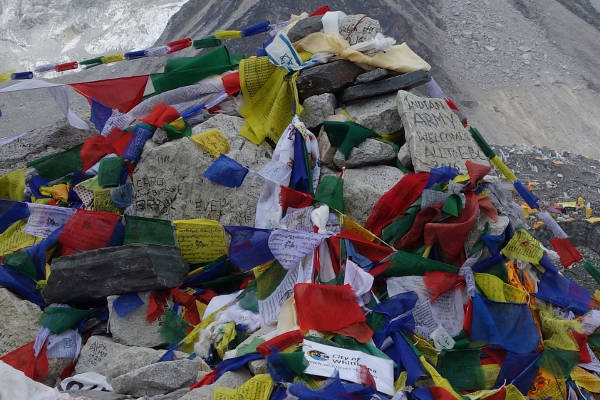
Everest Base Camp Trek (12-14 days)
An extremely popular trek for obvious reasons, the Everest Base Camp hike provide a moderate to easy trek via the legendary Sherpa village of Namche Bazaar and Tengboche Monastery, the highest Buddhist center in Khumbu. Variations on the EBC Trek include the Gokyo Lakes hike or further ‘climbing’ expedition up Island Peak, are also popular.
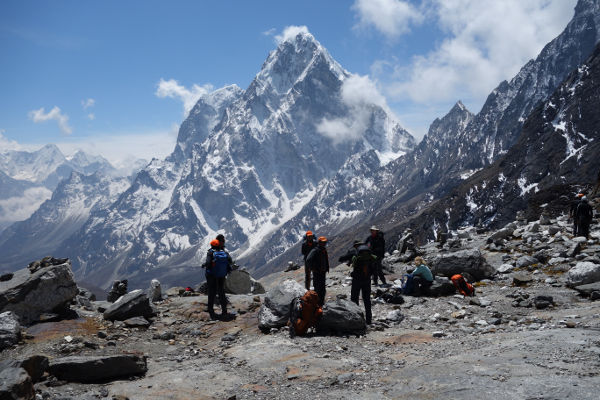
Khumbu Valley Trek (12-16 days)
A classic trek due to its location in the shadow of Sagarmatha (Mt. Everest) in the Sagarmatha National Park. A moderate-to-strenuous trek due to its isolated location, the Khumbu valley hike gives a full trekking in Nepal experience.
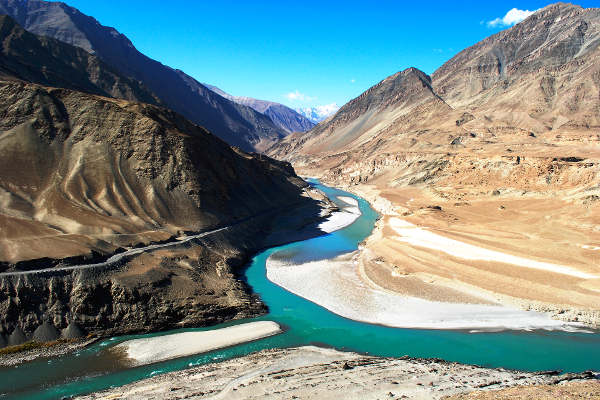
Makalu Base Camp Trek (18-22 days)
A long and strenuous hike (especially the second half) takes trekkers through the Makalu-Barun National Park in the North-east of the Khumbu region, which houses the fifth highest mountain in the world – Makalu (8,470 meters). Not for the faint-hearted, but a great trek that is surprisingly quiet due to its remote location in the region and lack of tea houses. See the Makalu BC hike .
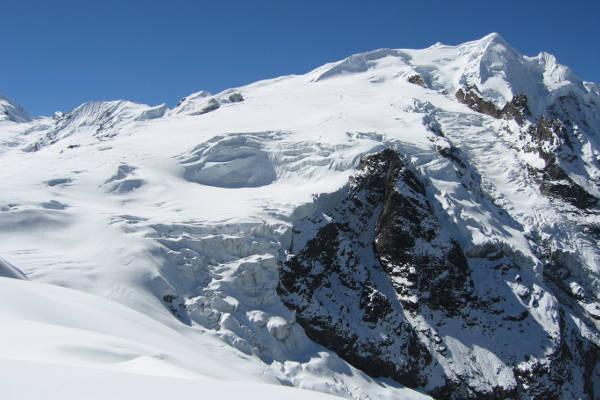
Mera Peak (Nepal trekking peak)
At 6,746 meters, Mera Peak is classified as a Nepal trekking peak . This is to say that it requires some mountaineering experience with ropes used on the final section to the summit. Only recommended for the adventurous soul who has some previous high-altitude trekking and basic mountaineering skills.
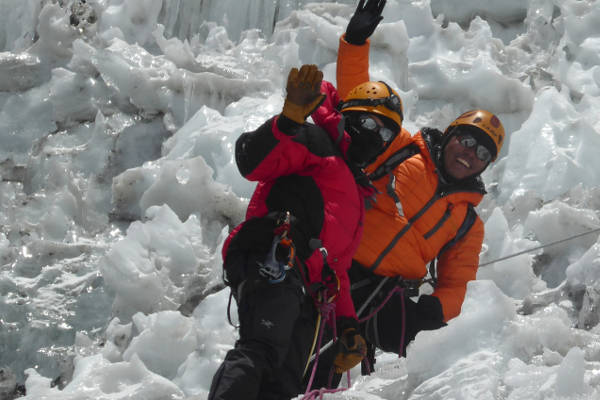
Island Peak (Nepal trekking peak)
A challenging trekking peak in Nepal, Island Peak is usually combined with an Everest Base Camp trek to give one time to acclimatise and prepare for the strenuous ascent of the 6,176-meter summit. Again, this ‘trek’ is only recommended for those with high altitude trekking experience and basic mountaineering skills.
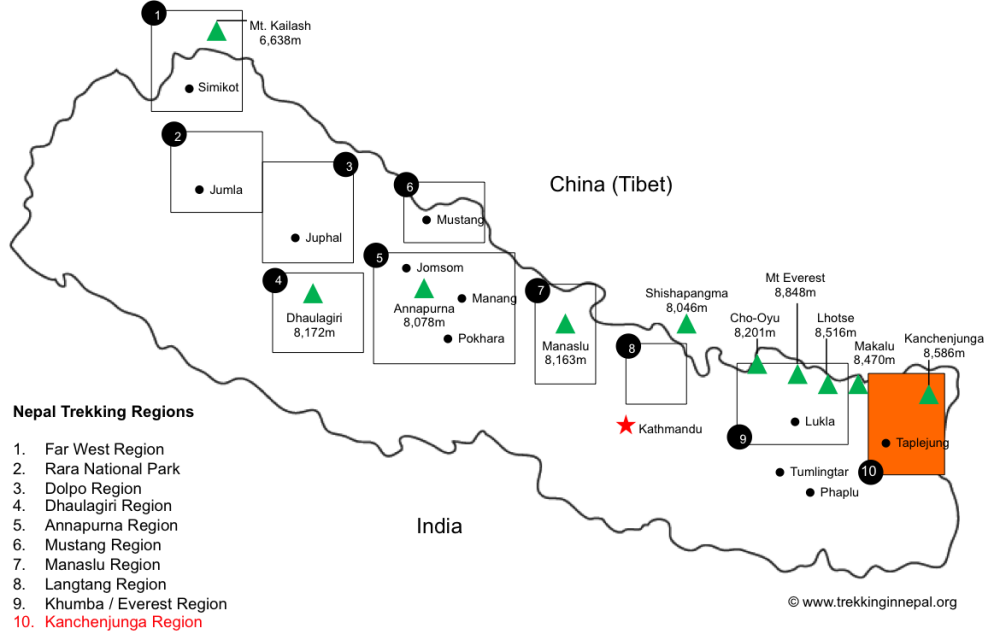
Kachenjunga Region
Home to vast rhododendron forests and the third highest mountain in the world, Mt. Kachenjunga (8,586 meters), this far eastern region of Nepal is remote, rugged and beautiful.
Kanchenjunga massif is characterized by loads of peaks and valleys but can be seen to split into two sections. The southwest face and ridges, around Yalung, and the north face where the Kachenjunga Base Camp is situated.
Treks vary in the region, but most trekkers enter via Taplejung. The most popular trek in the region is the Kachenjunga Base Camp Trek .
Continue browsing...
See more information on Nepal . Or check out these other Nepal hiking articles:
- Short Nepal Trekking Tours
- Easy Nepal Hikes
- Travel insurance for trekking in Nepal
- Best time to hike in Nepal
- Nepal trekking companies recommendations
- Best Things to See in Nepal
- Himalaya Passes
- Climb Mount Everest
- Mount Everest Fun Facts
- Nepal Teahouses - what are they like?
About the author
Mark Whitman
Mark has trekked extensively in Asia, Europe, South America and Africa. He founded Mountain IQ in 2014 with the sole aim to be the best online information portal to some of the most popular mountain destinations around the world. When not writing for Mountain IQ, Mark is out exploring the outdoors with his wife!
Leave a Reply
Your email address will not be published. Required fields are marked
We work with local guides to offer great value adventures at unbeatable prices

- Parikrama Treks Teams and Guide
- Company Registration Legal Documents
- Everest Region
- Annapurna Base Camp Trek
- Annapurna Circuit Trek
- Annapurna Mardi Himal Base Camp Trek
- Restriced Area
- Mera Peak Climbing Expedition
- Adventure Riding Upper Mustang
- Adventure Riding Lower Mustang
- 9 Days Motorbike Riding Adventure in Muktinath
- Epic Kathmandu Lhasa EBC Himalayan Motorbike Adventure
- Himalayan Motorbike Tour to Everest
- Mount Kailash Motorbike Journey
- Nepal and Tibet Motorcycle Tour of Kailash
- Manasarovar Dawa Festival Tour with Kailash Yatra
- Adventure Riding in Bhutan
Restricted Area Trekking
Restricted area trekking: a guided trek to nomadic tribe of unique himalayas.
Going Lodge and Camping trekking in Nepal the Himalayas? Restricted area trek takes you to some of the less-visited trekking Areas of Nepal. In that area, there is a limitation to the number of trekkers able to visit within a year. You will also need to get a special permit for trekking in this region. In Nepal, there are more than 10 areas where you cannot travel without a guide and permit.
Restricted area trekking offers views of magnificent Himalayas. Most of these trails have rough trekking trails and people following Tibetan culture. You will also see old monasteries and shrines.
Restricted area trek offers some of the best tours in a lifetime. These areas are remote and special care even from trekking agencies. Most of the places have fewer tea houses for accommodation. So it is best suited for camping treks. Manaslu Tsum Valley Trek, Upper Mustang Trek, Dolpo Trek are some of the popular treks.
Parikrama Treks is a certified travel agent who can take you on this restricted are trek. We also have some of the special group joining departure dates in a restricted area. Be sure to check out our dates and contact us if it interests you. We will get all the arrangements ready for your trekking in Nepal Restricted area.
Popular Restricted area trekking in Nepal
Upper mustang lodge trek, upper dolpo camping trek, manaslu tsum valley lodge, camping treks, damodar kund trek, nar phu valley trek, kanchanjunga lodge, camping trek, makalu base camp trek, milke danda trek, limi valley camping trek, lumba sumba trekking camping trek.
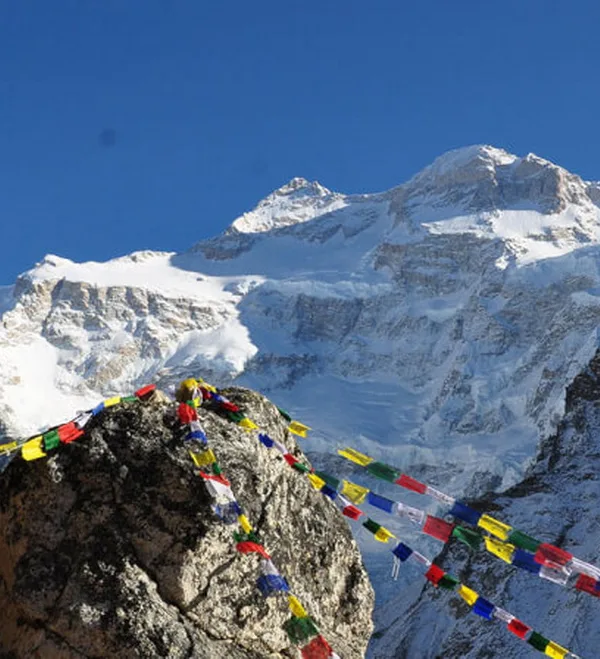
Kanchenjunga Teahouse trek with visit of North and South Base Camp
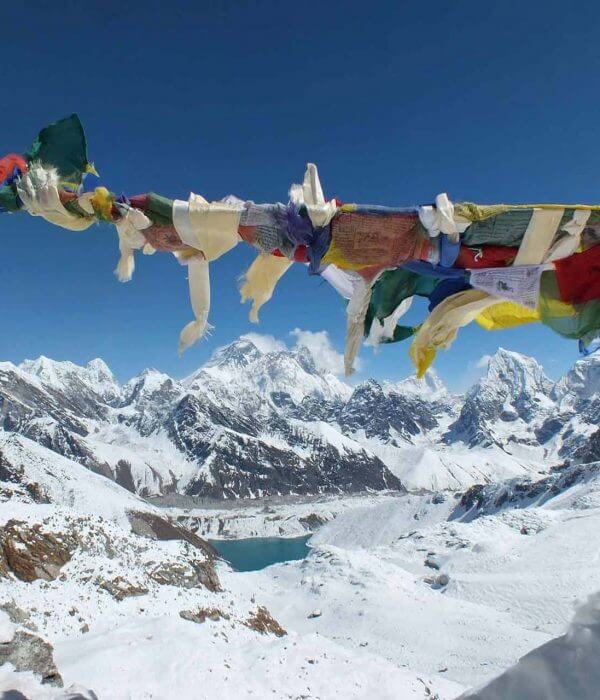
Experience Lumba Sumba wild camping trek during your visit in Eastern Nepal
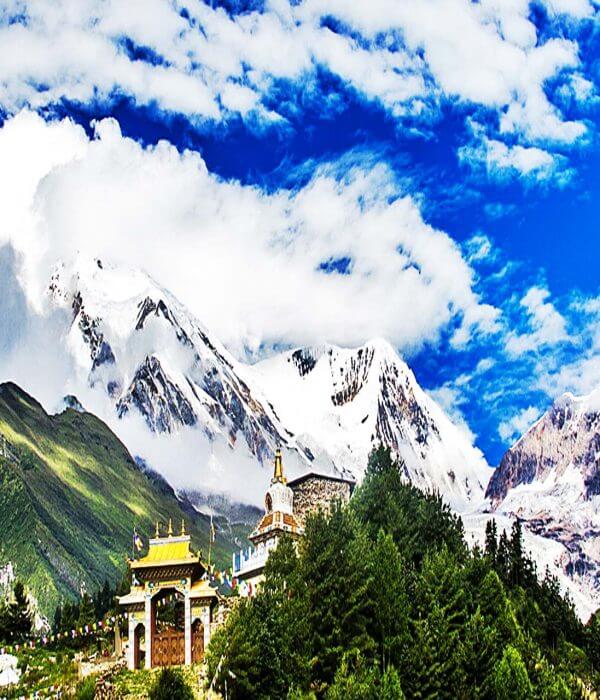
Manaslu Tsum Valley Trek For Best Inner Nepal Himalaya Trekking Experience
Attractions
- UNESCO World Heritage Sites
- Protected Areas
- Eight Thousanders
- Pilgrimage Sites
- Bungee Jumping
- Motor Biking
- Rafting & Kayaking
- Mountain Biking
- Paragliding
- Cave Exploration
- Bird Watching
- Mountain Viewing
- Jungle Discovery
- Butterfly Watching
- Nagarkot Sunrise and Sunset
- Traditional Crafts
- Meet the People
- Village Tours
- Food & Culinary
- Cultural Tours
- Heritage Walk
- Museum Tours
- Faith Healing
- Panchakarma Treatment
- Sound Meditation
- Natural Hot Water Springs in Nepal
- Pilgrimage Tours
- Destination Wedding
- Indra Jatra
- Chhat Parva
- Event Calendar
- Festival Highlights
- Travel with children
- Ganesh Himal Trek
- Chandragiri - Chitlang - Kulekhani
- Pilgrimage to Doleshwar mahadev Temple
About Nepal
Travel details.
- Tourist Visa
- Local Transportation
Trekking Permit
- Park Entry Fees
- Heritage Site Entry Fees
- Tourist Police
- Safety in the Mountains
Book Your Trip
- Book Experience
- Travel Updates
To visit Restricted Areas in Nepal. a Trekking Permit must be obtained from the Department of Immigration, Kalikasthan, Kathmandu.
Special trekking permit must be acquired from the Department of Immigration, Kalikasthan, Kathmandu, for trekking to areas that fall under the Restricted Zone. For more information please log on to http://www.nepalimmigration.gov.np/post/notice-regarding-visa-fee-updates
- Trekking in any area or along any route except the specified area of route shall be deemed to be violation of law.
- The Trekking permit should be kept along with the trekker while trekking.
- The Trekking permit has to be shown to immigration employees or police on request.
Trekking Permit Fee Details

Nepal Tourism Board is a national tourism organization of Nepal established in 1998 by an Act of Parliament in the form of partnership between the Government of Nepal and private sector tourism industry to develop and market Nepal as an attractive tourist destination. The Board provides platform for vision-drawn leadership for Nepal’s tourism sector by integrating Government commitment with the dynamism of private sector.
Nepal Tourism Board
Other sites.
- Tenders & Trade
- Photo Nepal
Feedback Form
National Geographic content straight to your inbox—sign up for our popular newsletters here
You can still climb Mount Everest. Here’s how to do it responsibly.
New rules are changing the Everest Base Camp hiking experience, aiming to protect the Himalayas’ Sherpa communities and help trekkers make a more positive impact.

Rising to 29,032ft on the border between Nepal and Tibet, Mount Everest — known as Sagarmatha by the Sherpa people of Nepal — has held an almost mystical allure for climbers and hikers since it was first summitted by New Zealand’s Edmund Hillary and Sherpa mountaineer Tenzing Norgay in 1953.
But 2024 marks a significant moment in the story of the world’s tallest mountain. As mountaineers gather in Nepal for the start of the spring climbing season, they face a raft of new rules and restrictions.
Introduced by the regional government, the new Base Camp Management Procedure is intended to improve safety, support local communities and shrink the mounds of rubbish building up on Everest. From wearing mandatory GPS trackers to carrying their faeces down the mountain, climbers have more to consider than ever before.
However, only a tiny fraction of travellers to Everest actually visit the summit. Most trekkers set their sights on surrounding Sagarmatha National Park, the Everest viewpoint at Kala Patthar and Everest Base Camp — the tent village used by mountaineering expeditions, perched at 17,598ft beside the Khumbu Glacier.
Offering a fascinating insight into the world of high-altitude climbing, Base Camp is the only place where hikers will be affected by the new rules for mountaineers. Here’s what you need to know to visit Everest responsibly.
What’s changed at Everest Base Camp?
Trekkers can still end the two-week Everest trek with a day trip from Gorak Shep to the mountaineers’ tent village at Everest Base Camp, but those who wish to stay overnight may find it harder to arrange. The new rules ban commercial enterprises at Base Camp, including the bakeries and massage tents that used to cater to day-trippers; you may still be able to get a cup of tea and a bite to eat, but don’t expect luxuries.
Can I get to the summit?
Climbing Everest is a more serious undertaking than trekking to Base Camp. Around 600 people complete the perilous ascent every year, but it requires months of preparation, support from a mountaineering agency and fees of over £80,000. If you join an expedition, the team will guide you through the new climbing rules, including where to get hold of the faeces bag provided by the Sagarmatha Pollution Control Committee.

How do I support local people?
Many of the new rules for mountaineers are designed to benefit Sherpa guides and porters, and trekkers can play their part on the hike to Everest Base Camp, too. Since April 2023, it’s been a legal requirement for trekkers in Sagarmatha National Park to hire a licensed Nepali guide through a trekking agency, which provides much-needed employment for Himalayan communities (the Trekking Agencies’ Association of Nepal has a list of registered agencies). Hiring local porters and staying and eating in village teahouses, rather than camping, will also provide work for Sherpa people.
Question prospective trekking agencies to make sure guides and porters are being fairly paid (at least $21 (£17) per day for guides and $18 (£14) per day for porters) and protected by insurance to support their families in case of accidents. Poverty is a big issue in the mountains and some porters still tackle the trails in flip-flops due to the unaffordability of hiking gear; make sure your hired team have appropriate clothing and footwear.
Another option is to travel with a responsible international operator. Intrepid and Exodus are two major travel companies that use local guides and porters and have established programmes to train the next generation of mountain workers in Nepal.
Before you trek, visit the Kathmandu Environmental Education Project (KEEP) in the capital’s traveller hub neighbourhood of Thamel to learn more about responsible trekking. Visit again at the end of your trek to donate any unwanted gear; it will go to porters who need it.
How do I protect the environment?
Climate change is causing glacial melting and flooding across the Himalayas. If you want to reduce your carbon footprint, take a bus and hike to the trailhead at Lukla, rather than flying from Kathmandu. It adds six days to the two-week Everest Base Camp trek, but will bring income to villages off the main trail.
Regardless of which route you’re trekking, try to stay in lodges that heat water and generate electricity using solar power or water-powered generators. If travelling independently, look out for this equipment as you enter villages. If joining an organised trek, mention to the agency that lodges that have taken sustainability measures are your preferred accommodation.

What can I do to help reduce overtourism?
In 2023, nearly 60,000 people visited the spectacular sweep of mountains, glaciers, Buddhist monasteries and Sherpa villages covered by Sagarmatha National Park. Although the park covers 443sq miles, most trekkers follow a well-established trail to Base Camp, via Namche Bazar, Tengboche, Periche or Pangboche and Gorak Shep. You can spread the economic benefits of tourism by breaking your trek at smaller villages and guesthouses, rather than the busy main overnight stops.
Also investigate quieter trekking routes. There are many rewarding alternatives or add-ons to the Everest Base Camp trek inside Sagarmatha National Park, including the dramatic hike to the jewel-like Gokyo Lakes and the challenging Three Passes Trek, linking three breathlessly high, prayer-flag-strewn mountain passes rising to 18,160ft at Kongma La.
Is there specific mountain etiquette?
Most Sherpas are Buddhist, so treat prayer flags and other religious objects with respect. Ask before you take photos of people, remove your shoes before entering homes or monasteries, walk clockwise around stupas and avoid pointing your feet towards people or images of Buddha. Locals dress modestly, so trekkers should do the same — shorts and T-shirts are fine for walking but avoid revealing outfits. Public displays of affection can also cause embarrassment.
Begging is common on the trails. If you want to help, donate to a local charity or approach schools or community centres rather than handing out gifts that won’t make a lasting difference. Books, stationery, toothpaste, toothbrushes and unwanted trekking gear are useful items to donate.
What can I do to protect the trails?
Stick to them. It’s important that trekkers always follow established paths rather than hiking through undergrowth, and avoid shortcuts between switchbacks, as these can increase erosion, destabilising the slopes. Also be careful to respect nature while out in the wilderness. Don’t pick flowers, crush plants or feed wild animals that you see on the trails. It’s best to stay a fair distance away from the local wildlife, as animals can carry diseases and feeding them might make them ill or change their natural behaviour.

How can I clean up Everest?
Avoid bringing single-use plastic packaging and plastic bags onto the trails. Don’t drop litter while hiking; consider bringing an empty canvas bag so you can gather up any rubbish you find on the trails and transport it back to Lukla, which has a government-backed rubbish-removal service. Carry toxic spent batteries from equipment such as torches or GPS devices back to Kathmandu.
Throw-away plastic water bottles are the bane of the Himalayas; it’s far better for the environment to carry a reusable bottle and purify your own water with a filter pump or chemical purification tablets. Use proper toilet facilities wherever possible; if you have to go while out on the trail, dig a hole well away from water sources and fill it in when you’re done.
Related Topics
- ADVENTURE TRAVEL
You May Also Like

Whale watching is booming. Here’s how to do it responsibly.

How to plan the ultimate adventure in the Himalayas, from beginners' hikes to Everest base camp
For hungry minds.

It’s summer in Antarctica. Here’s how to explore responsibly.

Hiking around Engelberg, Switzerland's 'valley of cable-cars'

10 whimsical ways to experience Scotland

The essential guide to visiting Scotland

What it's like to hike to the end of the world in Chile's Tierra del Fuego
- Paid Content
- Environment
- Perpetual Planet
History & Culture
- History & Culture
- History Magazine
- Mind, Body, Wonder
- Terms of Use
- Privacy Policy
- Your US State Privacy Rights
- Children's Online Privacy Policy
- Interest-Based Ads
- About Nielsen Measurement
- Do Not Sell or Share My Personal Information
- Nat Geo Home
- Attend a Live Event
- Book a Trip
- Inspire Your Kids
- Shop Nat Geo
- Visit the D.C. Museum
- Learn About Our Impact
- Support Our Mission
- Advertise With Us
- Customer Service
- Renew Subscription
- Manage Your Subscription
- Work at Nat Geo
- Sign Up for Our Newsletters
- Contribute to Protect the Planet
Copyright © 1996-2015 National Geographic Society Copyright © 2015-2024 National Geographic Partners, LLC. All rights reserved

Passing Thru Travel
The 10 Best Treks in Nepal’s Majestic Mountains 2024
Posted: February 21, 2024 | Last updated: February 21, 2024
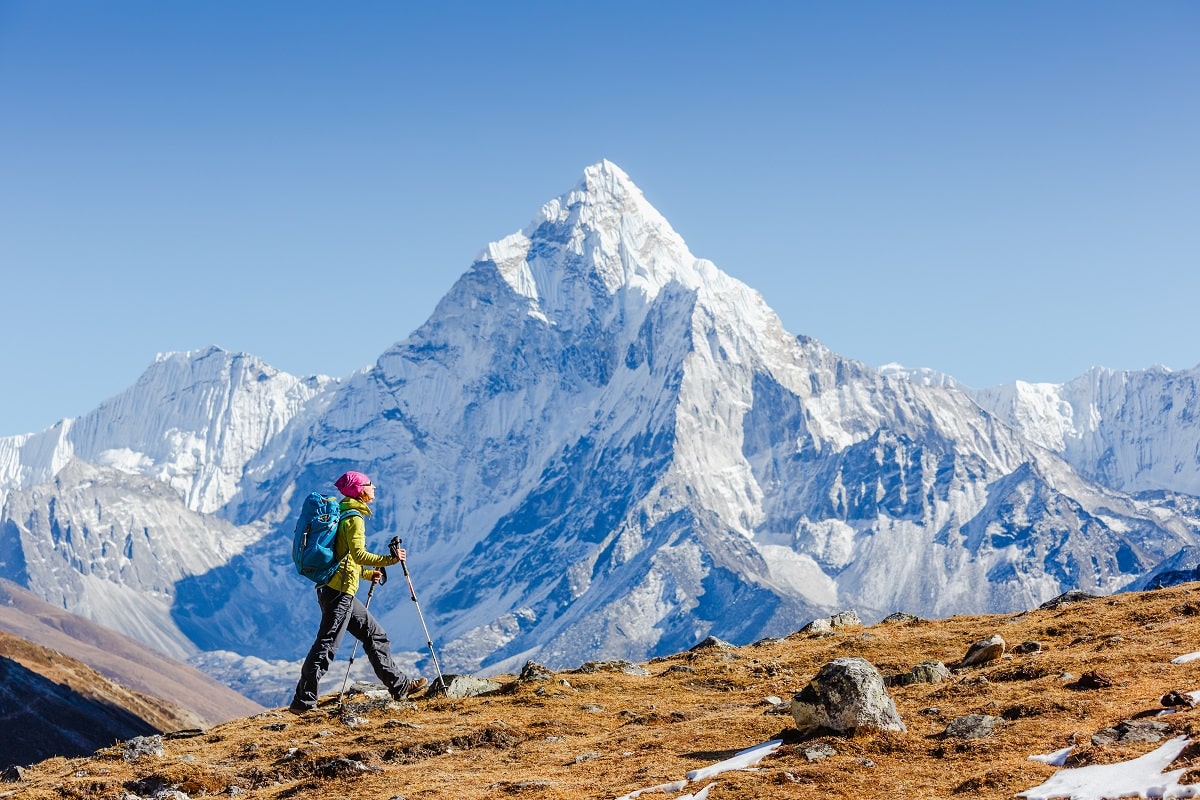
Nestled between the towering peaks of the Himalayas, Nepal is a land of unparalleled natural beauty and a haven for trekkers. From the iconic Everest Base Camp to the serene trails of the Annapurna region, Nepal’s mountains offer a diverse array of trekking experiences, each more awe-inspiring than the last. This guide will take you through 10 of Nepal’s most majestic mountain destinations, providing insights and practical advice for your trekking adventure.
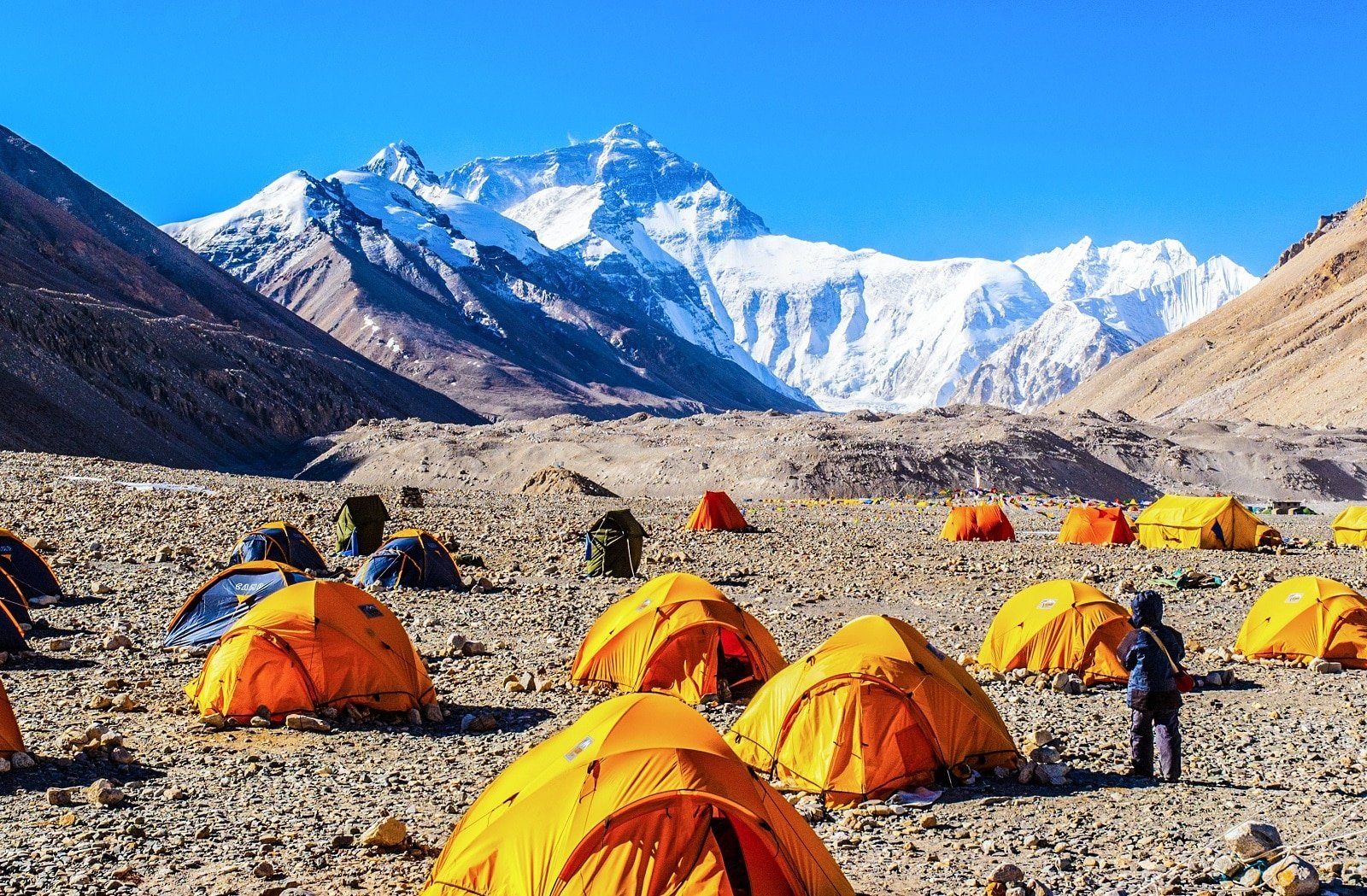
1. Everest Base Camp
Embarking on the Everest Base Camp trek, you’ll journey through the heart of the Himalayas, where the world’s highest peaks, including Everest, Lhotse, and Nuptse, tower above. Starting with a thrilling flight to Lukla, the trek takes you through traditional Sherpa villages, Buddhist monasteries, and along the Dudh Kosi River. The route is challenging yet rewarding, with acclimatization days in Namche Bazaar and Dingboche. The final ascent to Base Camp offers a stunning view of the Khumbu Icefall, making all the effort worthwhile.
Insider’s Tip: Acclimatize properly to avoid altitude sickness.
When To Travel: Pre-monsoon (March to May) or post-monsoon (September to November).
How To Get There: Fly to Lukla from Kathmandu and start your trek from there.
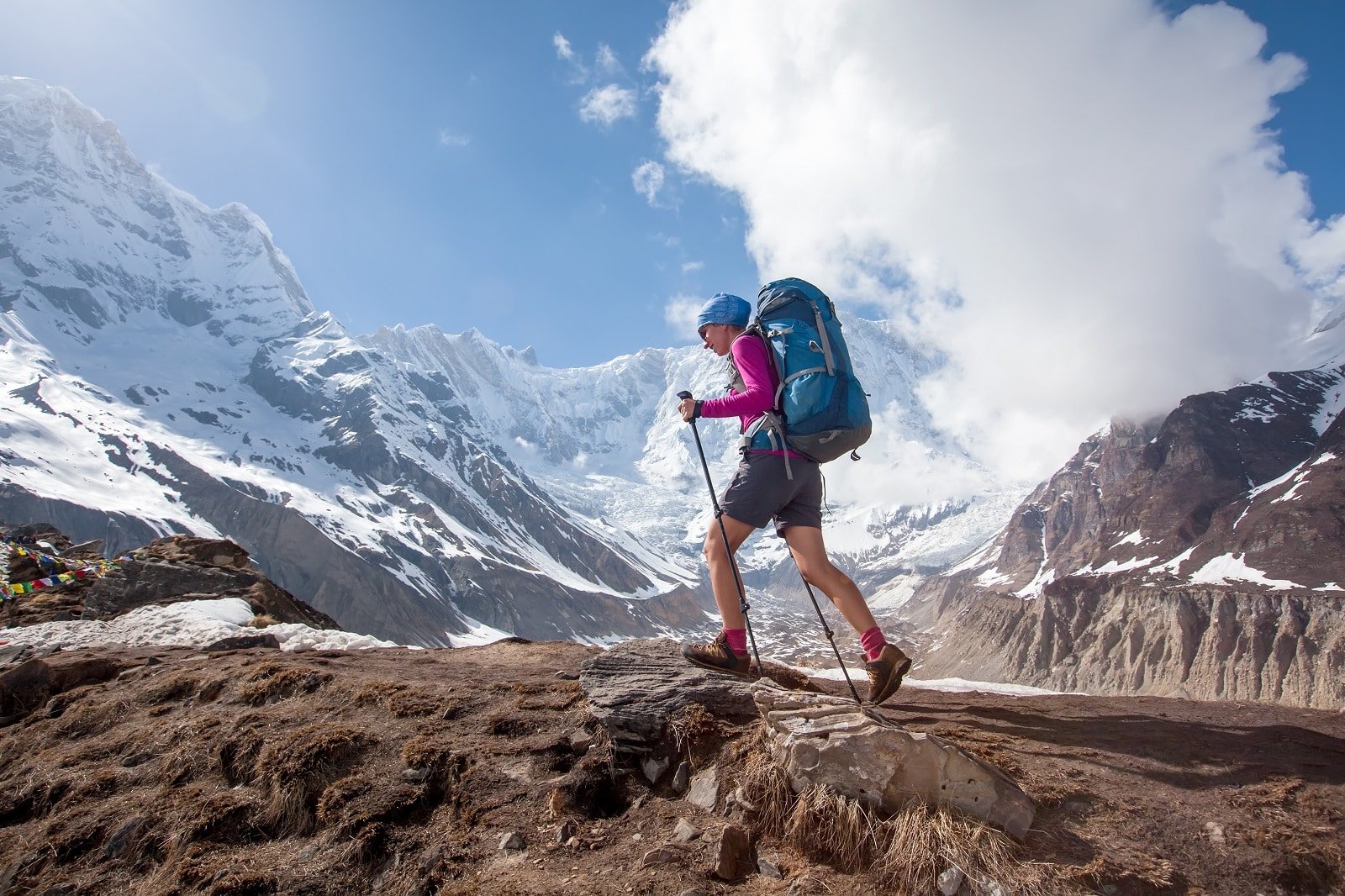
2. Annapurna Circuit
The Annapurna Circuit is a classic trek that takes you around the majestic Annapurna massif. This journey offers a remarkable diversity of landscapes, from the subtropical jungle of the Marshyangdi Valley to the arid, Tibetan-like terrain of the Upper Mustang. Crossing the Thorong La Pass, the trek’s highest point, is a challenging but exhilarating experience. The trek also allows for cultural immersion in the mountain communities of the Gurung and Manangi people.
Insider’s Tip: Take side trips to the ice lakes or Tilicho Lake for additional stunning views.
When To Travel: March to May and October to November for the best weather conditions.
How To Get There: The trek typically starts in Besisahar or Bhulbhule, accessible by road from Kathmandu or Pokhara.
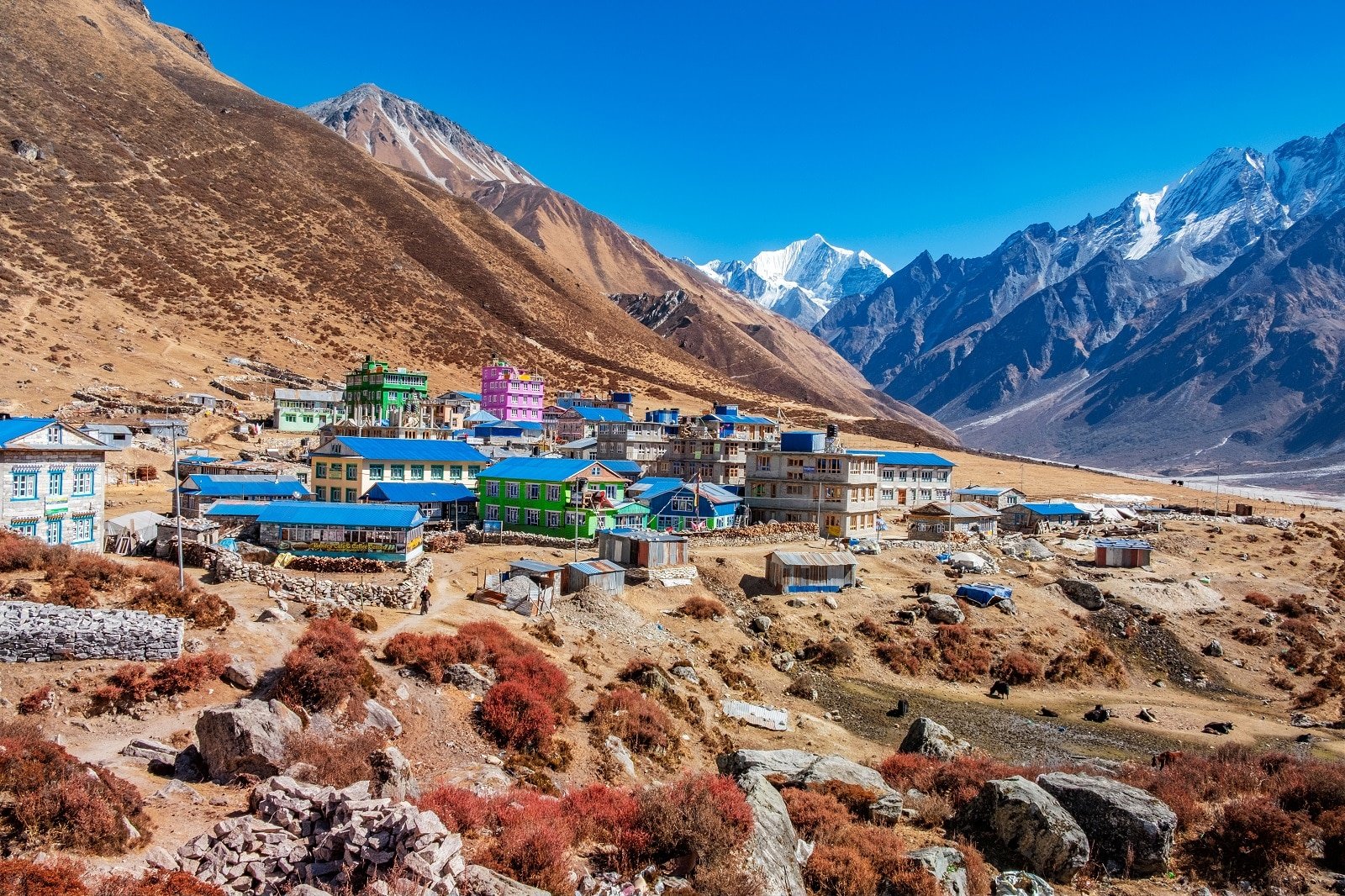
3. Langtang Valley
The Langtang Valley trek offers a quieter, more intimate Himalayan experience. It begins with a drive to Syabrubesi and a trek through forests, pastures, and traditional villages. The valley provides close-up views of Langtang Ri and Langtang Lirung. The trek also includes a visit to Kyanjin Gompa, a significant Buddhist monastery, and an optional climb to Tserko Ri for panoramic mountain vistas. This region was heavily affected by the 2015 earthquake, and trekking here supports local recovery efforts.
Insider’s Tip: Extend your trek to Gosaikunda Lake for a spiritual experience.
When To Travel: March to May and September to November for clear skies and pleasant temperatures.
How To Get There: Drive to Syabrubesi from Kathmandu, the starting point of the trek.
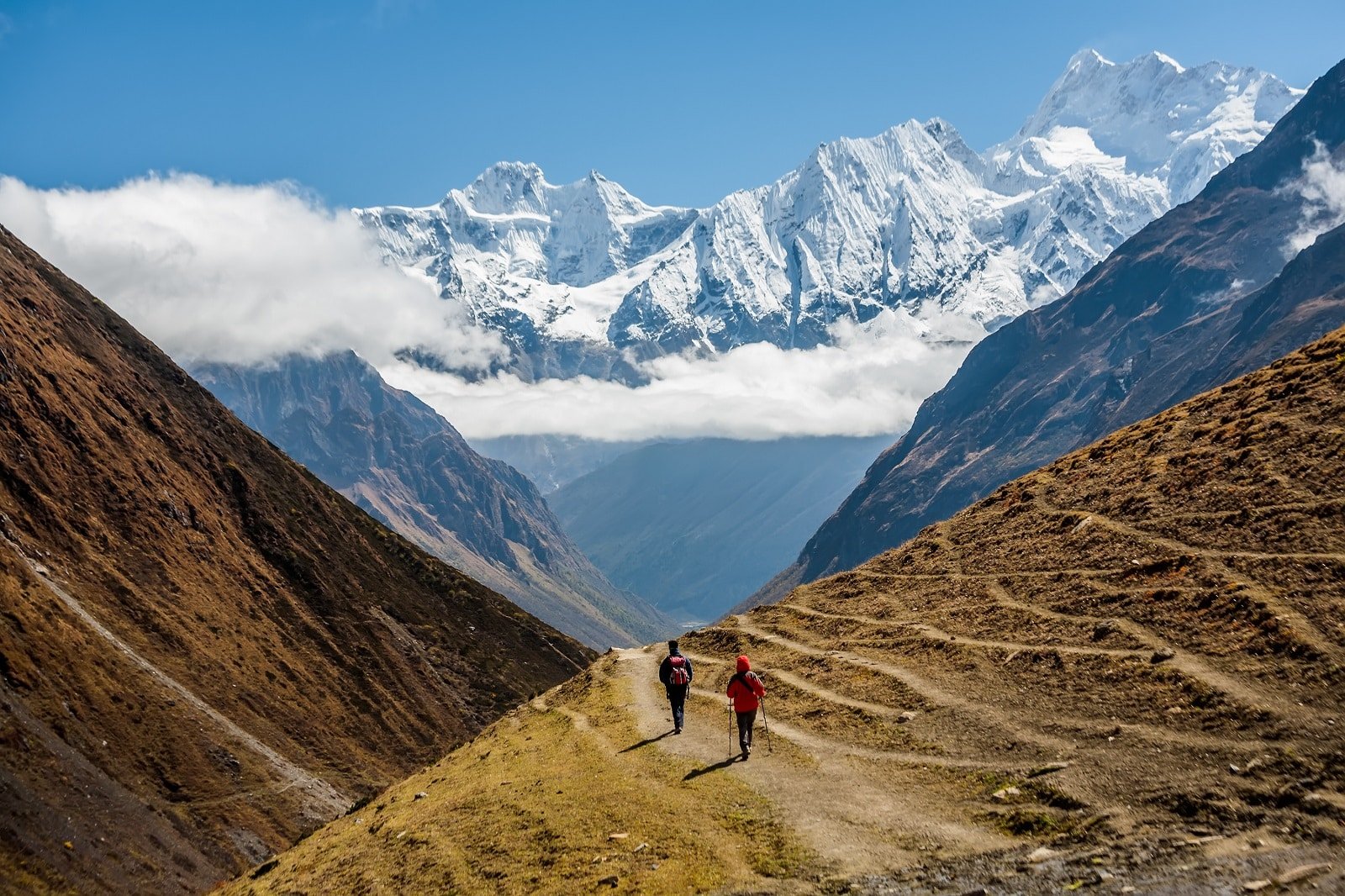
4. Manaslu Circuit
The Manaslu Circuit trek circles the majestic Manaslu, the world’s eighth-highest peak. This trek is less crowded than its more famous counterparts. It offers a look into the untouched natural beauty and culture of the Nepali Himalayas. The trek involves crossing the Larkya La Pass and traverses through Budhi Gandaki Valley, known for its mix of Hindu and Tibetan Buddhist villages. The circuit is a challenging trek, blending cultural richness and scenic splendor.
Insider’s Tip: Ensure you have a guide, as the Manaslu trek requires special permits.
When To Travel: March to May and September to November are ideal.
How To Get There: The trek starts at Arughat or Soti Khola, which can be reached by bus or jeep from Kathmandu.
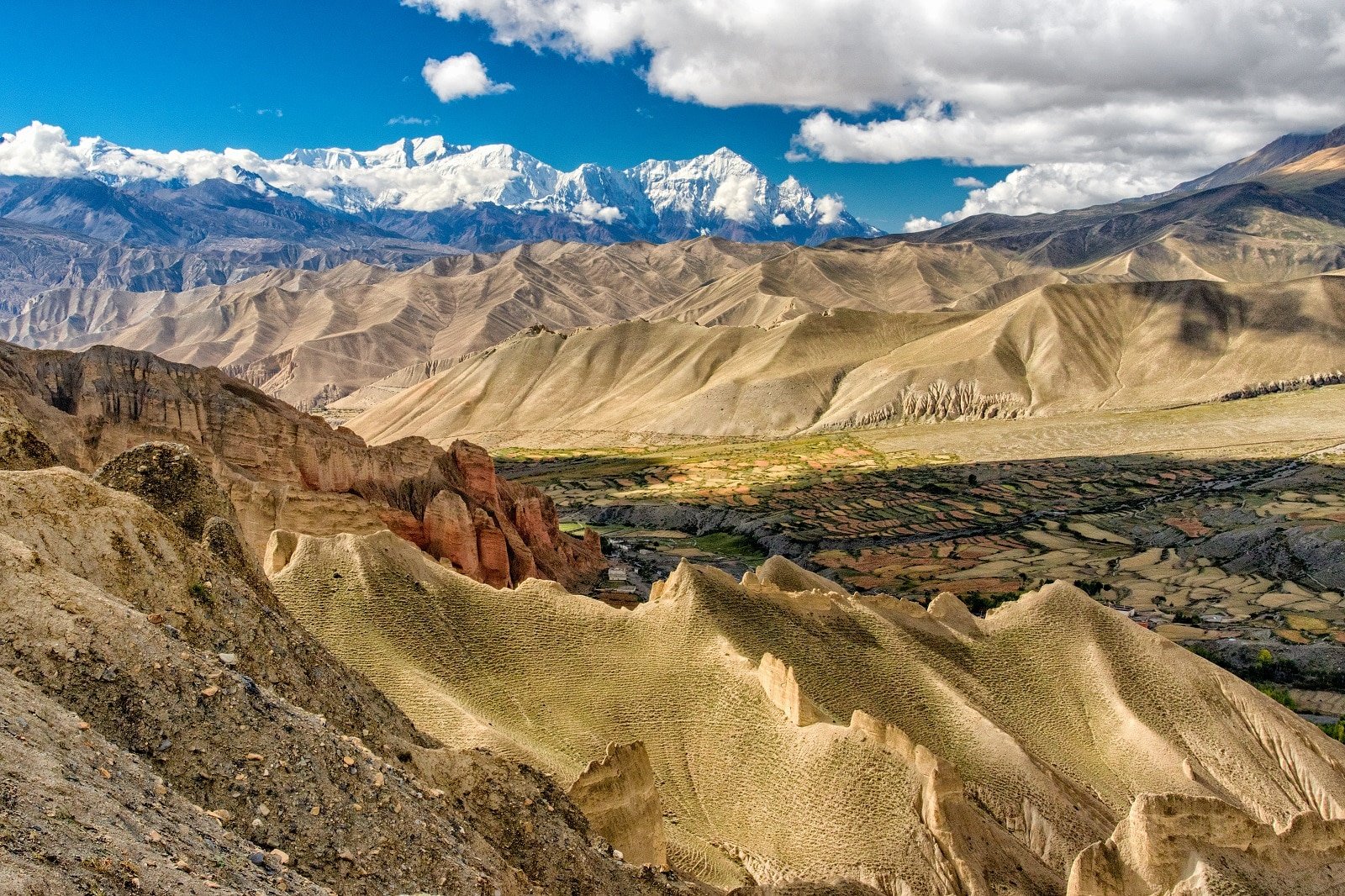
5. Upper Mustang
Trekking in Upper Mustang takes you to a region that was once an independent kingdom. The landscape here is more desert-like, characterized by eroded canyons and colorful stratified rock formations. Lo Manthang, the walled capital, is a highlight, with its monasteries and royal palace. This area is culturally and geographically more akin to Tibet, offering a unique trekking experience distinct from the rest of Nepal.
Insider’s Tip: Visit the ancient monasteries and the royal palace in Lo Manthang. Stay at the beautiful Shinta Mani Mustang.
When To Travel: May to October, as the region lies in the rain shadow area.
How To Get There: Fly or drive to Jomsom, then trek or drive to Lo Manthang.
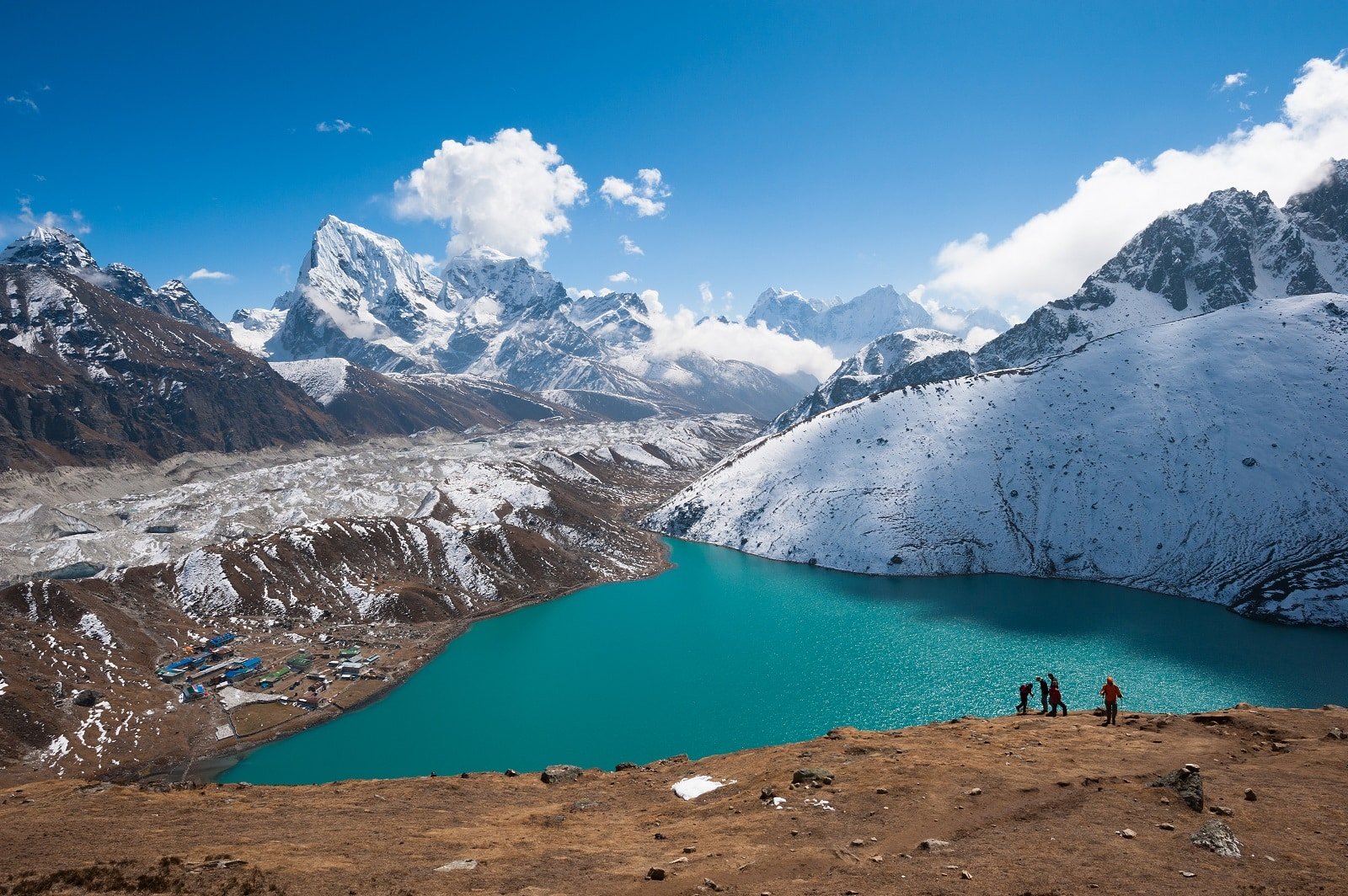
6. Gokyo Lakes
The Gokyo Lakes trek is a fantastic alternative to the Everest Base Camp trek, taking you to a series of stunning high-altitude lakes in the Gokyo Valley. The trek is less crowded and provides spectacular views of Everest and surrounding mountains. Climbing Gokyo Ri offers one of the best viewpoints in the Everest region. The trek passes through Sherpa villages, offering insight into the local culture.
Insider’s Tip: Trek during the full moon for spectacular night views of the mountains.
When To Travel: March to May and September to November for the best weather.
How To Get There: Similar to Everest Base Camp, fly to Lukla and follow a different trail.

7. Poon Hill
The Poon Hill trek is ideal for those looking for a shorter hike in the Annapurna region. It’s known for offering some of the most spectacular mountain views, especially at sunrise from Poon Hill itself. The trek passes through rhododendron forests and Gurung villages, giving you a chance to experience the culture of the central Himalayan region. The trek starts and ends in Nayapul, a short drive from Pokhara.
Insider’s Tip: Carry enough cash, as there are no ATMs on this route.
When To Travel: October to November and March to April for clear skies and good weather.
How To Get There: The trek starts from Nayapul, which is a short drive from Pokhara.
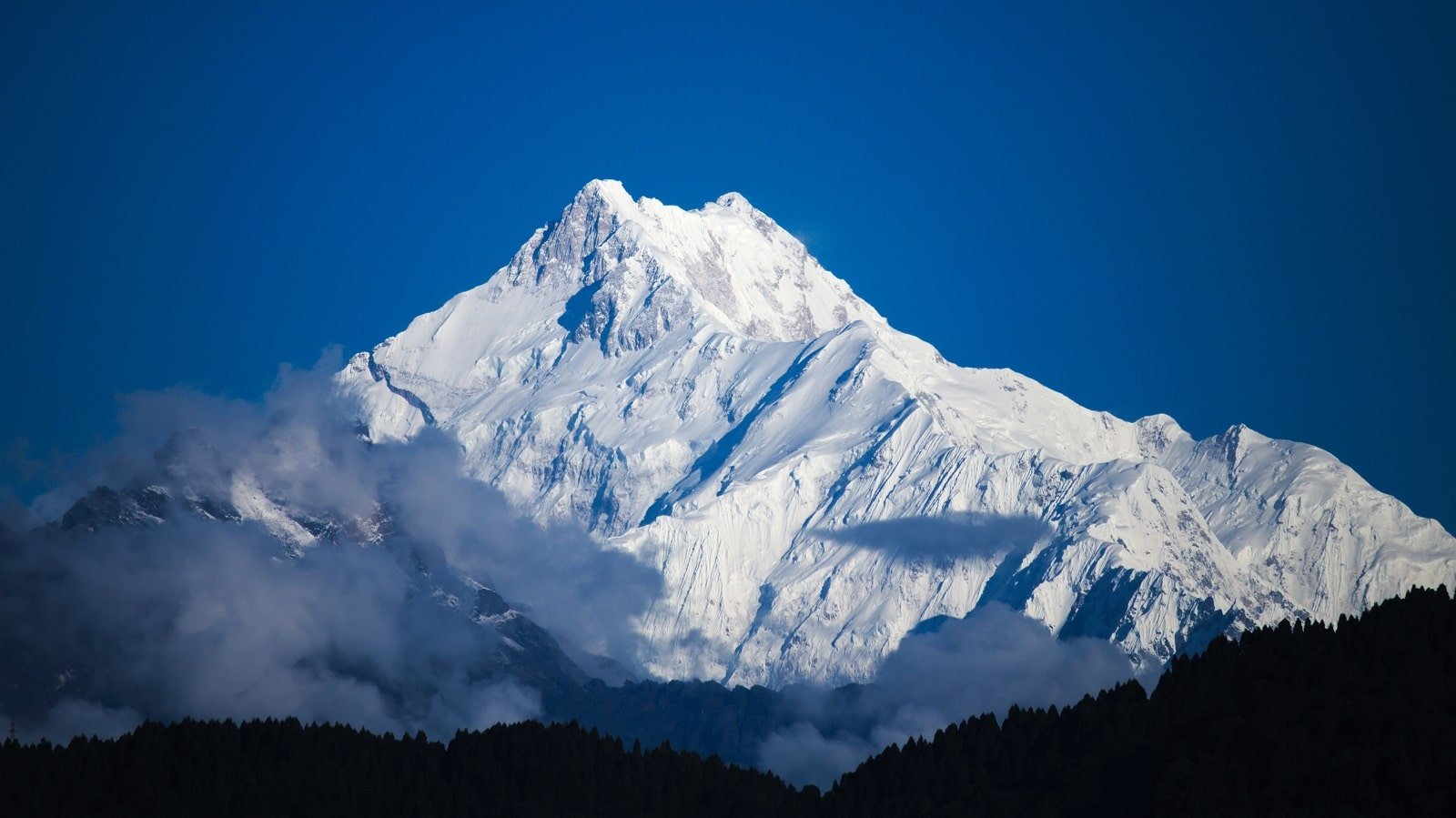
8. Kanchenjunga Base Camp
The Kanchenjunga Base Camp trek is a challenging and adventurous journey to the base of the world’s third-highest mountain. This remote trek offers stunning views of Kanchenjunga and a chance to experience pristine wilderness. The trek passes through diverse ecosystems, traditional villages, and high alpine terrain. It’s a trek for those seeking solitude and unspoiled nature.
Insider’s Tip: Be prepared for basic accommodations and facilities, as this is a less developed trekking route.
When To Travel: March to May and September to November for stable weather.
How To Get There: Fly or drive to Bhadrapur, then drive to Taplejung, the starting point of the trek.
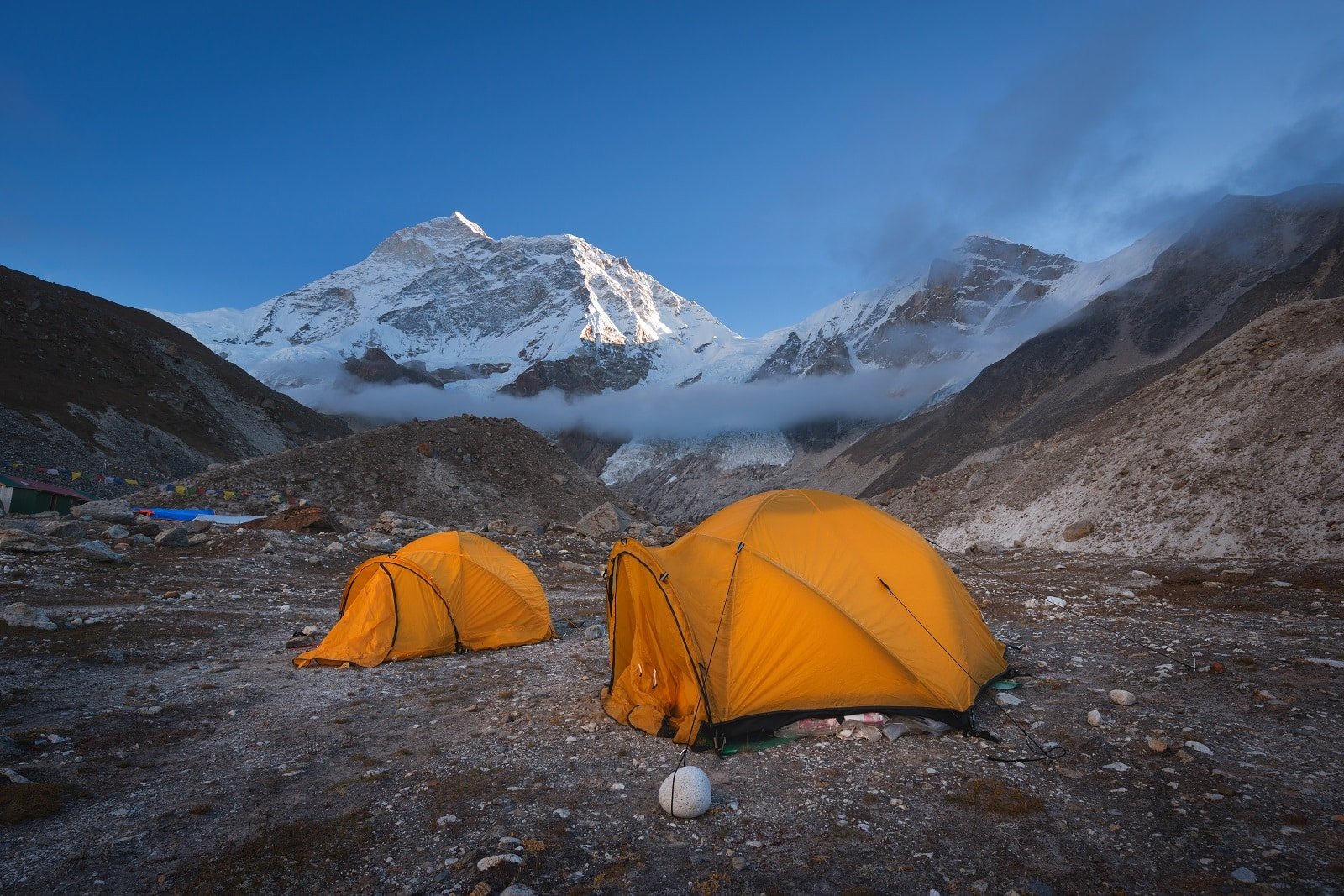
9. Makalu Base Camp
The Makalu Base Camp trek is a challenging journey to the base of Mount Makalu, the world’s fifth-highest mountain. This trek takes you through some of Nepal’s most remote and wild areas, offering stunning views of the eastern Himalayas. The Makalu Barun National Park, through which the trek passes, is a biodiversity hotspot with a rich variety of flora and fauna.
Insider’s Tip: Be physically and mentally prepared for a challenging trek with basic facilities.
When To Trave: Pre-monsoon and post-monsoon periods for the best conditions.
How To Get There: Fly to Tumlingtar from Kathmandu, then drive to Num, the starting point of the trek.
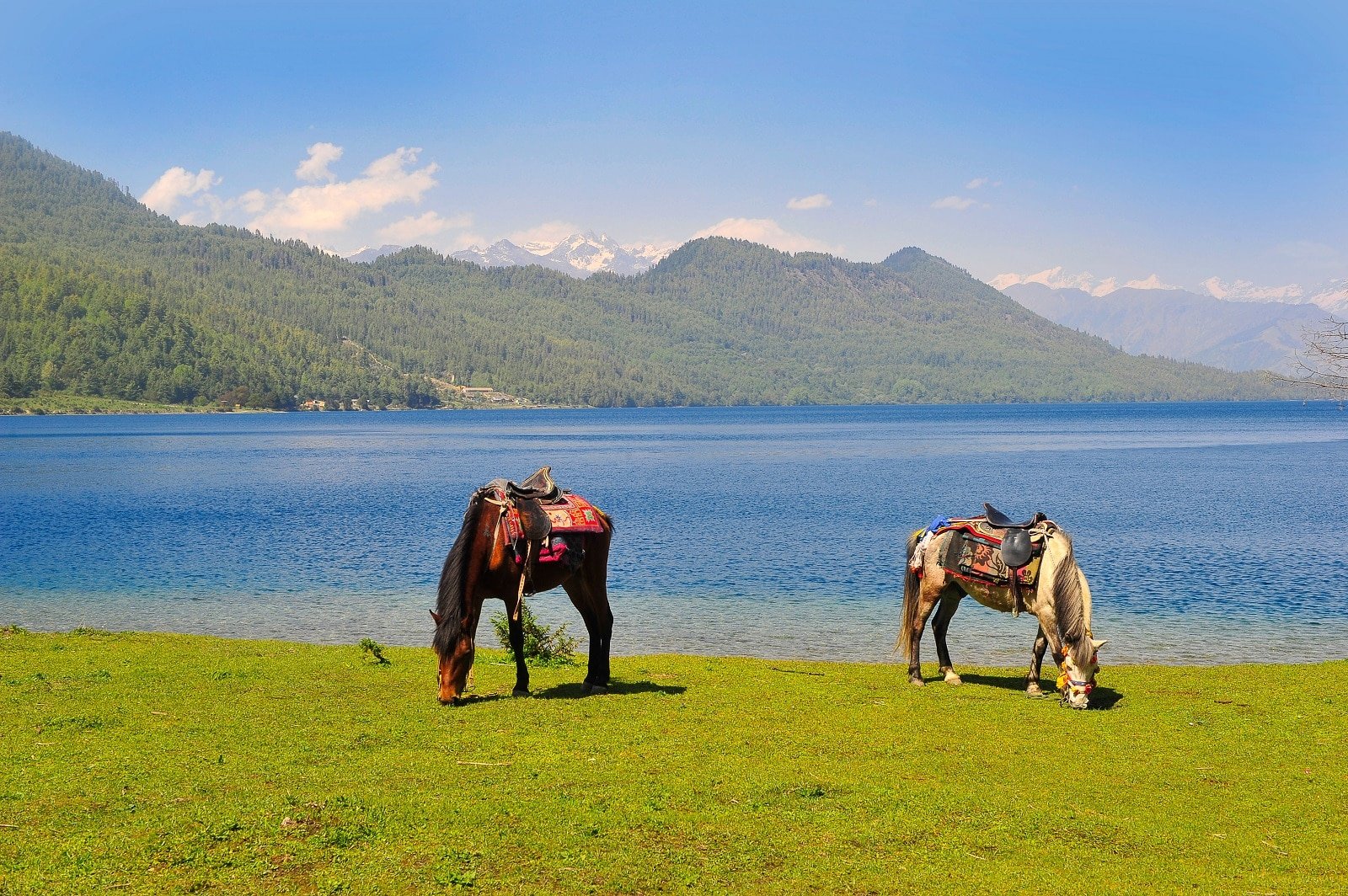
10. Rara Lake
Trekking to Rara Lake offers a serene experience away from the more popular trekking routes. Rara, the largest lake in Nepal, is known for its clear blue waters and scenic beauty. The trek to the lake is an adventure in itself, passing through remote Jumla and Mugu districts. The area around the lake, Rara National Park, is home to a variety of wildlife and offers tranquility unmatched in other parts of Nepal.
Insider’s Tip: Visit the nearby Rara National Park for a chance to see unique wildlife.
When To Travel: September to October and April to May for the best trekking conditions.
How To Get There: Fly to Nepalgunj from Kathmandu, then to Jumla, from where the trek to Rara Lake starts.
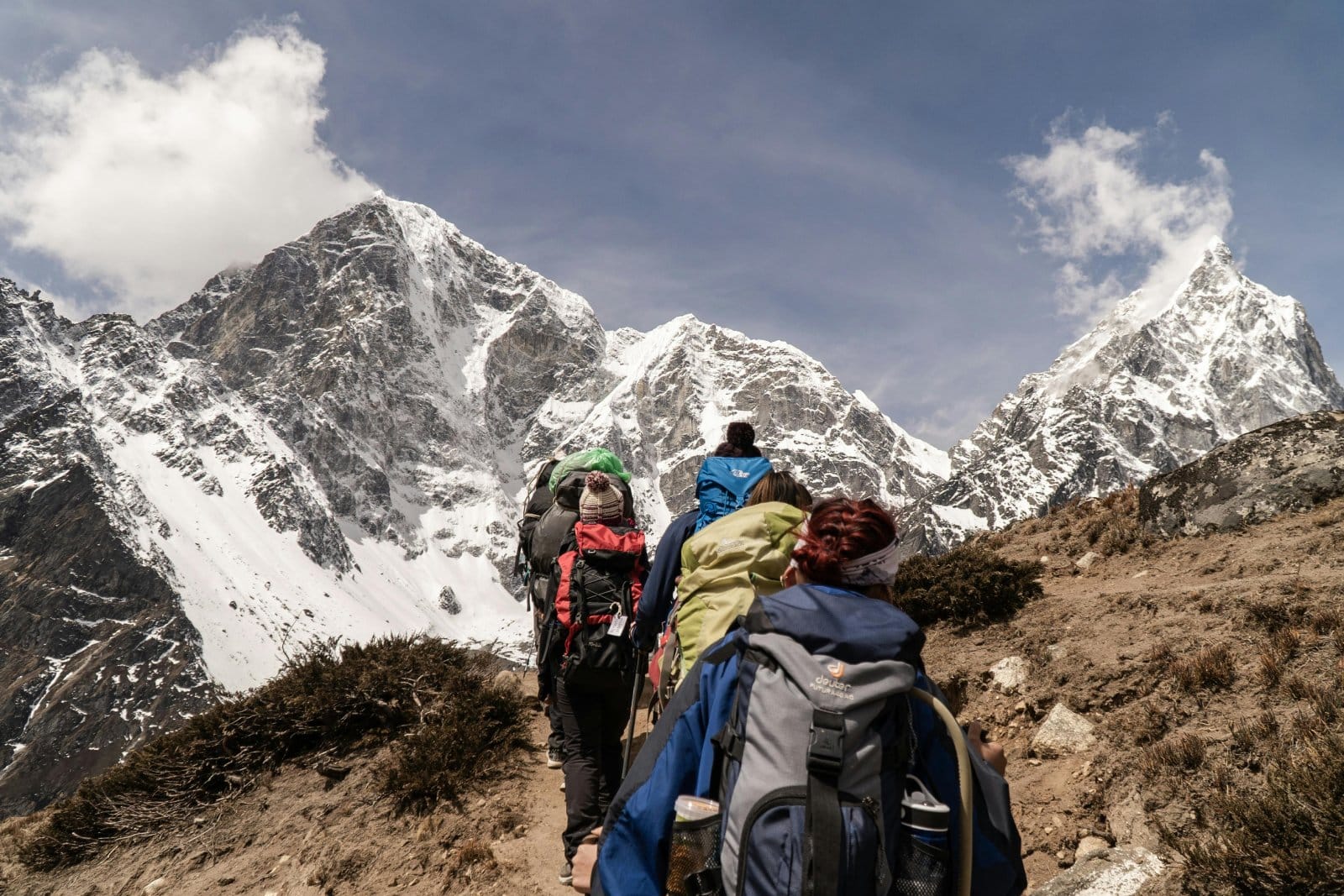
The Bottom Line
Trekking in Nepal is more than a physical journey; it explores some of the most majestic landscapes on Earth. Each destination offers its unique charm, from the world-renowned Everest Base Camp to the tranquil trails of Rara Lake. As you trek through these mountains, you’ll not only witness breathtaking vistas but also immerse yourself in the rich culture and hospitality of the Nepali people. Pack your bags, lace up your boots, and prepare for an adventure that will leave you with memories to last a lifetime.
More Articles Like This…
Barcelona: Discover the Top 10 Beach Clubs
2024 Global City Travel Guide – Your Passport to the World’s Top Destination Cities
Exploring Khao Yai 2024 – A Hidden Gem of Thailand
The post The 10 Best Treks in Nepal’s Majestic Mountains 2024 was republished on Passing Thru with permission from The Green Voyage .
Featured Image Credit: Shutterstock / Olga Danylenko.
For transparency, this content was partly developed with AI assistance and carefully curated by an experienced editor to be informative and ensure accuracy.
More for You
18 Life Rules Jesus Gave Us to Live By
Peanuts by Charles Schulz
Gabby Douglas out of US Classic after one event. What happened and where she stands for nationals
Unplugged: 12 Items You Should Unplug Now To See A Drastic Change in Your Utility Bill
Beyoncé Is a Total Bombshell in a Ruched Dress With a Gaping Bust Cutout
Unsellable Houses' Lyndsay Lamb Says Buyers Are Moving Away From This Color Trend
People Who Don’t Show Empathy Usually Have These 18 Traits
‘They’re not having kids’: NYU professor Scott Galloway says young Americans are struggling and ‘have every reason to be enraged.’ Do you agree?
4 Chain Restaurants With The Absolute Best Chicken Pot Pie And 4 With The Worst
Baking Soda Makes a Great DIY Weed Killer—Here's How to Use It
Sky win first game of season, Angel Reese sets WNBA record
Legendary singer who helped give The Beatles their start dies aged 86
23 Weird Things People Think Only Their Families Did
Here is the true value of having a fully paid-off home in America — especially when you're heading into retirement
25 Restaurants That Actually Use Quality Steak
The Oldest Historic Town in Every State
Here are the 7 states most likely to flip in the Biden-Trump race
Abi Carter wins 'American Idol,' judge Katy Perry says goodbye
‘I’m weary of repeating myself’: How do I deal with rich friends who take $22,000 cruises and book $800 hotel rooms? Prices are crazy enough already.
5 Types of Homes That Will Plummet in Value in 2024
- Now Trending:
- Discover the Magic of Ne...
- Nepali Culture: A Journe...
- Buddha Jayanti – B...
- TVS Ronin releasing in N...
Discover the Magic of Nepal: Best Places to Visit in 2024
Nepal, a land of stunning natural beauty and rich cultural heritage, is a top destination for travelers in 2024. Nestled between India and China, Nepal offers an array of experiences, from trekking in the majestic Himalayas to exploring ancient temples and vibrant cities. Here’s a guide to some of the best places to visit in Nepal this year.
Also Read: NEPALI CULTURE: A JOURNEY INTO TRADITION, DIVERSITY AND HOSPITALITY
1. Kathmandu Valley: A Cultural Treasure Trove

Kathmandu, the bustling capital of Nepal, is a city where ancient history and modern life intertwine. The Kathmandu Valley, encompassing Kathmandu, Patan, and Bhaktapur, is home to seven UNESCO World Heritage Sites. Visitors can explore the historic Durbar Squares, adorned with intricately carved wooden architecture and ancient temples. The Swayambhunath Stupa (Monkey Temple) and the Boudhanath Stupa, two of the most significant Buddhist sites, offer spiritual tranquility amidst the city’s hustle and bustle.
Also Read: Must try Newari Foods in Nepal
2. Bhaktapur: A Step Back in Time

Bhaktapur, one of the three medieval city-states in the Kathmandu Valley, is a living museum of Newari culture and architecture. Known as the “City of Devotees,” Bhaktapur’s well-preserved Durbar Square is a UNESCO World Heritage Site, featuring the 55-Window Palace, Vatsala Temple, and Nyatapola Temple, the tallest pagoda-style temple in Nepal. Wandering through Bhaktapur’s narrow, cobblestone streets, visitors can admire traditional pottery, woodcarving, and weaving. The city is also famous for its festivals, vibrant celebrations that showcase the rich cultural heritage of the Newar people.
3. Pokhara: Gateway to the Himalayas

Pokhara, Nepal’s second-largest city, is a paradise for nature lovers and adventure enthusiasts. Situated beside the serene Phewa Lake, Pokhara provides stunning views of the Annapurna range. It is also the starting point for the famous Annapurna Circuit and Annapurna Base Camp treks. Adventure seekers can indulge in paragliding, zip-lining, and boating, while others can enjoy the peaceful lakeside ambiance.
4. Chitwan National Park: Wildlife and Adventure

For those interested in wildlife, Chitwan National Park is a must-visit destination. As Nepal’s first national park and a UNESCO World Heritage Site, it offers a unique opportunity to see a variety of wildlife, including the rare one-horned rhinoceros, Bengal tigers, and numerous bird species. Visitors can embark on jungle safaris, elephant rides, and canoe trips, or experience the local Tharu culture through village tours.
5. Lumbini: Birthplace of Buddha

Lumbini, the birthplace of Siddhartha Gautama (Buddha), is one of the most significant pilgrimage sites for Buddhists around the world. The tranquil Lumbini Garden houses the Maya Devi Temple, which marks the exact spot where Buddha was born. The area is dotted with monasteries built by Buddhist communities from various countries, each showcasing unique architectural styles and serene meditation spaces.
6. Everest Base Camp: A Trekker’s Dream

No trip to Nepal is complete without experiencing the Everest Base Camp trek. This iconic trek takes adventurers through breathtaking landscapes, traditional Sherpa villages, and stunning glacial moraines. While challenging, the journey to the foot of the world’s highest peak offers unparalleled rewards, including the awe-inspiring view of Mount Everest and the surrounding peaks.
7. Mustang: The Forbidden Kingdom

Mustang, also known as the “Last Forbidden Kingdom,” is a remote and mystical region in northern Nepal. The area was restricted to foreign visitors until 1992, preserving its unique Tibetan culture and traditions. Mustang’s stark desert landscapes, ancient monasteries, and the walled city of Lo Manthang make it a fascinating destination for those seeking off-the-beaten-path adventures.
8. Annapurna Region: Trekking Haven

The Annapurna region offers some of the most popular trekking routes in Nepal, suitable for both novice and experienced trekkers. The Annapurna Circuit, Annapurna Base Camp, and Ghorepani Poon Hill treks provide stunning views of the Himalayas, diverse landscapes, and cultural encounters with local communities. Each trek offers its own unique challenges and rewards, ensuring an unforgettable experience.
Tips for Traveling in Nepal
- Best Time to Visit : The best times to visit Nepal are during the pre-monsoon (March to May) and post-monsoon (September to November) seasons when the weather is pleasant, and the skies are clear.
- Travel Requirements : Ensure you have a valid visa, which can be obtained on arrival or in advance from a Nepalese consulate.
- Health Precautions : Altitude sickness can be a concern for high-altitude treks. Acclimatize properly and consider travel insurance that covers medical evacuation.
- Respect Local Culture : Nepal is rich in cultural traditions. Dress modestly, especially when visiting religious sites, and always ask for permission before taking photos of people.
Nepal’s diverse attractions offer something for every traveler, from spiritual seekers and history buffs to adventure enthusiasts and nature lovers. In 2024, embark on a journey to Nepal and immerse yourself in the enchanting beauty and profound serenity of this Himalayan paradise.
Related Posts

About The Author
सयौ थुङ्गा फूलका हामी एउटै माला नेपाली, Welcome to my webpage. I'm from the Himalayan Country of Nepal. Well talking about me, I like mostly Web programming and Designing and furthermore I like Philosophical literature, Photography, Social networking. And I am Romantic and Sentimental person to some extent. Read more...
Leave a Reply Cancel reply
This site uses Akismet to reduce spam. Learn how your comment data is processed .

- Nepali calendar
- Nepali unicode
- Nepali date converter
- Privacy Policy

IMAGES
COMMENTS
From east to west, Nepal has numerous restricted zones that call for special trekking and travel permits. Some areas of Nepal have restricted zones that forbid arbitrary access without a special permit from the Department of Immigration. Trekking in Nepal's remote regions was forbidden to foreign visitors until 1991 AD. These forbidden zones ...
Explained: All 15 Restricted Area Permits (RAPs) in Nepal for Trekkers, Cost Included 12 6. Rasuwa Gosaikunda RAP. Required For: Gosaikunda Lake Trek, Langtang Gosaikunda Helambu Trek This permit is slightly different from the others in the list as it also encapsulates the religious (pilgrimage) factors in the destination.
Nepal has the most popular & adventure trek routes besides restricted trekking areas as the country itself is rich in cultural and natural he. Nepal Govt. Reged. number: 39829/2005. Tourism License number: 805/2005 ... the decision to keep some places as restricted area treks in Nepal is a strategic approach to balance tourism, preservation ...
Updated on Mar 22, 2024; A Complete Guide To Restricted Areas and the Required Permits in Nepal. Notice: Nepal bans solo trekking for foreigners, coming into effect from 1st April 2023 Trekking in Nepal is a popular adventure activity from low altitudes to high all with splendid views of the hills and Himalayas. Trekkers can choose the trail according to their interest, physical fitness ...
The restricted zone covers Chumnubri Rural Municipality (All areas of ward nos. 1,2,3 and 4). - Humla: A rugged far-western region in the Himalayas recognized for its untouched nature, ancient culture, and access to Tibet via border crossing. The permit fee is $50 per person per week and $10 per person per day beyond one week across all seasons.
2. Restricted-area trekking permits. You usually don't need a TIMS card if you're trekking in a restricted area like the Lower Dolpo or Nar-Phu region. Instead, you need to purchase a restricted-area trekking permit. Some restricted areas charge a daily fee, others a weekly fee, and still others a combination of the two.
The most popular restricted trekking region are listed below: Upper Mustang ; The Adventures in a Restricted Trekking Area Nepal, Upper Mustang, known as the "Last Forbidden Kingdom," is located at 3840m and has preserved its own Tibetan culture over the years since its inhabitants have had little contact with the outside world. The area is ...
The Upper Dolpo Trek is a remarkable restricted area trek in Nepal that allows you to discover the remote western Himalayan Mountains. This extensive journey offers insights into the local culture, stunning mountain panoramas, and the serene beauty of nature, including a picturesque lake. The isolation of the western mountains and the ancient ...
A registered trekking agency is only permitted to trek in restricted areas, and a minimum of two persons are required to get the restricted area permit. The government of Nepal declared 15 areas as restricted areas, and those areas need restricted area permits for trekking.
Post Date: Feb 26 2022 . Restricted Area Treks in Nepal provide unique and remarkable destinations in the less adventure region, around high elevation Nepal Himalayas. Around Nepal, wide scope of beautiful and cultural regions fall inside the confined zone, where guests need to obtain special permits.
Restricted area treks in Nepal to explore the hidden culture and adventure journey around the Himalayas with stunning views of the Mountains. Recommended on : +977-9851142116 (Anjan)
List of Restricted Area Trekking in Nepal Upper Mustang Trek. Upper Mustang is one of the most visited restricted regions in Nepal. The jagged mountainous landscape, ancient cultures, and Himalayan view make the area perfect to explore the place. Although the royalty to trek in this area is high, USD 500 per person for the first 10 days and USD ...
The government of Nepal has imposed stringent restrictions on international tourists entering certain hiking regions. Some specific restrictions and regulations must be followed when organizing restricted area tours and trekking in Nepal. Most of the restricted area is located behind the Himalayan rain shadow.
Nepal's Restricted Regions are areas that remain relatively untouched, preserving their natural beauty and cultural heritage. These areas require special permits for trekkers, ensuring limited footfalls and a pristine environment. Venturing into these regions is like stepping back in time, where age-old traditions remain intact, and nature unveils its raw, unspoiled beauty.
It is recommended to hire a registered trekking agency or a guide to assist with your trek and ensure a safe and enjoyable experience. A travel agency looks after all the essential permits required for the trek. Also, for traveling to restricted areas as well as other trekking areas of Nepal, assistance from the travel agency makes it easier.
Nepal, celebrated for its awe-inspiring landscapes and cultural richness, beckons daring adventurers and curious explorers. While most of the country extends a warm welcome to travelers, there are enigmatic pockets known as "Restricted Areas in Nepal" where accessibility is limited. These elusive zones, though challenging to reach, harbor unparalleled beauty and profound cultural significance.
Trekking in Nepal's Restricted area is a wonderful way to have an exciting and adventurous lifetime experience for everyone. Until 1991, a couple of portions of the remote zones inside the edge of Asian nations were restricted for the outside guests to shield the normal setting and social parts of the various ranges. The regulation had been ...
Trekking in restricted area in Nepal is totally from trekking in the normal areas, as the permit itself is a tedious process. You have to travel with pay for a special permit. It's also mandatory to have at least two trekking members along with specified officer to get access to restricted area permit Nepal. Specified officers are mostly ...
Restricted Treks in Nepal Technically speaking, Restricted areas in Nepal strictly control the flow of foreigners. Most of the trails are used to prohibit the entrance of foreigners, but due to the economic opportunities that tourism brings, foreigners are now allowed to enter, usually with a hefty entry fee.
The Royal Trek (3-4 days) The Royal hike is one of the shortest and easiest treks in Nepal, the Royal trek follows the same path taken by Prince Charles in the 1980s and takes its name from this excursion. Great for trekkers who have limited time and are looking for a light and easy trekking experience.
Restricted area trek in Nepal is an explore the sites of Nepal and needs special permit +977 9851285888 | +977 9851056547 - Kumar | +977 9813853498 - Sushma [email protected]. Home; About Us. Parikrama Treks Teams and Guide; Company Registration Legal Documents; Nepal. Trekking in Nepal Himalayas.
To visit Restricted Areas in Nepal. a Trekking Permit must be obtained from the Department of Immigration, Kalikasthan, Kathmandu. ... Nepal Tourism Board is a national tourism organization of Nepal established in 1998 by an Act of Parliament in the form of partnership between the Government of Nepal and private sector tourism industry to ...
Rising to 29,032ft on the border between Nepal and Tibet, Mount Everest — known as Sagarmatha by the Sherpa people of Nepal — has held an almost mystical allure for climbers and hikers since ...
Best trek to see Tibetan culture, Chorten, caves, 21 days. Kanchenjunga Circuit Trek. The less crowded trail in the east of Nepal and the third highest peak in the world. 21 days. Manaslu and Tsum valley trek. A side trip to the Manaslu circuit trek. 1. Everest Base Camp Trek.
9. Makalu Base Camp. The Makalu Base Camp trek is a challenging journey to the base of Mount Makalu, the world's fifth-highest mountain. This trek takes you through some of Nepal's most remote ...
8.8. Annapurna Region: Trekking Haven. 9.Tips for Traveling in Nepal. 1. Kathmandu Valley: A Cultural Treasure Trove. Kathmandu, the bustling capital of Nepal, is a city where ancient history and modern life intertwine. The Kathmandu Valley, encompassing Kathmandu, Patan, and Bhaktapur, is home to seven UNESCO World Heritage Sites.